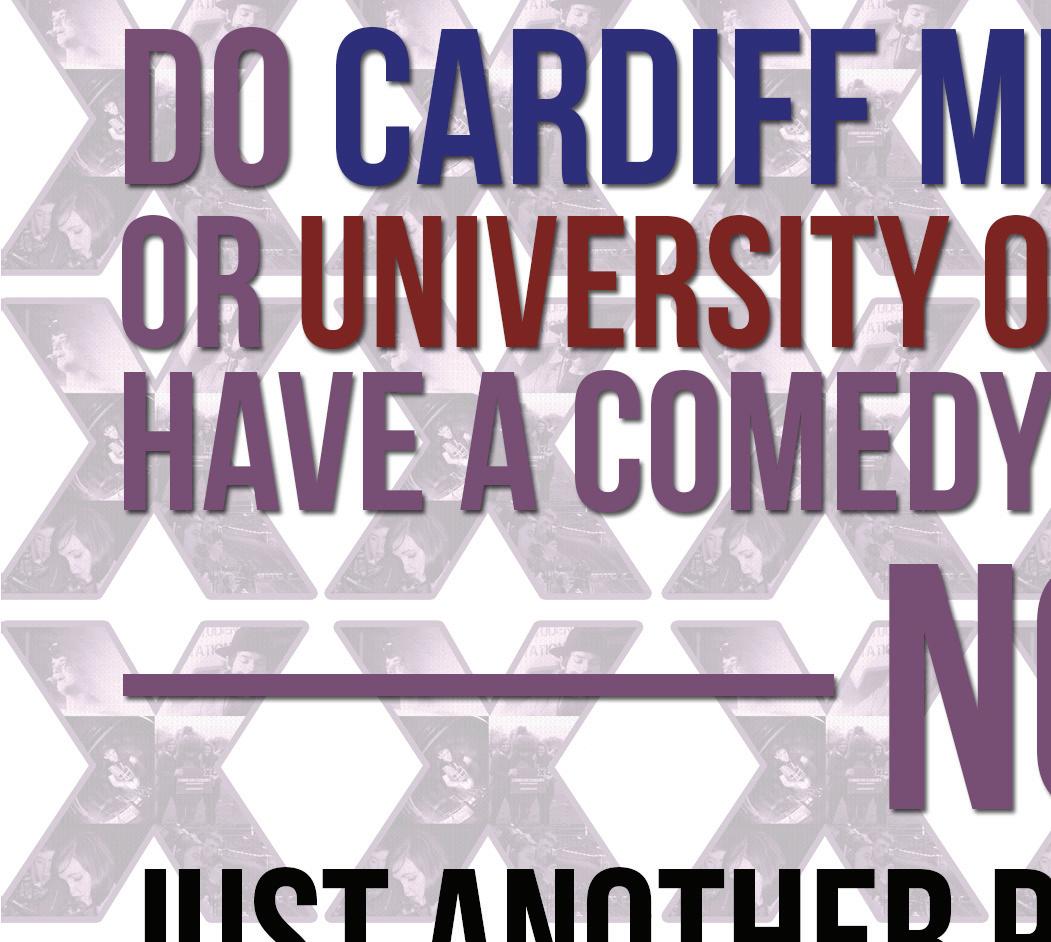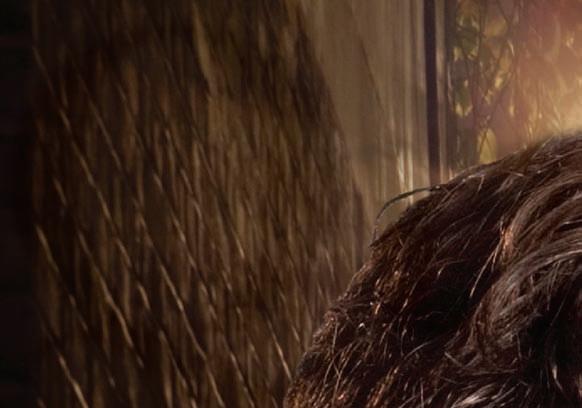


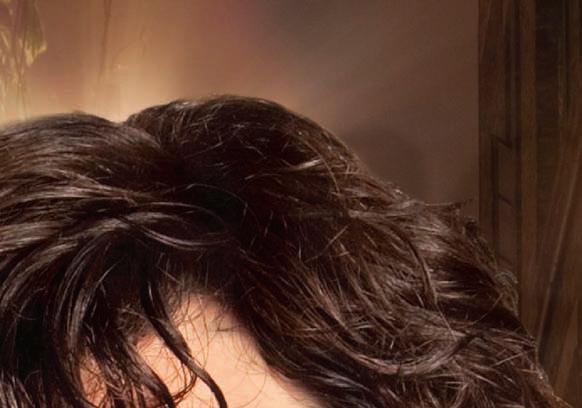
LGBT+ HISTORY MONTH WE SPEAK TO FRANK TURNER PLUS: AN EXCLUSIVE INTERVIEW WITH THE DIRECTORS OF
XBOX ONE & PS4: REVIEWED
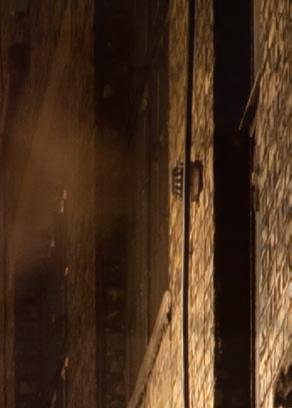

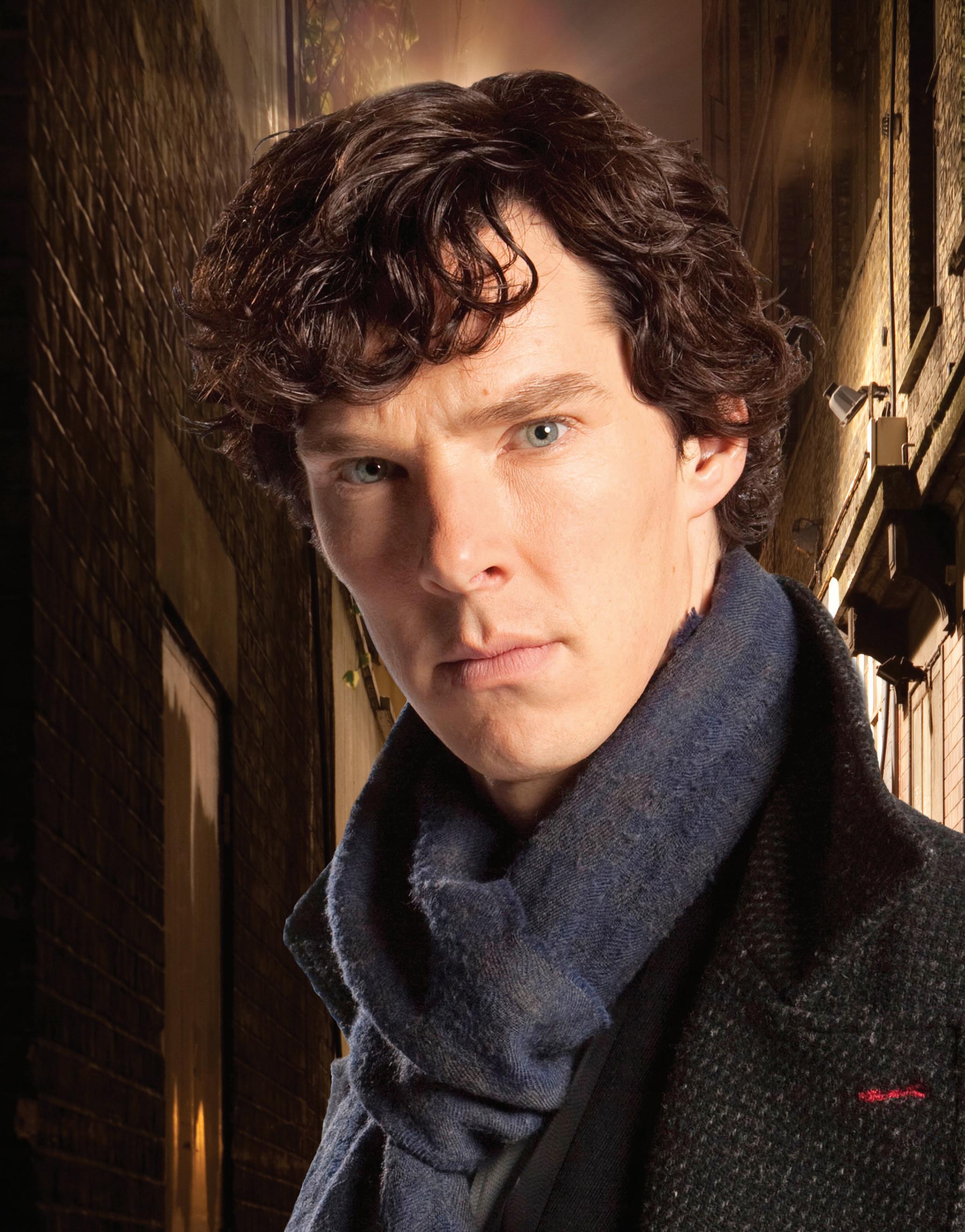

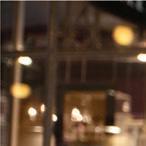
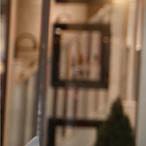
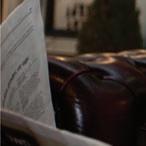
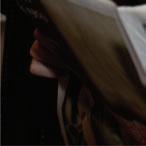





LGBT+ HISTORY MONTH WE SPEAK TO FRANK TURNER PLUS: AN EXCLUSIVE INTERVIEW WITH THE DIRECTORS OF
XBOX ONE & PS4: REVIEWED




























In this issue, we push the boat out for Benedict Cumberbatch and Co by interviewing two of Sherlock’s directors, and spoil the entirety of Season 3 by reviewing every episode of the show’s third season in Film and TV. Fashion and Beauty bring a new photoshoot to the table and sit down with the proprietors of Bring the Faith Social Club, and play mythbusters with all things beauty. Also in the business of confronting myths, Culture look at the public perception of opera, and exhibit the work of Cardiff’s finest illustrators.
Features continue to blaze trails, asking whether our perception of OCD (jokes about my second name abound!) is conducive to the understanding of a crippling condition, and look at what it’s like to live without technology, while Helen Griffiths breaks down university pressures in her column. February is LGBT+ history month, and Quench LGBT+ has continued their campaign to raise awareness of issues surrounding the wider community.
If you’ve ever wanted to holiday a little closer to home, Travel look at where’s worth staying in the UK, before looking at some more influential travel blogs. Food and Drink deliver the goods every young omnivore can’t get enough of - burgers - and look at where to go when you want a quarter pounder, and Music closes us out with interviews from Royal Blood and the one and only Frank Turner Here’s to you, Cardiff.
Happy new year! I’ve been waiting a month and a half to say (write? print?) that, but it’s worth saying - if you’re still reading this, you’ve successfully navigated another semester. Hopefully this term brings you slightly more interesting lecturers and lectures, as well some slightly more interesting iterations of this magazine. If you’ve seen the front page (and if you haven’t, I have no idea how you got here!) you’ll notice I’ve made a couple of changes. I’d like to make more, but as anybody who’s tried to stick to a New Year’s resolution will be able to tell you, the second semester of the year is too late to turn your life around.
Perhaps in an effort to draw attention away from my writing, I’ve moved the contents away from the front page and placed them here - next to an awfully good looking man, because I’ve got my priorities straight. Some people have all the luck; if I had a face that nice, I’d probably be able to make my dreams of world peace a reality. Limited as I am by my average visage, switching up this page and the front page will have to do.
Being serious, the content of this magazine really speaks for itself, and I hope I’ve done more to foreground it. I’ll say this until I’m blue in the face that this is the work of an extraordinarily talented team of overworked writers and editors; I’m still in awe that Charlie Andrews, a month into the job, managed to land interviews with the directors of one of the BBC’s biggest successes.
And I’m envious, because while I have the pleasure of getting a spoilerific look at the magazine before it goes to print, the majority of legwork I do is between my desk and an old printer to make sure we’ve spelt everything correctly. (Also, according to my media law lecturer, facts are apparently pretty important too.)
I’ll keep making changes to the magazine until my duties end, so feel free to get in touch with me or any of my colleagues on by using the details on the page overleaf. I think it’s easy to end up with a really skewed sense of value when you do work like this; none of us get paid, and when you work for free, it’s easy to think what you do isn’t worth that much. But for somebody so regularly self-deprecating (I mean, I described my face as average!), I’ll say this: I value the work we do a great deal, and I value the opinions of our readers just as highly. Sure, we’ve only got three issues left this year, but good ideas are timeless. MOCD








Michael O’Connell-Davidson Editor @mikeocd
Sophie Lodge Deputy Editor @sophiel2013
@quenchfeatures · features@quenchmag.co.uk
Andy Love
Features editor
@andyluvv
Chloe May
Features editor
@chloejayne_
Hattie Miskin
Features editor
@quenchlgbt · lgbt@quenchmag.co.uk
Suryatapa Mukherjee
LGBT+ editor @sugaryDEMON
Emrhys Pickup
LGBT+ editor
Helen Griffiths Columnist @_HelenGriffiths

@quenchtravel · travel@quenchmag.co.uk

Emma Giles Travel editor @EmmaGiles94

Kathryn Lewis Travel editor @KathrynLewis92 CULTURE
@quenchculture · culture@quenchmag.co.uk

Amy Pay Culture editor
@YayAmyPay

Sum Sze Tam
Culture editor @sumtzenbumtzen
@quenchgames · videogames@quenchmag.co.uk

Rhian Carruthers
Video games editor
@RoutineEnvelope

Matt Grimster
Video games editor
@MattGrimster
@quenchfilm · film@quenchmag.co.uk






@quenchfashion · quenchstreetstyle · fashion@quenchmag.co.uk
Jess Rayner Fashion editor @jessie_rayyy
Jacqueline Kilikita Fashion editor
@J_Kilikita
Jordan Brewer Fashion Editor
@JordanAffairs
Sophie Falcon Fashion editor @sophiefalcon1
Dylan Elidyr Jenkins Food editor @quenchfood · quenchfood · food@quenchmag.co.uk

Emilia Ignaciuk Food editor








Charlie Andrews
Film and Television editor, Online editor @CharlieRAndrews
Jade Attwood
Film and Television editor
@Attwoodjade
Imran Bukhari
Film and Television editor
@ImmyBukhari
Jenny Morgan
Film and Television editor @jennymorgan25

SPECIAL THANKS
@quenchmusic · music@quenchmag.co.uk
Tom Connick
Music editor @ginandconnick
Jimmy Dunne Music editor @GrimmyBumm
Hannah Embleton-Smith Music editor @HEmbleton
Charlie Mock Online Editor @Charlie_Mock

The gair rhydd sport-pol consortium, Tom Eden, Elaine Morgan, as well as Anne Porter, Jordan Brewer, Hannah Embleton-Smith, Charlie Mock, Jacob Dirnhuber, Rhian Carruthers, Sum Sze Tam, Ruth Tolerton, Charlie Andrews, Katherine Lewis, Emma Giles and Imran Bukhari for their help on deadline night. Thanks also extended to all contributors.


WRITE FOR US
Want to broaden your portfolio? We meet every Monday at 5:30 in CF10, and the gair rhydd team meet just before at 5. Occasionally we’re in a different place, so check Facebook and Twitter for any last minute rescheduling. Alternatively, email pitches and ideas to any of the above or editor@ quenchmag.co.uk and we’ll get back to you ASAP.
If the grass is always greener on the other side, why bother looking? Aimee-Lee Abraham on New Year’s resolutions and self-betterment
We used to lurk nervously in the self-help section, wary of the stigma housed in its pages, fearful of contagion. We would lie through our teeth to cashiers, improvising tales of the poor uncle who needed a little help in the dating department, hence the caring birthday purchase of Men Are From Mars, Women Are From Venus. We blabbed needlessly about our friend’s body issues, enquiring about hypnosis and paleo and south beach, in search of the best solution so that her money (conveniently placed in your hands) wasn’t wasted on yet another fad.
That’s assuming we had the balls to venture into the self-help section in the first place. Into the territory of the decaying and the desperate, where those with pride daren’t tread. Especially judged are those who are not yet balding or menopausal but in need of self-help anyway. Of all demographics, students are the least likely to be catered for by the self-help industry. Students are in their prime, supposedly too young to have made enough mistakes to warrant a need to rectify anything.
The embarrassing nature of self-help means that the anonymity of Amazon is sought and coveted while shop shelving gathers dust. Having the solution to your problems delivered to your door in plain packaging is so much better than fumbling for change, red cheeked and apologetic.
Arguably, it’s more socially acceptable to walk down the street clutching a sex toy than it is to read anything in public with ‘self’ or ‘help’ in the title. Such material is to be reserved for lonesome nights. It is best kept beneath beds, hidden in trustful nooks and crannies, shielded from view but easy to retrieve when sadness strikes. Ownership is a declaration that someone is truly losing their shit, descending into a pit of failure where the only hope remaining is the slippery grip of a smiling salesman attributed dubious doctor status from the university of life. He offers a helpful hand to pull you out of your own mess in exchange for blind faith and hard-earned cash.
Despite these negative preconceptions, it
appears that things are changing, at least online. Self-help is so trendy it’s trending, in virtual conversations and real life ones, too.
The ‘100 Happy Days Challenge’ is a prime example of the previously private sphere of self-improvement gone viral. Its premise is this; participants capture something that made them happy that day, every day, for 100 days. The moment is shared with the world via a photograph posted to their preferred social media outlet and hashtagged to create a collective scrapbook of positivity that can be easily accessed and explored. The catalyst behind the cause is an admirable one, with creators citing the well-established correlation between the ever-increasingly pace of modern life and worsening mental health epidemics in the western world as their inspiration. Being present in the moment and appreciating the human experience itself is said to be ‘the base for the bridge to long term happiness of any human being’. The challenge forces people to actively appreciate life through their obligation to document their day in a positive light. It asks those involved if they can ‘manage’ to be happy for 100 days straight. Doing so is an apparent challenge considering the 71% drop-out rate, with ‘lack of time’ presented as the main reason people threw in the towel long before the 100 days were up.
It’s no coincidence that the project has seen publicity and participation rise dramatically throughout January. As far as seasonal pressure is concerned, January is the indisputable King of societal expectation, followed closely by February and its connotations with Cupid. There is a reason why self-help, scoffed at for eleven months of the year, is temporarily accepted post-Christmas. As soon as the N.Y.E hangover haze has drifted into the distance, we crave change. We look at ourselves in the mirror and see internal and external flaws carved into flesh. Inspired by the birth of the baby lamb, in awe of leaves and light reappearing, we emerge from comas of wintry discontent and soar forwards into spring. Until we hit a wall.
We tell ourselves with unsupported




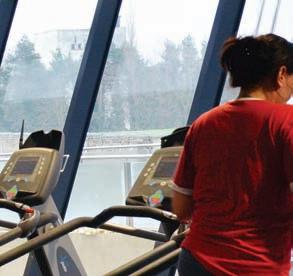


68% of Britons make a New Year’s resolution to get fit; over a third who sign up for a gym membership quit before the 31st of January. (via britmilfit.com)

conviction that this year will be our year. At last we are going to take control. Our bodies become temples, our minds sponges and our hearts healed. These goals are facilitated by an array of apps and websites and recordings designed to keep motivation high. Our smartphones and laptops transform before our eyes into strict but caring maternal figures, reminding us regularly to eat our greens and brush our teeth. Just as we once cringed when lying to our parents or being scalded for naughty behavior, we develop a loyalty to these apps and feel remorse when we do not meet their demands. Trust me when I say that there is something bitterly disappointing about having to reset your ‘days since’ app back to the start just because the exam period led you to consume your body weight in chocolate milk. However fantastic and nostalgic, the slip was still a cardinal sin that violated the ‘clean diet’ my 2014 self promised to follow religiously. Maintained otherwise angelic behavior is meaningless once you get sucked into the vortex of self-improvement. Any violation of the rules feels polluting and unfixable. Normally, such black and white thinking would be deemed worryingly disordered. At certain times of the year, though, it’s expected and encouraged. According to leading psychologist, this is why resolutions fail in 78% of cases.
Seasonal pressures breed all-or-nothing mentalities, desperate to keep up with the moulding and morphing of our peers into better people, we make commitments that just cannot be realistically sustained. Seasonal pressures also cause us to take on more than we can manage. Instead of gradually reaching individual goals, we try to magically conquer them all simultaneously.
What make us truly happy? Typical 100 Happy Days snapshots are as diverse as the people participating. Feet are frequently featured. Feet bathing in bubbles, toes entwined with those belonging to a lover, feet walking alongside a beloved canine’s paws, dancing shoes, flashbacks to muddy festival feet, toddlers on tip toes, clean socks gratefully received after a stressful blister-ridden limp of a day. The list goes on. The humble cup of coffee can be viewed through a kaleidoscope of Instagram filters, slurped and sipped from a vast array of crockery and clutched by hands of all shapes and


sizes. Escapism through literature, music and film act as survival aids. The simple pleasures are the most documented, and the apparent greatest bearers of joy. This is nice to see. Britain is mocked for its unusually high population of miserable moaners and its airborne cynicism, so a dose of positivity cannot be a bad thing, right? Surely indulging in a bit of cheerfulness won’t reduce us to saccharine sops? Generally speaking, happiness encouraged and shared is a wonderful thing. In a world plagued by war and poverty and suffering, genuine snapshots of happiness provide a much-needed breath of fresh air. Even if that happiness is derived from the menial or material. While the sentiment should be applauded, there are problems with the concept of ‘100 Happy
Social media is slaughtering spontaneity. [...] Beautiful moments are interrupted by a need to capture them.
Days’. It provides an ideal platform for the army of Facebook narcissists to do their very worst. Under the protective positivity umbrella, people are free to brag and boast to their heart’s content without fear of responsive criticism. Any objection is met with accusations of bitterness or negativity, rendering the doubtful silent. We are forced to either tolerate the stream of soppy snog-shots and their accompanying nauseating paragraphs or we can remove ourselves from the situation by going cold turkey and leaving the world of social media altogether. That is arguably the only available escape route. Facebook braggers are usually just mildly irritating, inspiring an eye-roll here and there, causing no real damage. Viewed by vulnerable eyes however, Facebook bragging can fuel problems and catalyze selfdestruction. None of us, regardless of our mental wellbeing, are exempt from its effects. Stephen Llardi is a psychotherapist who has run several long-term experiments in which long-term, terminal cases of depression were beaten through patients’ lifestyle changes alone. In ‘trading face time for screen

time’ we are contributing to our own demise. This is not revolutionary; depression is, according to Llardi, absolutely a disease of civilization, emerging rapidly following industrialization and reaching its peak following the online revolution as people grow more and more isolated despite friendship group expansion. Competition and comparison are major contributing factors and they have more opportunity to influence us as social media usage continues to grow. In hunter-gatherer groups, we all had a unique place in the community, a job that only we could perform. Now we are constantly competing for a small number of jobs and forced to watch as others succeed when we don’t. Sat alone at night, the myth that everyone else is out having the time of their lives can perpetrate consciousness and grow into feelings of inadequacy.
‘100 Happy Days’ claims that those who failed the challenge couldn’t spare the time to be happy. Think about that for a moment. What does that say about our culture? Why is it that failure to post photos consistently indicates an inability to enjoy life? Social media is slaughtering spontaneity. Everything is documented and edited and nothing is a true representation. Beautiful moments are interrupted by a need to capture them. Valentine’s Day, just past, should have been a mere excuse to spend time with someone you love and enjoy their company. Its commercial value dictates and distorts it into something grotesque as couples fret over the reception of their gifts and plans, confronted by endless images and whispers of peers who have truly outdone and overshadowed their efforts. Meanwhile, singletons struggle to get through the holiday alive.
How do we overcome seasonal pressures to out-do our grinning peers? We should be urged to escape the constraints and expectation of maintaining an online persona and instead encouraged to spend more time walking around in the bodies we are so very lucky to occupy. If you succeed in doing this, please tell me how. I’m off to cry myself to sleep because Emma went to Paris with Tom. All I got was a grainy and distorted Skype date with a boyfriend who flew away to Scandinavia just before the most romantic day of the year.

With the image of heads buried into their hand-held screens surrounding us, Andy Love examines the way smart-phones have changed our social interactions.
“This one has a better battery life, better definition screen, better camera... It’s also flatter.” Says a girl wearing glasses to two of her peers who listen closely as if she’s a wizard telling a story. Smart-phones progress so rapidly and quickly that they have become essential in everyone’s lives. After working for the past year in a phone shop, it is easy to notice how many people get so excited by the intricate details of new products coming out. But the truth is, very few of them actually know what they are buying or buying into. Many times I have personally asked people “So...why do you want this new phone?” and the reply is usually “Because...it’s the next one, so it’s better...right?”
Smartphones cater to almost half the UK population (48.4% according to eMarketer) and yet most of us don’t use a mobile phone for its primary function – vocal communication. How many people do you actually call on a regular basis? Or do you just use intermediates like Whatsapp, Facebook chat or even Twitter? Some of my friends will actually pick up the phone in a spooked tone if called. Social media has also turned most of us into attention addicts as explored in the show Husbands after one of the main cast posts a bad picture: “But did they comment on it? Like it? Retweet it? Repost it? Favourite it?” Something else that I found out through friends is that social media and Whatsapp has unconsciously turned most of us into “stalkers”. Most will know the anxiety that results from sending a message on Facebook and seeing that the message has been “read”, or the ticks on Whatsapp with the sometimes long wait for a reply. We sit and wonder what is taking someone so long to reply. How hard is it to pick up your phone, right? Maybe you could call...but maybe that would be inappropriate. It is no wonder that when signing up to a contract, you are now given more minutes than you would actually ever use, unlimited texts, but the data...well, for that you pay a bit more. Most people could tell you I am very much “online” all the time. Foursquare can be seen as a “real life monopoly” - I need to tag where I am to earn my points and badges. Instagram can be turned into a “photo diary”, Facebook keeps you in touch with work, friends in the UK and abroad, and finally there’s Twitter where I personally interact with people with a bit more dry humour. However, after getting bored of it all and not having “meaningful” interactions with friends for a bit, I decided that it was time to cut my losses and find out if the smart-phone has become an everyday habit or a necessity. I purchased a Motorola Razr – the iPhone of its time, and an iPod Classic to be able to listen to my music.
Almost
as I just could not be bothered to reply to long messages (no qwerty keyboard which forced me to actually call people). Communication is clearer and more direct when we speak to someone as it reduces the margin for misinterpretation (something that I tend to suffer from as I tend to be ironic/direct through text and it doesn’t translate well). Going to the gym was also simpler as again no notifications or blinks meant I could focus more on working out. What seemed difficult, however, was living without apps. Every time I visited a new coffee shop I could not tag it, I couldn’t take a photo of something I thought was nice and sometimes if I had to speak to someone on Facebook I had to wait until I was back home.
half the UK population has a smartphone, and yet most of us don’t use them for their primary function – vocal communication.
The first good thing – it seems like such a luxury to be able to use a phone for days on end without charging! Two days without having to plug in my phone was a godsend! It was also great during lectures to not have a LED light distracting me, reminding me that I had someone messaging me on Facebook, but during a meeting I kept trying to reach the phone in my pocket every five minutes. It felt like trying to reach an extension of my limb – something that should have always been there but was gone. It also helped a lot communicating with friends
Another thing was planning – I am not the most effective planner out there so it is great to be able to use GPS and check train times on the go. I don’t often use the internet for directions before leaving the house and that has led me to getting lost a few times. I blame this on “instant” technology actually making me lazy so that I didn’t bother thinking ahead, rather than pointing the finger at the smart-phone itself. The experiment was supposed to last four weeks but came to an abrupt halt at the end of the third one – while out clubbing for my flatmate’s birthday someone thought it’d be a good idea to steal my RAZR. I was actually very surprised at that – I mean, really? So I did not survive the fourth week without the phone due to “outside influences”. The outcome? I have learned to control myself a bit more now – I don’t take my phone with me to the gym, taking only my iPod instead. That means I can work out without being disturbed unnecessarily. I avoid texting more now and keep it only to friends who are generally busy. Communication with my best friend has improved massively, to the point where now he will sometimes say “Call me”, instead of typing up his diary on Whatsapp. I have learned how to control myself a bit more with some apps and keep my smartphone now primarily to make calls (I pay for unlimited minutes, I might as well use them). The best thing from the experience is to realise that I don’t need to be online all the time. It is really annoying to have coffee with the top of someone’s head while they stare unflinchingly at their smartphone screen. Sometimes being unreachable is a good thing: when you talk less often you have more to talk about when you see each other again. It also meant that only some people would contact me regularly on the RAZR – it is a sad truth, but using social apps like Facebook chat or Whatsapp becomes so easy when you are bored that you end up creating more shallow connections with people that you are not really friends with. They mostly fill a temporary need and kill time. So smartphones are probably not essential and upgrading every two years for one with a better resolution or camera focus will be unlikely to improve your life massively. Being able to contact your 350 friends on Facebook probably won’t either. Start paying more attention to those who contact you more often and in different ways, people that want to see you regularly for coffee and a chat. Paying attention to those people certainly improved mine.

Toby Mott discusses channel 4’s ‘Obsessive Compulsive Cleaners’ and the perception of OCD as an a cute quirk.
OCD is already radically misunderstood. Within a few weeks of starting University I’d already been asked (half-jokingly) whether I had OCD because of the tidy state of my room, and I laughed it off – but looking back it highlights how deeply embedded the misunderstanding is. I have no issues admitting that I’m an organized guy and that this lends himself to maintaining a clean room, but if folders were sprawled over my desk the morning after a flat party I wouldn’t consider it to be the end of the world.
Even just a quick google search will bring up stories from hundreds of people struggling with OCD
It’s this area where Obsessive Compulsive Cleaners can earn a miniscule amount of praise. Even if it does intend to entertain, it doesn’t shy away from highlighting the extremes of the disorder and how it controls some people’s lives, shattering the perception that it’s something that you can “just get over”. When Jade cries and claims that she’d really like to change because she can hardly leave the house, there’s no impression that it’s set up or put on for the camera – she genuinely looks like an upset and traumatized woman who is desperate for help.
“Obsessive Compulsive Disorder” isn’t any easier to write as it is to say. As so often seems to be the case with the clinical titles assigned to mental illness, just the terms themselves are enough to evoke an uncomfortable and involuntary wince. Despite the tireless efforts of charities such as Mind – the lifeblood of which is public donation – the subject of mental health remains very much a social battleground.
You’d think, then, that such a widespread and affecting stigma would be taken into account by the team behind Channel 4’s recent documentary series, Obsessive Compulsive Cleaners. Following individuals diagnosed with OCD who have a particular penchant for cleanliness, the show documents their pairing with another individual who lives in squalor and waits to bask in their reaction. From a conservatory that’s been converted into a goat barn, to a hoarder whose rooms are jammed with junk, viewers are invited to laugh at and then scorn the extremes that are being presented to them.
12 in 1000 people suffer from severe obsessive compulsive disorder
Take mother of two, Jade, for example. Diagnosed with the disorder, she follows a strict cleaning regime every day (adding up to 40 hours a week) and is so afraid of bacteria that she has to wear plastic sandwich bags over her hands while doing so. Now picture the scene as she walks through a house that’s been taken over by goats – after witnessing droppings in the kitchen and facing the stench of urine in the living room, Jade is understandably distressed. Yet the camera keeps rolling in the name of entertainment.
I’m under no illusions that she has agreed to participate in the programme and is presumably aware as to what she’s let herself in for. On that basis, you might say that she doesn’t deserve sympathy for what she’s experiencing. She’s using her disorder as a springboard to local celebrity fame. True or not, it’s difficult to look past the notion that she is being exploited for what makes her different, and that the serious condition that enforces this difference is being trivialized to the point at which it could - quite worryingly - define how some portions of the audience perceive it.
In saying that, the show obscures understanding in the respect that it presents very stereotypical scenarios; OCD isn’t just about cleaning, and can impact individuals in a variety of different ways. To say that Obsessive Compulsive Cleaners covers the “tip of the iceberg” would be an understatement, and a quick Google search brings up hundreds of tragic stories from individuals whose OCD is crippling them. Imagine spending eight hours in the bathroom because you were feeling anxious, or being diagnosed with depression as a result of consistent hand washing. Imagine what life would be like.
Individual experiences are devestating, and devestating to readbut there is light at the end of the tunnel
Engage with individual experiences and you’ll find them genuinely devastating, but there seems to be at least a flicker of light at the end of the OCD-darkened tunnel. If the show is to be believed, it claims that the experience the program provided resulted in Jade being able to clean with her bare hands and ditch the sandwich bags, which is obviously a monumental step in taking control of her life. However, the show says nothing more about recovery, which raises questions about the presence of ongoing support; now Channel 4 has wrung her dry of entertainment value, has she been left by the wayside?
I really hope that isn’t the case, because only with support (from friends and professionals alike) can individuals overcome their difficulties – and it’s this support that seems to be lacking in society’s nonchalant attitude to mental illness. The Twitter hash tag #OCDproblems would almost be sickening if you didn’t think that those behind the tweets were completely naïve, and although depression doesn’t share a similar hashtag, it is just as badly treated in today’s – apparently modern – world. Ultimately, what stems from all of this is the requirement for awareness and education. Although Channel 4 would inevitably claim that their show does raise awareness, it does so in a manner that is stereotypical, biased, and entertaining –an adjective that I have a difficult time associating with mental illness. Regardless of Channel 4’s definition of responsible programming, overturning these outdated societal attitudes starts with the individual voice. If somebody seems to misunderstand the gravity of any mental illness, delicately raise it with them and they’ll probably be appreciative of the insight and deliberate their perceptions. If you stay quiet, then mental illness and those that suffer from it will always be considered trivial; I’m sure I’m not alone in thinking that a life is worth more than that.
In October 2012 15 year old Tallulah Wilson was hit by a train after years of suffering from clinical depression. In January this year her mother condemned the poor censorship of harmful blogging websites like Tumblr that she believed had fuelled her daughter’s death. However, the inquest revealed Tallulah’s Tumblr account was deleted six days before she committed suicide - on her mother’s request. Today the world of blogging balances between a sanctuary and a snake pit, and there is increasing evidence to suggest that the venture into blogging can have a serious effect on our mental health.
Since the dinosaur years of the internet, blogging has been the backbone of the web. At the moment almost 75 million blogs have been created on Wordpress, and Tumblr has over 44.6 billion (that’s right, billion) blog posts. While we can guess a large majority of these are gifs of Sherlock or Supernatural, it’s undeniable that writing a blog has become one of the most fashionable and celebrated communication forms to come out of cyberspace. Our blog-addiction has led not only to some of the greatest journalistic endeavours of our time, but its power as a tool for personal growth and emotional development, available to anyone with an internet connection, is its greatest achievement.
As with everything else in our lives, there is a growing trend to broadcast our thoughts and emotions on the web. While this can be a healthy emotional outlet, a coping mechanism or a way to process hardships and open up in a non-intimidating environment, it can also shift into something more poisonous. Like Alice down the rabbit hole, more people are slipping into the wormhole of cyberspace with an adverse affect on their mental wellbeing. Even back in 2008 research on Myspace was showing bloggers were more likely to be depressed, anxious and stressed than other internet users. Leeds University found those with internet addictions were much more likely to suffer from depression. Over the last ten years the number of young people being admitted to hospital because of self-harm has increased
by 68% percent. When push comes to shove our addiction to an internet confessional – as well as causing future problems for your cyber footprint – is doing more harm than good.
The fact of the matter is that even though blogging can sometimes be comforting, it can be incredibly harmful. Writing down your feelings in a place you visit everyday is as detrimental as shouting it back at yourself. The temptation to express your feelings just once or maybe twice spirals out of control until bloggers are left feeling more isolated and insecure than before. The internet becomes a stress-free refuge to recoil into whenever life presents itself with a problem. I might be biased in that I always tend to face my problems with a sledgehammer, but frequent late night calls with our wifi are denying us so much more than they are providing.
This is true for us students more than anyone. For most of you it’s the first time moving away from home, the first time moving away from friends to a completely new place, and that can be hard on the emotions. Once that honeymoon freshers’ feeling wears off and the slog through an eleven week term begins it can be really tough. It’s ok to admit that. Deadlines start to pile, the days get darker, phone calls home become less frequent. Last year I got through autumn term by eating my own body weight in Doritos. This year I spent it spontaneously crying at any given moment and drinking more jagerbombs than I care to admit (we won’t talk about the Christmas social, I woke up covered in tinsel and smashed baubles). The fact is that being a student is more stressful than many people think, and the emotional toll can be heavier than most people imagine. When we’re at our most vulnerable, away from the support system we have developed at home, it’s more likely that we will confide in our blogs than in our housemates.
It’s important to note here that I’m not just talking about your tweets about missing the bus. I’m talking more about the deep stuff, about the times when you feel like shit and there is no one else to talk to. There isn’t a person on the planet who hasn’t felt the same thing, and as students

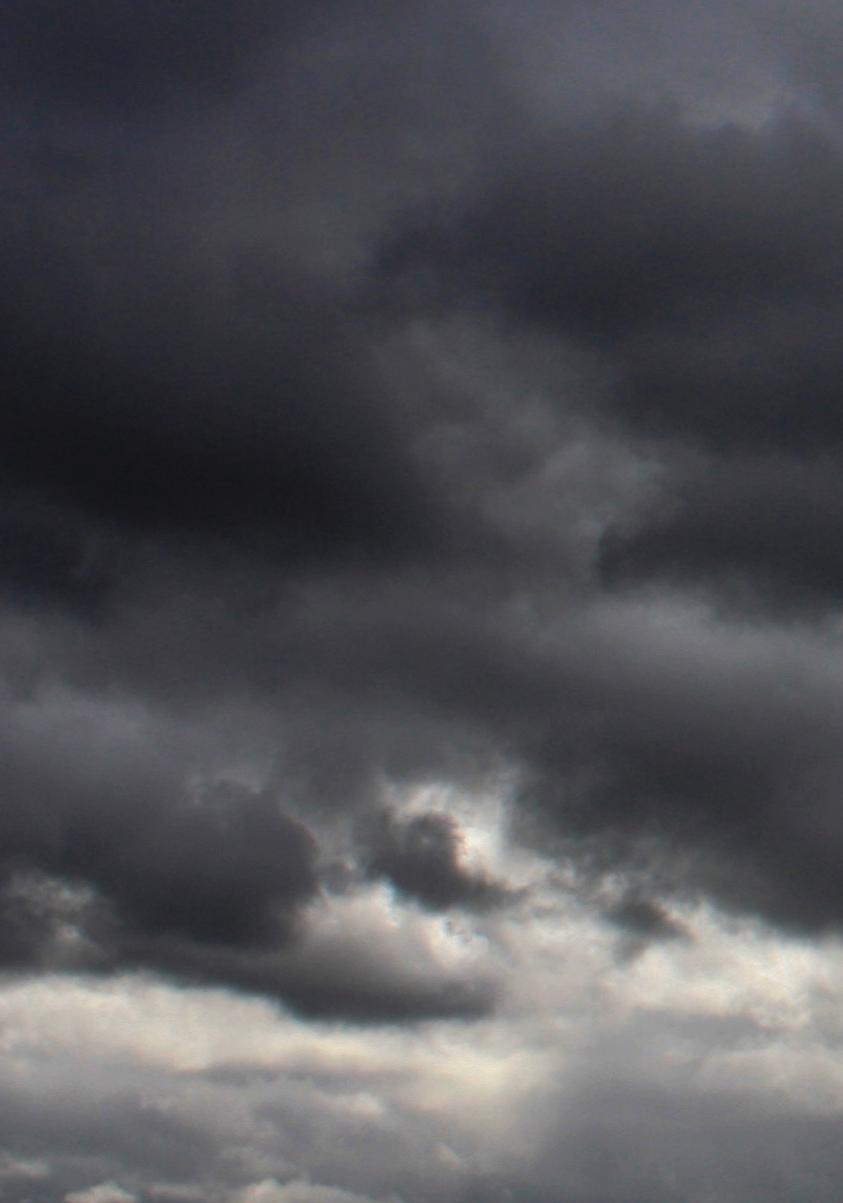

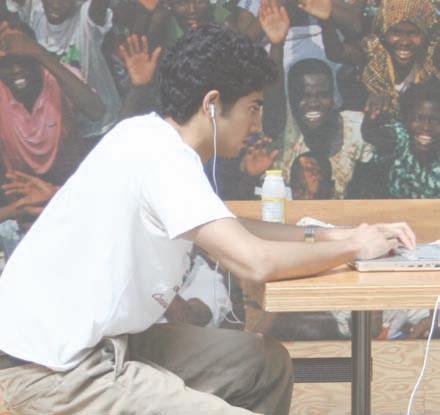

(unsure of where you’re going next, or why you’re even here in the first place) we’re some of the people it affects the most. We’re at an age where we need to express our feelings more than ever because of the changes we are taking on, yet our generation is becoming more inclined to spew these problems into the vacuum of the net than confess them to a close friend.
In theory, blogging is no different to a diary. Letting out your feelings can be a good thing, and blogging can function as your own personal support group. It can definitely feel more comfortable to tell a faceless stranger how you’re really feeling. There are no awkward looks, no call backs or checkups a week later; no repercussions whatsoever. Our own editorin-chief at Quench is currently writing his own blog about his experiences with mental illness; “blogging is probably the most collaborative way of writing. It helps seeing others share their experiences, and articulating mental illness is a way someone can understand what they’re feeling, as well as a way to try and share that feeling with others.” It can help us connect with people in a similar situation, helping us understand we’re not the only ones out there, and help us get the advice we need without fear of judgement. Just writing it down is a form of healthy expression most counsellors would recommend. Combined with our unfortunate British view on mental health, which still makes discussing pressing problems a social taboo, the internet offers an anonymous support system devoid of judgement.
The reliance on a machine as the only way to communicate is a habit that’s hard to break
The problem arises when blogging becomes our only support system. The reliance on a machine as the only way to communicate personal issues is a Pandora’s Box that’s hard to escape. As social networks and online communities grow in popularity our physical social interaction drops, which comes with a whole host of problems regarding insecurity and isolation. Not only are we deprived of that basic human connection that comes from interaction (my mum, a nurse of 30 years, still believes one of the best medications is a good hug), but you tend to retreat more into yourself. Not taking the first step to talk to someone makes it even harder to take that step another time. Instead it just rolls out of proportion and those people never confide in anyone but their computer screens. While it could be said that blogging is like a diary, as it acts as a narrative to structure your feelings, it is a public diary. When you click ‘Post’ you know your entries can be read by anyone, yet their most potent toxin is that they can be read by no one. There is no guarantee - no safety net - that someone really is listening. Nothing can feel more isolating than being surrounded by people and yet feeling ignored, and this same situation applies to the net. It could even be more overbearing since there are even more people to be ignored by. Other users can also become an incredibly negative influence in such a sensitive place. The internet is a haven for harmful forces on all kinds of mental health problems, from pro-anorexia blogs to ‘depression blogs’. Tumblr has recently updated their

community guidelines to draw the line between support and the encouragement and glorification of self-harm. It’s a growing problem on the net that is still hardly being caught by censorship, even though it can be one of the most harmful influences. Tallulah Wilson posted photos of her own self-harm on her blog. Furthermore the ability to find other people blogging about the same things can do a lot more harm than good. While some people may see this as a support group to talk to others who understand us, in the long term they cannot help us move forward. It’s like asking an alcoholic how to stop drinking; you can’t get advice from someone who is stuck at the same obstacle as you because they can’t see past it either.
Earlier this year my eldest brother graduated with a degree in Mental Health Nursing so I asked for his professional take on the subject. His advice to bloggers is to ask ourselves whether it has become a positive or negative force in our lives. “The anonymity and ease of access can really help people to reach out and ask for help and advice, or get something off their chest. There are some people who have no one to talk to.” However the concept is subjective to every person; you need to assess whether the net is actually making you feel happier, or more isolated and insecure. “Like any way of coping, you have to evaluate how it affects the way you feel, in the short and long term. That way you can investigate what works for you.” It’s important to be objective and keep this in mind, for while we might feel immediate and inconsequential relief, in the long-term it may affect us more than we realise.
To watch someone else slowly retreat into a cyberworld can be incredibly difficult, as an outsider it is easy to see their situation from a distance. It might be tempting to try to intervene, but understanding their situation and accepting it can be a lot more effective than obstructing their only form of expression. Like everything else in our lives we need to understand the use of moderation, not only in our own internet lives but in our interference with others as well.
The internet isn’t the dark, deep pit of paedophiles and murderers the media makes it out to be. While my mum still thinks computers can steal her credit card information, we know on a day-to-day basis the internet is benevolent. Bearing this in mind, however, it is also important to keep track of our own internet usage; it’s part in our lives has become ever-more dominant. Tallulah Wilson is an extreme example of a dependence on blogging, yet she also illustrates the importance of finding a system of support. It may seem like the negative images she was exposed to were generating her depression, but they were actually keeping the worst at bay. We shouldn’t be naïve to the consequences of internet reclusiveness, yet we should not be ignorant of their benefits. We need to acknowledge our use of the net and blogging and decide whether or not it is an influence we want –not need.

For LGBT+ History Month, Lubna Anani presents an overview of all the rights we have achieved while delving deeper into areas that require further battle.
We have come a long way since the 1969 Stonewall riots that started the LGBT+ rights movement. We now have a Queen who endorses same-sex marriage in England and Wales, a pope who gave a shrug and said “who am I to judge?” when asked about gay Catholic priests, and equal marriage laws in 15 countries as of yet – besides the 17 states in the US with legal same-sex marriage.
Still, many countries are increasingly hostile towards LGBT+ people. Take Russia, for example, where recent anti-gay laws have sparked a wave of brutal gang violence against gay youth, 20 years after the country decriminalised homosexuality. This month, with the eve of the Sochi Olympics on its grounds, Russian lawmakers are due to debate a bill that could strip same-sex couples’ custody of their children.
Weighed against LGBT+ rights progress in the rest of Europe, Russia’s incongruous hostility is reminiscent of many countries in Africa where homosexuality is illegal. Just last month, Nigeria passed a law criminalising anyone who “promotes gay rights” with a 10 year prison sentence. In neighbouring Cameroon, anti-gay abuse is only worsening. Attention was drawn to Cameroonian intolerence with the recent death of Roger Jean-Claude Mbede, a worldwide icon for gay-rights activists after his high-profile prosecution for homosexual activity. Obituaries worldwide told of how, years prior, he had been sentenced to jail for up to three years for sending a text message reading “I’m very in love with you” to a man working in the Cameroonian government. Gay people in Cameroon can face a sentence of up to five years in jail, where they can expect to face the kind of mental and physical
abuse that Mbede suffered during his incarceration at Kondengui Central Prison. Meanwhile in South Africa, there has been a rise in “corrective rape” with the intended consequence of “turning” the victim straight. In total, there are 38 African countries where homosexuality is illegal.
State-sponsored homophobia is also common in the Middle East. In Iran, while transsexualism is officially recognised and accepted, homosexuality is punishable by death. Ironically, former Iranian president Mahmoud Ahmadinejad denied the
In Iran, while transsexualism is officially recognised and accepted, homosexuality is punishable
by death
existence of gay people in Iran when asked about the country’s execution of two gay men by an Ivy League audience, “In Iran we do not have this phenomenon,” he declared. “I do not know who has told you we have it.”
Lebanon, praised by many as the first Arab country to have an LGBT+ advocacy group, has also been the subject of human rights violations with increasing police ill-treatment of gay people and trans-women routinely subjected to ‘anal probe’ examinations and beatings. A 2013 Pew poll revealed that in Egypt, Jordan, Tunisia and the Palestinian territories, over 90 per cent of the population believe that homosexuality should not be accepted in society.
Unsurprisingly, the poll found that in countries where religion is central in people’s lives, few condone homosexuality.
In Asia, Vietnam passed a law granting same-sex couples the right to hold weddings and live together, India has witnessed a backlash in LGBT+ rights when, just last month, the Supreme Court reinstated the gay sex ban after it had been decriminalised four years prior. Hundreds of angry activists filled the streets of New Delhi in protest of the top court’s ruling, arguing against the re-establishing of the 153-year-old law introduced in colonial times. The ruling, criticised for revealing deep prejudices, stated that “lesbians, gays, bisexuals or transgenders constitute only a miniscule fraction of the country’s population,” deeming them insignificant.
Elsewhere, LGBT+ rights are improving. In Latin America, Argentina’s Gender Identity law passed in 2012 gives transgender people the ability to change their gender marker on birth certificates, only two years after it allowed equal marriage and adoption rights for same-sex couples. In Mexico City, where same-sex marriage is legal, anti-gay slurs are no longer protected under freedom of speech laws. Same-sex marriage in Uruguay came into full force just last year, and Colombia now recognises samesex civil unions.
While backlashes in the LGBT+ civil rights movement can be disheartening, even minor breakthroughs are cause for celebration. But don’t be too hasty to open the finest bottle of Veuve Clicquot just yet. The fight for equality is still long from being over, at least internationally. In the meantime, keep the champagne on ice.
Name: Alexandra Howells
Progress in Section: 2013 turned out to be a pretty exciting year for LGBT+ rights, movements and most importantly, the people. Under Barrack Obama, America has made giant leaps towards equality for same-sex marriage, with ten states recognizing the same-sex right to marriage: Maryland, Rhode Island, Delaware, Minnesota, California (again), New Jersey, Hawaii, Illinois, New Mexico and Utah. Moreover, England and Wales, Brazil, France, New Zealand and Uruguay passed jurisdictions to acknowledge marriage between gay people. There is obviously a long way to go when it comes to same-sex equality, with many countries taking steps backwards like Russia, India, Uganda and Nigeria, to name a few. But, what has been startling is the worldwide response to these regressions, with threats to boycott the Russian Winter Olympics; the support for equality and civil rights for gay people has never been higher. Progress in sport has also been rather significant this year, with a number of wellknown athletes coming out. For example, Jason Collins became the first out, gay, male basketball player in North America and was followed by Brittney Griner and many more notable sports persons. It is a shame that the necessity of ‘coming out’ still exists. However, when people in the spotlight come out, they become role models for the thousands of homosexual children/teenagers and even adults all over, looking to find some comfort that they are not alone. This is especially important when it comes to sports because of the underlying homophobia that has been present in many teams throughout the years.
Inspirational role models: If I had to choose one it would have to be Edith Windsor, who, in her ninth decade, sued the American government to refund the estate-taxes she had to pay when her wife, Thea, died. She won the battle and went on to fight for the civil rights of gay people and played a part in defeat of section 3 of DOMA (the Defense of Marriage Act.) It was declared unconstitutional, and it meant that gay couples would be entitled to around 1,100 more federal provisions. Progress I’d Like to See: In the short term, I would very much like to see Russia change the heartless stance it has towards homosexuality. And in the long run, a recognition of equal status for gay people in all forms of life: be it marriage, sports, jobs or generally in the public eye. It would be cool, to hold my girlfriend’s hand in public without people staring or seeing it as something other than the norm.
Name: Suryatapa Mukherjee
Progress in Section: Bisexuality was first officially recognised in academia when Alfred Kinsey created the Kinsey scale. The scale established that homosexuality and heterosexuality were only two extremes on a spectrum of sexual orientations. In spite of that, bisexuality as a sexual orientation has had some difficulty being accepted as a reality.
Female bisexuality was still accepted as ‘real’ before male bisexuality was. As recent as the early 2000s a number of studies were conducted to prove that male bisexuality in fact didn’t exist. Bisexuality is increasingly understood as a reality even if its concept may not be clear to all. We have a growing number of celebrities shedding the closet and coming out as bisexual without giving a damn. The most recent and popular example of this would be...yes, Tom Daley. Sexual orientations like pansexuality and polysexuality may still be incomprehensible for some outside the LGBT+ community, especially if such people have not yet discovered the fallacy of the gender binary. Thus, these orientations are not as well known as bisexuality yet; but they have taken roots in our lexicon and are here to stay. People are learning about them everyday, and Google can testify to that.
Inspirational People: Laci Green is a part-time sex educator on YouTube and a full-time pansexual. There is no limit to how much one can learn from her, whether about sex and sexuality, or about being a decent human being. Basically, I worship her and you should too. Look her up. Now.
Progress I’d Like to See: There are still many who question bisexuality and others within its umbrella. Bi-erasure is quite prevalent in the media where bisexuality is not recognised. Much like when several news outlets decided to brand Tom Daley gay even though he clearly came out as bisexual. Biphobia is experienced both within and outside of the LGBT+ community. As several studies have discovered, this double discrimination has led to a higher risk of mental health problems among bisexuals. Bisexuals are also less likely come out than homosexuals. It is ironic that homosexuals who happen to be biphobic, often echo the homophobia that they had been (and sometimes still are) subjected to, with notions that bisexuals are promiscuous and the carriers of STIs and STDs.
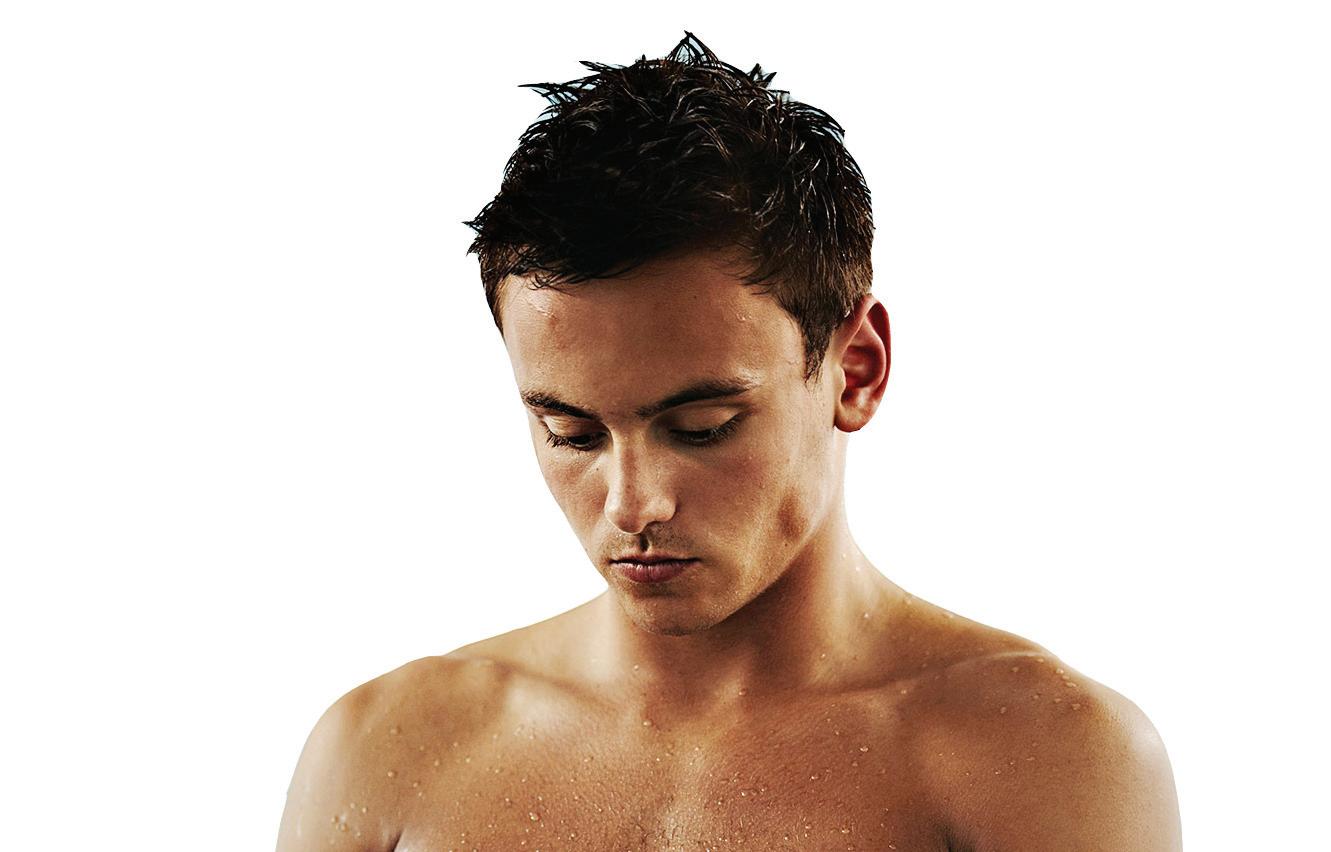
February is the annual LGBT+ History month and so in this issue Quench are going to be looking at some of the life-changing progress that has been made in the different areas of LGBT+ throughout history. From the new same-sex marraige bill to influential role modelswe celebrate just how much has been done for the cause.
Name: Kevin McGowan
Progress in Section: Medical transition has only been an option for the last few generations of transsexuals, and techniques are still constantly evolving. Access to hormones, surgery and other treatments through the NHS are among the most basic steps to equality; these provisions are deplorably slow and difficult to obtain, but the fact that they exist at all would astonish our historical counterparts. Discrimination on the basis of sex reassignment has been illegal for employers since 1999 and for service providers since 2008. The 2004 Gender Recognition Act introduced the Gender Recognition Certificate, a means to be acknowledged as your true gender under the law. However, this only applies to those transitioning from male to female or vice versaif you don’t count as either, you’re out of luck. Regarding public toilets, it doesn’t matter what bits you have - the law says to use the ladies’ or the gents’ according to how you live your daily life, and laugh in the face of anyone who tries to stop you (that part is technically optional). Sadly, changing attitudes takes longer, and many of us still
face abuse on a regular basis. Community solidarity is crucial to fighting back against unlawful treatment. Social media enables us to publicise our experiences, anonymously if necessary, and receive support from our peers. Inspiration Role Models: Laverne Cox is not only one of the first trans* actresses to play a trans* character in a mainstream TV series (Netflix’s Orange Is The New Black), but also speaks powerfully and eloquently when she advocates for our rights. Her observations on the intersections of trans*phobia, misogyny and racism are fascinating, and her ability to remain patient and positive in the face of these struggles should serve as an example to those who have it easier.
Progress I’d Like to See: I could fill this whole magazine with demands for the future of the trans* movement. Let’s educate children about dysphoria before they hit puberty and discover it for themselves. While we’re at it, let’s teach them to respect other people’s gender expression, so that the next generation of trans* people might escape some of the harassment and violence that characterises our lives today. Let’s break down ignorance by taking control of how we’re represented in the media - not as punchlines or sob stories; but as whole, healthy individuals. Ultimately, let’s eradicate the gender divisions at the core of our thinking which strangle the individuality of not just trans* and non-binary people, but cis women and men, too. Whether or not you feel the need to change it, you are more than the M or F on your birth certificate and deserve to be recognised as such.
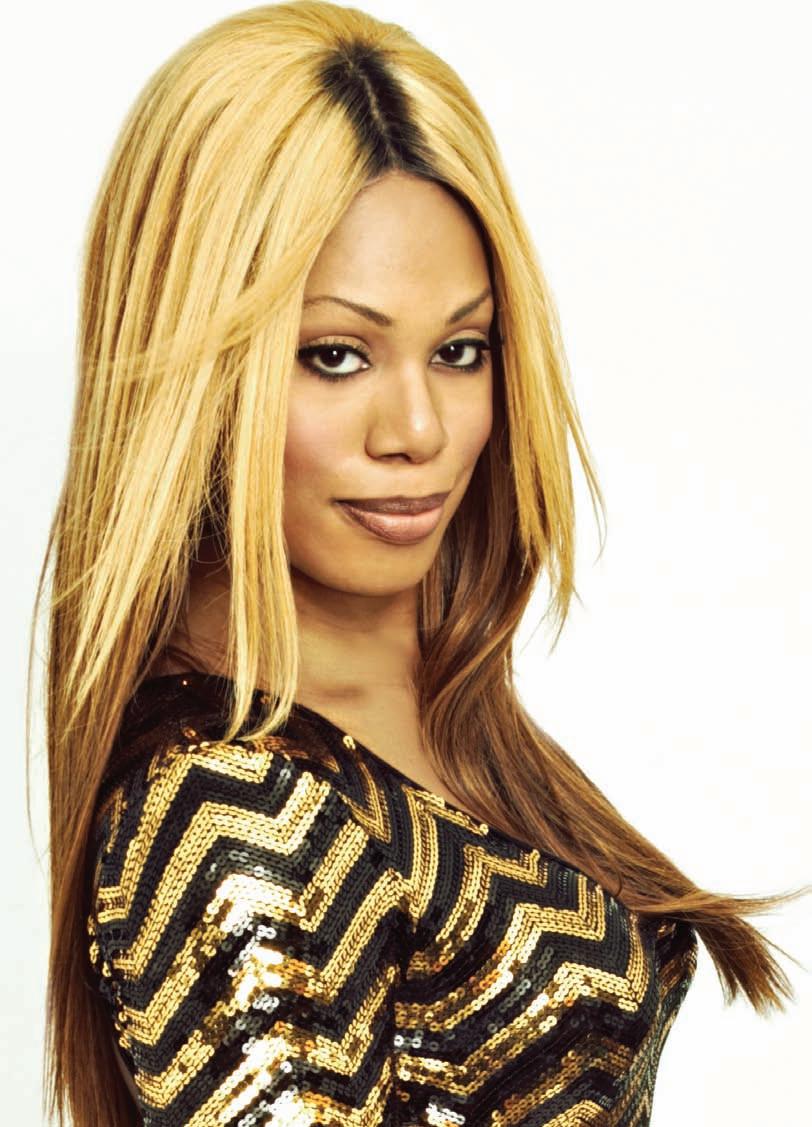
Name: Jake Smith Inspirational People: David
Jay is an American asexual activist who is best known for creating the
Asexual Visibility and Education Network (AVEN) website in 2001. Asexuality is a sexual orientation, characterised by a lack of sexual attraction towards others. In high school David Jay experienced many of the difficulties that asexual people feel. The feeling they may be ‘broken’. Finding one’s place in a sexualised society. But a community exists today, largely due to his efforts. AVEN is the world’s largest online asexual community with over 70,000 members as of 2013. It provides forums, FAQs and a way for asexuals to talk in a safe and welcoming environment. Beyond AVEN, Jay has been featured in numerous articles and helped raise awareness of asexuality through television interviews.
Another plus individual that springs to mind is Tony Briffa. Briffa was elected as the world’s first intersex Mayor in 2011. Intersex individuals are biologically neither male or female, and may have the biological attributes of both sexes or lack some of those attributes associated
with one sex or another. Representing the people of Hobson’s bay in Victoria Australia, Briffa has been open about his intersex identity and has been a keen proponent of the intersex community.
Progress in Section:
Whilst Asexuality is not new, its status as a recognised sexual orientation has been established quickly, in part due to the popularity of AVEN. AVEN inspired pride marches started to be held in the US and UK in 2009. There’s been increasing media interest, with a prominent six part series on asexuality in the Huffington Post in 2013.The American States of New York have enshrined in law legal protections for asexual individuals and the 2011 documentary (A)sexual chronicled and analysed the community’s rise.
When a child is born intersex, its parents will often follow what has long been the standard medical advice, to have doctors perform surgery to help the child conform to a fixed gender category. This can lead to an intersex individual growing up to identify with a gender different to the sex which resulted from this surgery. In Germany for example, doctors can now register a child as X on their birth certificate, hopefully reducing the pressure on parents to make surgical decisions their child may later regret they made.
Progress I would like to see: There are a wide variety of people that consider themselves plus and I’d like to see these identities cease to be overlooked in the public debate. However someone identifies, or even if you are unsure your identity, everyone deserves to live in a kind and equal society where you can be happy with yourself.
Transitioning to male within an all-female environment made the last few years of school very hard. More so, when I was encountered by people who could not understand me and felt it was their place to try and stop me. Heeding advice from LGBT+ people I began to get very defensive, and hid away from the questions which left me feeling very isolated.
I couldn’t help thinking that there was something fundamentally wrong with this advice, however. After all, how can you preach tolerance when you force people outside the circle? It was in fact one of my greatest allies who told me that, but she hadn’t always been an ally to me - far from it.
Nobody is born to hate, but we are all raised in different families, with different ideologies and views. I know that had I not been born transgender myself, I would probably hold a very different view on trans* people and indeed the whole LGBT+ community than I do now. Not because I am full of hate, but because from the day I was born I was being raised under a set of beliefs and never had a chance to explore them, or understand more about them.
An anonymous trans* student talks about his experiences with allies. In my opinion anyone can be an ally, if we can help them become one.

I realised that just as it had taken time for me to explore these new opinions and beliefs, it would take others time too. I allowed people to ask me questions, I tried to educate people, I showed compassion and tolerance when I saw people were trying to change but maybe hadn’t quite got there yet, and it worked. Whereas before, cutting out people who did not understand had led to loneliness and isolation, now I feel the most accepted that I have ever been.
As for my friend, despite her refusal to accept me at the start, she took some time to get her head around things, she learnt from me, she gained knowledge and her opinions changed and now she teaches about LGBT+ tolerance within her church. I think that’s a great testament to the understanding and tolerance of human nature, if only someone takes the times to want to change.
My allies are the people who accepted me straight away and the people who didn’t. In my opinion anyone can be an ally, if we can help them become one.
Discrimination is a blunt force - it doesn’t care about nuance, or about an individual’s struggle
Quench Editor-in-chief Michael O’Connell-Davidson talks about his experience as an ally to the community.
Would you deny gender equality? The idea that feminism is something to be sneered at or ignored is antiquated. We live in an era where one day we might see everybody become a feminist: a largely male-dominated establishment is seeing repeated challenges from those of every gender. We are all tired of injustice; tired of comments about women taking maternity leave, as though birth was a crime; tired of starting salaries that favour one sex over the other; tired of jokes about male air hostesses.
Yet fewer people are sympathetic towards issues surrounding sexuality and gender expression, and it’s for this reason I would identify as a straight cis ally: a straight, cisgendered man who believes that everybody should enjoy the same opportunities, whether they be social, economic, or otherwise. That’s a liberal viewpoint, but that doesn’t necessarily make me a liberal, a voter of one party or another, or some kind of bleeding-heart abolitionist. It makes me a human being,
14
and, unlike some, I believe that we are all equal - from the cradle to the grave. Discrimination is a blunt force - it doesn’t care about nuance, or about an individual’s struggle. Discrimination is a broad brush that erases all detail in a world that’s becoming less and less sympathetic to the plights of the individual. So I identify as an ally because I care about nuance: in standing against discrimination, I understand that no two people are the same, and none should be forced to fit into any box or template. I believe that gender and sexual expression are a right, because I believe, fundamentally, that everybody has the right to love.
This should not be a controversial view. We live in hope that one day it won’t be - but for genuine societal change, we need activists within and without the LGBT+ community. So I identify as a straight ally, and if you believe in freedom of expression - not just in terms of the way you speak and act - you should too.

When this goes to print it’ll be February, and if you’re anything like me your New Year’s resolutions will already be going out of the window. It’s my final term of university, and there are so many things I need and want to do that my head feels like it could explode at any minute. Time management is tricky at the best of times, and never more so than during your years at uni. I mean, not only do we have our degrees to worry about, most of us also want to make the most of our time here by joining clubs and societies (in my case, student media). We also meet so many people at uni that it can be hard to keep up with everyone, let alone friends and family at home! Then there’s keeping active and healthy to think about, work experience and grad schemes to apply for… the list goes on and on. Which begs the question, HOW exactly are we meant to stay on top of everything? So I’ve decided to look into little techniques that can help us to balance these different areas of our lives. And that’s what this month’s column is all about.
It’s my final term of university, and there are so many things I need and want to do that my head feels like it could explode at any minute
First off, let’s go back to those New Year’s resolutions. Mine are always pretty much the same: exercise regularly, eat healthily, get toned up in time for summer, etc. As is traditional, I’ve normally broken them or given up by the time February rolls around. My theory is that the reason so many of us consider ourselves failures when it comes to New Year’s resolutions is simply because we set our standards too high. I don’t know about you, but if I give myself the goal of “eating healthily”, consequently every piece of cake I eat, every portion of cheesy chips, comes with a side order of guilt. And I feel like I’ve failed. Nevermind if I’ve eaten well for the rest of the week, somehow I forget about all the fruit and veg and “superfoods”. Which is just silly. So instead, from now on, I’m resolving to ignore the guilt, and focus instead on how good I feel when I do have a healthy meal. Plus, we all need treats sometimes, right? Similarly, as far as exercise goes, I think in the past I’ve had the view that I have to go somewhere to get fit - be it the gym, a swimming pool, or the park for a run. Often, I feel like I don’t have time to dedicate
an hour or so to going to the gym, and the grim, grey weather we have to put up with at this time of year makes going for a run SO unappealing. My solution? I’ve decided to explore home workouts. This doesn’t necessarily mean spending loads of money on a celebrity workout DVD – you can find anything online these days, and YouTube is full of fantastic workout vloggers. Whether you’re looking for aerobics, stretching, yoga, strengthening and toning exercises, it’s all there! You don’t have to set aside loads of time either; if 15 minutes is all you have to spare, guaranteed there’ll be a whole host of videos to suit this. Personally, I’ve found that putting aside about half an hour in the morning for exercise works well for me – it helps to wake me up and means I start the day feeling like I’ve already achieved something! Okay, so what about all the other things we need to divide our time between? If you’re in your final year, like me, you probably also have the daunting prospect of “after uni” hanging over you. This fast approaching, seemingly endless and terrifying time has become personified as a really annoying villain in my mind. It butts its way into conversations where it isn’t welcome, it constantly threatens us with the idea of never seeing certain friends again after graduation. It’s ALWAYS THERE. Yet there are things we can be doing to make it more bearable, like applying for jobs, grad schemes, internships… anything that means we’re filling that post-uni time with something. As important as this is, though, it can be so hard to prioritise these applications in the here and



now, when there are so many other demands on our time. Sometimes, when things get busy day-to-day with uni and student media, I need a little reminder that there’s also the future to think about.
So what solution did I come up with this time? Brace yourselves… I got a blackboard. Bear with me on this one...
I made this blackboard last summer, more as a room decoration than anything else, but it’s come in really handy as a giant to-do list. I’ve split it up into different sections that reflect the main demands on my time – currently, “uni”, “media”, “applications” and “other”. I find this helps me to keep my thoughts in order, plus it’s so big and occupies such a prominent position in my room that it doesn’t let me forget about things. If you don’t have a blackboard, a whiteboard or pin board would work just as well, or even a giant piece of paper! Get creative. It feels great when you tick things off, too. Little victories, eh?
I hope this column hasn’t sounded too much like a self-help article. When I was thinking of a topic, I decided what I really wanted to do was take some of the things that have been stressing me (and a lot of my friends) out and turn them into something positive. Or, at least, find realistic, simple ways to deal with them.
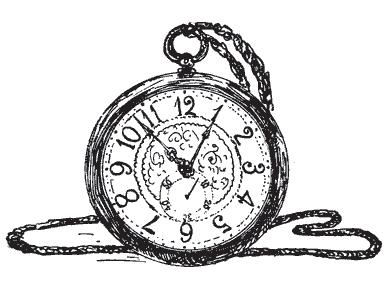
As a result of clichéd American films many are often too quick to assume that clashing is a bad thing. It isn’t necessary to match your shoes and blouse to look like you have your life together. In fact, drawing from the trends of the S/ S14 runways it’s arguably discouraged. Too long has the love affair between statement colours red and pink been stifled. With the hazey vibes of Valentine’s in the air throughout Febuary it’s the perfect pairing.
If you’re not confident enough to pair the colours yourself, the simplest way to wear this trend is in a readily concocted dress or shirt. Topshop offer an
extremely sassy colour block tunic which would be a guaranteed winner for any evening affair. If you are feeling brave however and want to push the boundaries of this trend then try mixing it up with patterns as well as shaped. Geometric patterns made up of different shades of pink and red were very prominent in many of this SS14 collections aswell as many highstreet stores.
Pastels and florals are always pretty, they’re a sure fire winner. But if you want to make an impact and turn some heads this spring then the clash is the way to go.


‘Dressing well is a form of good manners’ - Tom Ford.
If you’ve already failed on your New Year’s resolutions then Ford’s mantra can count as a second resolution as most clothing stores have taken down the A/W13 sales and replaced them with S/S14 trends.
The beginning of Spring/Summer heralds the optimism of the New Year and looks forward to the promise of better weather, as if the faint sound of summer festivals can be heard just by looking at the various pastel shades appearing in stores. At this point in time, EDM still dominates the contemporary music landscape, which is represented sartorially by the booming street wear style.
16
Expect to carry on seeing fivepanel caps and increasingly gaudy designs on t-shirts from brands such as thfkdlf and Obey.
One standout piece for menswear S/S14 is the parka jacket. The khaki colour provides a good transition from the dark autumnal colours into lighter spring shades. The shapeless silhouette of the parka has eked into other designs, as looser, lower-crotched jeans have begun a quiet resurgence from a number of brands. Skinny may well still be king, but expect a few new experimental fits.
Continuing from A/W13, bright shades of orange have appeared in S/S14 portfolios including Agi&Sam, a design duo who recently collaborated
with Topman, while Burberry have also featured canary yellow as part of their trends. Increasingly brighter shades will play an important part in distinguishing S/S14 as a standout season.
It’s not quite spring, and it’s definitely not summer but this provides a good opportunity to check out various brands and get an idea of the kind of trends that look to feature over the next few months. A combination between different silhouettes and contrasting Spring/Summer colours should prove this season to be an exciting step away from A/W13.
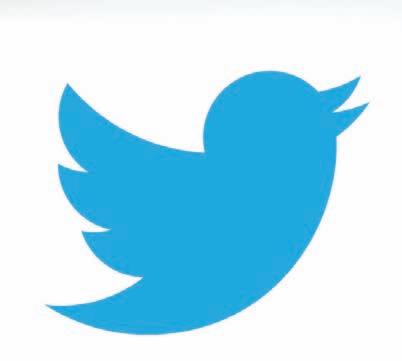






 Conor Brown
Conor Brown
@BuffaloBoutique
We’re back people! Can’t wait to see you all in Feb, all the info is here: http://t.co/kUvMEmSof7
@alexa_chung
Rainbows are a thing of beauty, a marvel, a wonder... until they’re spinning in a small circle on your laptop. Then they can fuck off.
@instyle_UK
The dip-dye trend isn’t going anywhere. Here are the styles you should try... http://t.co/3KjFdBaRWZ
@QuenchFashion
Paris S/S14 Haute Couture Fashion Week is really whipping up some spring shopping urges! #PFW
@ChloeHowl
Well dressed boy in Norway. Great layering. Great colour schemes.
@milkteef
Sunday rage. A retired magistrate says to dress ‘wisely’ around men, so do shops scrap window displays for the sake of shoplifters? #bbctbq
@VintFashWales
Lovely to be part of the #vintagefamily - we are loving your support! Thank you everyone! #vintagecymru

Keep the Faith Social Club is neatly situated in Royal Arcade, just off the hustle of the Hayes. The barber-come-tattoo parlour complements the other business in the arcade, providing a safe haven of vintage charm met with a modern twist. Whether you are looking for a new haircut, a wet shave, tattoo or body modification, Keep the Faith have the staff and skills to provide a top quality service in a happy and friendly environment. The staff are very accommodating to find a style and look that suits you, whether that be classic styles or a new take on an old tradition.
It can often be difficult trying to develop a strong clientele, how have you managed to create a buzz around the business?
Keep the Faith doesn’t really give anything away about what you do as a business, what was the reasoning behind the branding?
We wanted to maintain a clearcut and decisive feel with a sharp edge, which is why we settled on our name. Keep the Faith is striking yet not very indicative of our business as we didn’t want to sound cheap and tacky but more classy and classic. We decided to implement the social club element so that people could feel as though they were becoming a
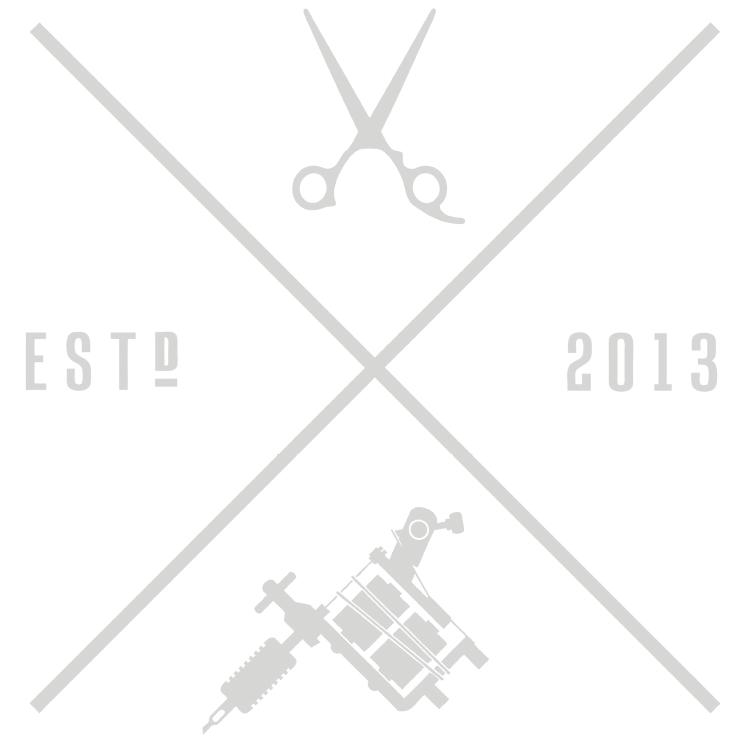
turn up any later than our opening time of 10am are normally too late to be tattooed! So make sure to get there early!
part of something, a secret club, a members-only type deal! We will be branching this out further in the near future!
We decided to keep our “look” on a similar line; bold and striking but also classy, both in our logo and our general shop styling. A slightly colder or cooler edge on a vintage style trying to update it to modern culture with some classic references (for example, the sofas). We wanted to be monotone for this reason too, keeping it simple and elegant. No exaggeration, nor flaunting; clean, clear, simple and classic.
Since we opened our store in Cardiff, we have had interest from local magazine features, as well as interest from multiple photographers, just like the collaboration with Burbidge Studios and Quench for this fashion shoot. We have recently ended a competition for free tattoo time on our facebook account. Implementing support via facebook/twitter/instagram/ linkedin is helpful and we appreciate the effect social media can have for a new business.
However, our busiest offer days would be our Flash Fridays. This is where on the first Friday of each month a sheet of multiple designs are tattooed at a single set price. This can attract around 60 clients in one day (7.5 people per hour). This is usually so busy people who
The business seems to accommodate mainly men, would you say this is true?
We have a barber and a unisex hairstylist so we are able to create both men and womens cuts and styles with ease although we are focused mainly on traditional mens cuts. Our tattoo artists all have their own unique style and preferences so cover a very wide range of styles and subjects each with a vast amount of knowledge in their areas. Our staff are top quality professionals with a good sight into their industry. So regardless of gender, we can help and advise.
For price lists and contact details, please see the last page of the fashion shoot.

TAMER:

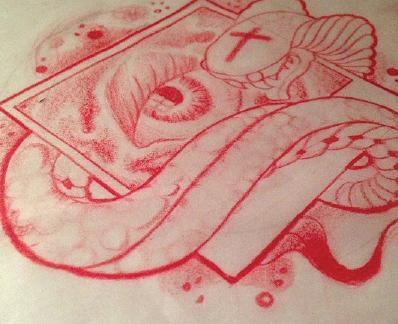


Green and navy checked suit jacket - Topman
£110

Green and navy checked suit trousers - Topman
£50
White button collar slimfit shirt - Ralph Lauren £85
Racing green bow tie - Asos £6
Pocket square silk in navy - Topman £5
Ankle boots with buckle strap - Topman £65
EDWARD:
Charcoal cut and sow checked blazer in greyTopman £85
Grey herringbone leather look sleeved blazer in mid grey - Topman £85
Navy and grey checked suit waistcoat - Topman
Charcoal and blue checked trousers - Topman £38
White shirt - Topman £18
Shoes - Topman £45
Dexter knitted bow tie in navy - Reiss £49
Glasses round brown - Rayban £128
KAY:
Charcoal jacquard tapered skinny trousers in Grey - Topman
White collar skull and cross bones shirt - Zara
39.99
Dogs tooth tie black - Asos £12
Brogues in oxblood - Topman £50

“[with Keep the Faith], we didnʼt want to sound cheap and tacky, but bold and classic. We want people to feel like theyʼre a part of something.”





Price Lists:
Keep The Faith have very competitive prices for student-friendly style.
Mens’ dry cut - £15
Mens’ wash and cut - £17
Head shave all over - £10
Beard trim - £7
Beard style - £10
Womens’ cuts are all by appointment only - contact number is 07597785288
Tattoo prices are £60p/h, 2 hours for £110 or 4 hours for £200. However they prefer to price by design so that they can spend a little more time and effort on the client for a set price.
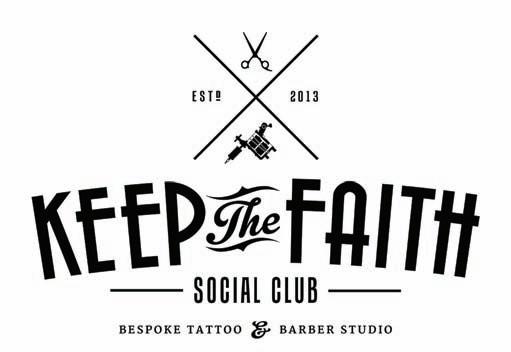
For fashion videos please visit our website: cardiffstudentmedia.co.uk/
Acknowledgements:
Art Director - John Burbidge (Burbidge Studios)
Assistant Art Director - Abi Burbidge (Burbidge Studios)
Photographers - John Burbidge & Abi Burbidge (Burbidge Studios)
Videographer and Film Editor - József J-l Rácz
Models - Edward Parks, Kay Griffiths & Tamer Latif
Stylist and Retoucher - John Burbidge (Burbidge Studios)
Photo Editor - Abi Burbidge (Burbidge Studios)
Hair Stylist - Paul Tyler (Keep the Faith Social Club)
M.U.A - Rahima Serena Begun
Runners - Sophie Falcon & Danielle Burbidge (Burbidge Studios)

This photo shoot was art directed and produced by Burbidge Studios. Burbidge Studios is a family business of talented young professional photographers, photo editors, filmmakers, art directors and stylists. With experience under their belts from elite photographers Nick Knight and Jason Evans, as well as production houses, CrossDay, Apart Films and BBC, these are just a few examples of the calibre of their work and where this business is headed. Each sibling from Burbidge Studios brings a diverse range of experience to the table meaning that they specialise in multiple sectors from fashion & art photography to film. The Burbidge Studios team are available to hire. For more information please contact: burbidge.studios@gmail.com, or find them on Facebook

Q 24
Words: Jacqueline KilikitaFALSE. As much as you’d rather not know this, it could be detrimental to both your appearance and overall health. Unfortunately many salons are guilty of the ‘double dip’; putting the same wax applicator into a pot of wax and then onto your body. This means that many wax pots are a breeding ground for bacteria and it’s made worse by the hot temperature of the wax itself. Bacteria found in wax pots can cause painful boils, rashes and nasty skin infections that can actually lead to scarring. So, next time you go for a wax, make sure the salon is both clean and reputable. You can also buy DIY wax kits in places such as Boots. If that seems like a bit of an effort for you, it is always easier to fall back on to those trusty Veet Easy Wax Strips.
TRUE. Omega 3 is an essential oil needed for both growth and strength. Taking a small capsule every day will drastically improve flaky nails that are prone to breaking or chipping as well as keeping your skin soft and supple. Omega 3 also has the added benefit of keeping your brain functioning healthily, so if there is any vitamin you want to introduce into your daily routine, make it this one!
TRUE. Filing nails in different directions or back and forth will only weaken them and, what with the cold weather probably contributing to the brittleness of your nails, that’s the last thing you need. Like most of us who can’t afford the luxury of a manicure every other week, make sure you invest in a salon quality nail file and buffing kit. Choose only one direction to take the nail file in, and file down to your desired shape. Use the buffer to add a shine to natural nails and to remove any skin.

FALSE. Face masks actually work by drawing out the skins’ impurities but they are often left sitting on the surface of the skin if the face mask is not washed off properly, or even if it is left on for too long. Your pores can become blocked with bacteria and this can cause a bout of zits rather than clearing them up. If you are going to use a face mask, make sure that you wash your hands and face thoroughly beforehand, otherwise you will be spreading dirt collected throughout the day into your pores.
TRUE. Everyone suffers from a pesky patch of cellulite here and there, even supermodels like Kate Moss! But if you’re desperate to banish the unsightly lumps and bumps, there are a number of superfoods you can eat to make the apperance of cellulite noticably better. Choose foods that cleanse the blood such as almonds and goji berries which are filled with minerals and good fatty acids. Don’t forget the obvious treatment, though, and remember to top up on water throughout the day. Always having a bottle to hand will hydrate the skin and flush out the toxins that produce cellulite.
FALSE. This is a beauty faux-pas that students are always guilty of. It’s so easy to fall into bed after a night out and forget to remove all traces of the make-up you so painstakingly applied a few hours ago, but it’s also terrible for your skin. Leaving your make-up on throughout the night will only clog your pores and this can lead to spots and blemishes. If you’re too tired to take off your make-up with a remover, then invest in some fragrance free wipes that are simple and effective.
Travelling has been popular with students for centuries. From modern trips to Amsterdam to Byron’s year out (both undertaken with surprisingly similar goals in mind), students have always had a certain wanderlust. Taking larger trips like inter-railing in Europe or spending a few weeks in Thailand is, of course, a worthy, interesting and life-validating thing to do. However, it takes a lot of money, time and organisation: rising fees just compound the problem. So I propose a solution for the travel hungry student: take a trip right here in South Wales (with maybe a dash of England). Over the last few months, I’ve experienced a days travel for under £15 and just an hours journey on the train in 7 different locations: Bath, Barry Island, Bristol, Caerphilly, Cardiff, Chepstow and Swansea. The fifth one might seem a little odd but let me explain...

Bath is the furthest I was willing to travel from Cardiff, and therefore costs the most and takes the longest to get to; go for a whole day or a gig if you can. However, it is well worth the effort – Bath is full of eye-catching Georgian buildings, has a scenic riverfront and is stuffed to the brim with other old gems like the Roman Baths, cathedral and narrow market streets. Overall, it’s a must for a romantic day out with your significant other, budding historians or those who simply want to enjoy fancy tea and cake. Or all of those at the same time, that works too.
Would recommend – shopping, historical sightseeing, the River Avon

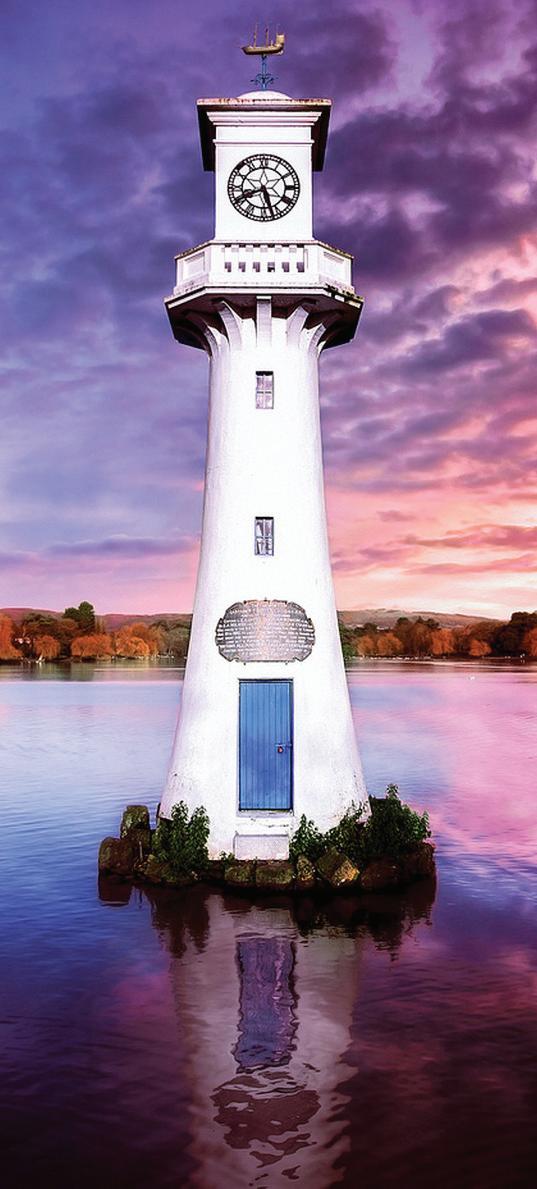
A trip to Barry Island is a pilgrimage... for Gavin and Stacey fans, at least. Whether you’re familiar with the show or not, Barry Island provides a significant change of scenery for little travelling. The right train will take you out across the causeway and onto the ‘island’ itself, where you can enjoy a cracking choice of beaches (Whitmore Bay being the main one), ice cream and such. Even in the winter, Barry is a great place to go from the centre of Cardiff to gain some fresh sea air and a refreshing change of pace.
Would recommend – Whitmore Bay, Gavin and Stacey sightseeing, coastal walks

Though Cardiff might seem to be an odd destination for students living here, just bear with me a moment. Most of a Cardiff student’s time is spent in a mere sliver of the city, nestled between the city centre, Bute Park and Cathays. Sure, people go to Cardiff Bay occasionally, and plenty of people live in the near-side of Roath, but Cardiff is so much bigger than that. Before you go down to Cardiff Central to voyage further afield, take the time to look around the different areas of Cardiff, especially if you’re a first year used to halls: Parks, cafes and photogenic views can be found more easily than you think.
Would recommend – anywhere along the Taff, Whitchurch, Roath, the Bay and Llandaff.

You’re a student in Wales; you need to visit castles. History buff or not, you’re a student in the capital of a country with more high quality castles than anywhere else in the world. So, as well as visiting Cardiff Castle (that goes without saying), you need to see what Caerphilly has to offer. Caerphilly Castle is memorably and mesmerizingly massive, and contains so many layers of walls and fortifications that you can easily spend your whole day in there. The town centre beyond is small but pleasant and well-equipped. It’s cheap (especially for students) to visit, and there is truly no other castle that can equal it.
Would recommend – the castle (!)
Chepstow may not be a familiar name to many Cardiff students, but its unassuming nature hides a surprisingly enjoyable destination for little travelling. In many places, Chepstow feels like a Welsh attempt at a Cornish port town, with smaller hills and a little more space. The town centre is appealingly rustic as a result, whilst retaining plenty of modern shops and independent cafes, a local museum and a cracking castle. The River Wye offers pleasant walks, as well as the amusing opportunity to cross the border into England in moments on foot.
Would recommend – the castle, crossing the River Wye, the oldfashioned town centre

Dylan Thomas once described Swansea as ‘an ugly, lovely town, sprawling... by the shore’. I think it describes it quite neatly. Parts of Swansea are a bit ugly, but you can still come away having had a really nice visit. Besides the change of pace from Cardiff, there’s an excellent beach (if you’re willing to trek to it), a town centre full of good shops and best of all, a really good indoor market. It’s a great place to browse, selling all manner of Welsh foods (laverbread, anyone?) – buying hot Welsh cakes is a (delicious) necessity here. Swing by the Dylan Thomas museum as well – English student or not, it showcases the man’s way with words wonderfully.
Would recommend – the Dylan Thomas museum, the market, the beach
It’s pretty big, Bristol. The size of the city and the ease of travelling there – it may be in England, but it’s a simple enough train journey – which means you could go to Bristol every week and be left with plenty of things to do there by the end of your degree. As well as the usual student entertainments (Bristol has a large student population like Cardiff, including a renowned music and comedy scene), Bristol boasts more history than you can shake a stick at. Even if historical architecture, cathedrals and ships (the SS Great Britain) aren’t your cup(s) of tea, Bristol should suit anyone looking For a day out in a larger city than Cardiff.
Would recommend – SS Great Britain, Cathedral, indoor markets, Old City




Like many final year students too scared to face up to real-world demands and find a job just yet, I’ve recently been planning a post-University gap year to Australia and parts of Asia. Whereas, in years gone by, I remember my parents pouring over endless brochures, atlases and travel guides before deciding on that year’s summer holiday, my first thought when planning my travels was to turn to the internet. In this golden age of technology in which everyone and their grandma has a blog, it is now easier than ever not only to travel the world, but to share your experiences with millions of other people along the way. As opposed to often out-of-date guides and the slanted advice of a travel agent in need of the commission, travel blogs offer a free and absorbing way to hear fellow travellers’ experiences and recommendations for exploring fantastic, fascinating new places. There are an estimated 200 million travel-related blogs on the net, with hundreds more being launched each day, but amongst the turgid, dull ones are some truly original, interesting blogs written by people from all walks of life.
James Ayles gives us an insight into the best blogs out
Whilst some of the best blogs are from first-time travellers, with whom you share every wondrous moment, there is now a whole profession of full-time travel bloggers out there, many of whom have been doing it for decades and have the stories to match. Aussie native Chris Richardson’s blog is packed full of stuff to keep you reading for days at a time. From his Vegemite Challenge to a precise breakdown of how to survive on a tight budget as well as a whole host of stories and tales from his time travelling the globe, Chris’ blog is a must-read for anyone in need of inspiration or ideas for their own adventures. His Travel Tips are useful and inventive, and can save a rookie traveller from the expensive mistakes he admits to making himself many times.
www.wherethehellismatt.com
Matt Harding’s blog started out as a way to keep his family up to date on his latest ventures. Thanks to the videos of him dancing badly in iconic places across the globe, which have garnered millions of views, Matt has become something of a poster-boy for middle-aged, first time travellers. Watching through some of his dozen videos, each taking in a new landmark with a supporting cast of thousands, will stir a sense of adventure and excitement in anyone, and will leave you dreaming of the endless possibilities that travelling can bring.
Undoubtedly one of the best travel blogs around at the moment, One Way to Kathmandu is the work of British graduate Anna Purna Mellor, who previously ran the outstanding new music blog flyingwithanna.com. Upon graduating, like many young adults fresh out of University, Anna decided to travel the world. As the blog title suggests, she had a clear goal for her travels, this being India and the home of her namesake, the Annapurna mountains. Whilst only 6 months old, this travel blog is already packed with outstanding array of photographs, new music and uplifting anecdotes from her encounters, such as spending International Human Rights Day in the Dalai Lama’s hometown. Anna gives an awesome perspective on the world around us and explores places that most people wouldn’t even consider.



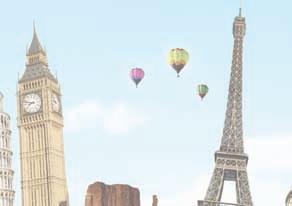




With a new year, comes new resolutions and a monsoon season hitting Cardiff, it is easy to escape into a world of travel dreams. Anne Porter, Emma Forbes and Sophie Moore let us into their personal travel aspirations for 2014.
The pearl of the Indian Ocean, the hidden gem of the Subcontinent, the teardrop shaped island. Filled with intrigue and wonder, I wish to visit Sri Lanka while it is still relatively undiscovered. It has always been a desire of mine to explore Asia and studying Literature of the Indian Subcontinent this term has increased my sense of urgency to visit. My 36 year-old cousin, who has travelled to a greater number of countries than the number of years he has lived, commented: ‘I thought I was well travelled until I visited India and Sri Lanka’. I need to experience the same sense of awe that he has felt. However, it is not only the rich history, hospitable people and pristine beaches which attract me to the island. During my gap year, I planned to travel to Sri Lanka and work in a school for orphaned children, many of whom had lost their parents as a result of the tsunami of 2004. Unfortunately, this plan fell through and ever since, I have felt that I must go to Sri Lanka at some point in my life. I have to complete what I purposed to do. Could 2014 be the year during which I fulfil this deep-rooted dream?
Emma Forbes


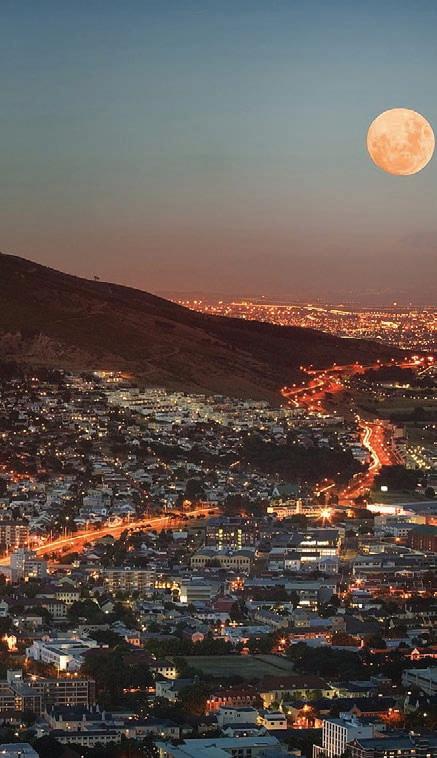
Think Romania. Think Bram Stoker’s Dracula, stray dogs and old castles, no? Think again. I Interrailed solo around Eastern Europe last summer and visited this stunning country, which, I won’t lie, took me greatly by surprise. Having explored just a small part of a sizeable nation, I eagerly want to return. Capital city Bucharest is next on my list. The site of a Communist revolution in 1989, the city’s recovery is in full swing. Romanian plum brandy alongside the standard cheap beer of Eastern Europe help to make this a lively city. An assortment of historic sites lie scattered around the city – see the second largest building in the world, visit where the former Communist leader Ceauşescu is buried, admire a selection of art, or if you’re feeling lazy (or enjoyed the cheap alcohol a little too much…) then there are a variety of inexpensive cafés open all hours. Eastern Europe is becoming ever more popular with the backpacker - it is good value and full of wonderful sights. Get there before tourists discover it!
Anne PorterSouth Africa is a large, vibrant and incredibly beautiful country. From the subtropical coastline of the Eastern Cape to the rural expanse of the northernmost province of Limpopo, this majestic landscape displays some of the World’s most outstanding and diverse terrain. With eleven officially recognised languages, it is the cultural hub of the African continent and each of its nine distinct provinces boasts their own unique reasons to visit. During the warmer months of November to April head for the city of Cape Town, which, situated beneath the backdrop of Table Mountain, is one of South Africa’s most visually striking destinations. From here, travel along the forested coastal plains of the Garden Route, where the 200km stretch between Mossel Bay and Storms River Mouth will take you on a sublime journey through rivers, mountains and sandy shorelines. If this doesn’t appeal, why not try the country’s eastern flank, best visited during the cooler months of May through to October. Here you’ll find Johannesburg, the economic hive of Africa; its towering skylines, eclectic streets and friendly citizens make it quite unlike anywhere else in the country. Or perhaps the Kruger National Park, where the wild landscape is populated by an impressive number of species, including: 507 types of bird, 336 trees and 147 mammals. With such a display of diversity, there’s no limit to what South Africa has to offer.
Sophie Moore


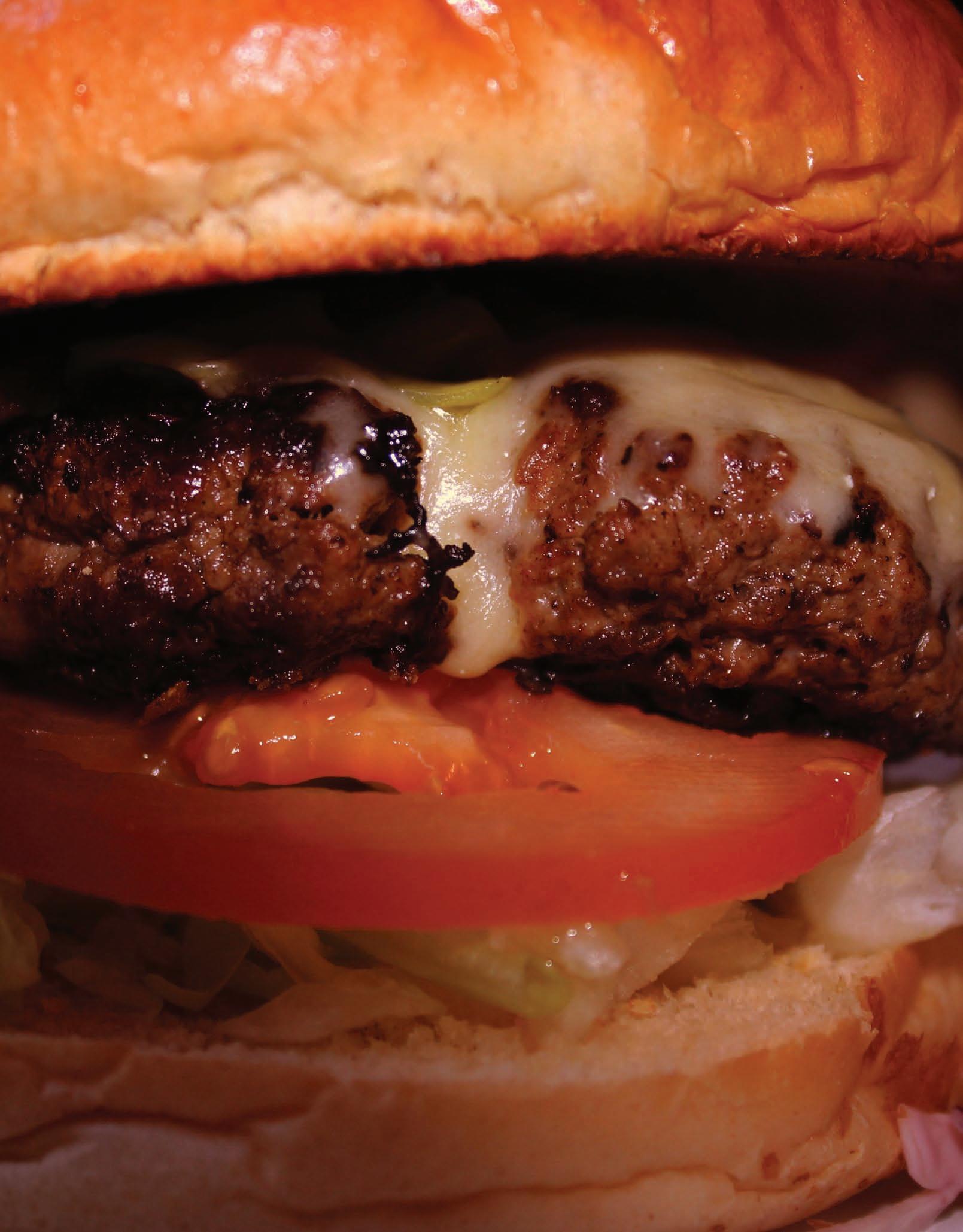
Sharpen your canines as Tom Connick gives us his account on the best of what Cardiff has to offer between two buns.





The humble hamburger has been subject to something of a renaissance. Across the UK, the meat and bread staple of the late night food trip has become saucier and sexier, though until recently Cardiff has sadly lagged behind in this respect. A handful of pioneers are finally bringing these spruced up snacks to our streets, and over the last few weeks, it has been my job to eat them in the interests of education. Or something.
We started with The Grazing Shed, arguably the trailblazer for those that followed in their meaty footsteps. Nestled behind the St David’s Centre and facing out on whatever the bloody hell it is they’ve been building there for the last year, The Grazing Shed is a cosy corner of local produce. Farmers and producers from a stone’s throw away provide everything on offer - from the patties to the soft drinks. The Shed’s website refers to itself as “a parable of life in twenty first century Wales” and its owners as “taking destiny into their own hands”. Lofty claims - I’m just taking a burger into mine. Suddenly my quest feels a whole lot less grandiose.
Anyway, onto the grazing. I opted for the John Wayne – a man who knows plenty about impressive quests such as mine. It came in record time: before I’d even had a chance to get a drink from the self-service machine (the elderflower stuff is bloody good), my burger was making its way to the table. I raced it back to my seat and just about beat it. Tucking in, I was hit by a wall of sweetness from the BBQ sauce. The patty was delicious and cooked perfectly, with a nice slither of pink in the middle. The bun was also noteworthy – another local find, the seeded brioche held everything together and wasn’t cloyingly sweet like some can be. However, bordering on sickly, the sauce swamped much of the other ingredients. In fact, when combined with the bacon and cheese, the ‘100% locally sourced Welsh beef’ got a bit lost in all the topping. To really contend with the big boys, the Shed could really do with fattening up their patties. Which was a shame, but not as much of a shame as the fact that they don’t do onion rings. I mean seriously, what the fuck?
Anyway, onwards and upwards. Upwards being the operative term, as the next trip was to a pop-up. Y’know, one of those fancy new things that moves around the city ‘popping up’ in different areas, and ultimately remaining as elusive as a tasty burger in a Spoons. Eventually tracking down the Got Beef pop-up in the downright bizarre pub that was Splott’s The Canadian, we took a seat and a cursory look at the menu. Ever the sucker for a good (or, indeed, bad) pun, I went for the Justin Bieburger (how topical), while my compatriot went for the namesake of our baffling surrounding. Similarly to Grazing Shed, Got Beef’s focus lies with local produce, the beef apparently 100% Welsh Black. Which I think is fancy-talk for ‘good’, cause it tasted bloody amazing. Slightly under-seasoned, but a damn sight thicker than The Grazing Shed, the patty took centre stage.
Flanked by a thankfully not-too-cloying Jack Daniel’s BBQ sauce and god-of-all-foods hash brown in the Bieburger, and a wicked smoked bacon/cheese combo in the Canadian, the burger was absolutely bang on with an ace level of pinkness throughout. I went for Dirty Fries AND onion rings as sides cause I’m a fat bastard, though the former were a bit of a letdown. Far too creamy for my blood. The onion rings though, holy fuck. Crispy and sharp, with a tart Cajun mayo that I’d happily eat off the floor. Incredible. Special shoutout also to the Barry Island IPA I had with it on the chef’s recommendation (by which I mean, he came out and got one, and we opted to have what he was having). Big up Brains for getting in on the craft-brewing thing, that baby was the bomb.
Craft brewing is the name of the game at Urban Tap House. At the time of writing they

apparently have 132 different beers and ciders, which is absolutely ludicrous, and a damn sight better than The Taf, who can never seem to have Gaymers on tap for longer than a day. Yes, it’s a sore subject. Back to Tap House – Paul in the kitchen is something of a burger and bar-snack wizard, churning out the most innovative and interesting pub grub in the city, perfectly matching the equally offthe-wall beer selection. Side-wise, the stuffed chillis are to die for, with a pleasingly strong spice level. Whether that’s just a ploy to sell more beer to quell the flames, I don’t knowbut I’d recommend a pint of Cwtch. Also, the onion rings are an even higher level of ‘holy fuck’ than those at Got Beef, practically melting in your mouth before they even touch your tongue. God, I love onion rings. Regardless, the burgers are definitely the star. Taking a rare deviation from my ‘red meat is best’ philosophy, the Spicy Chicken is a personal favourite, the sweet-but-menacingly-hot chilli jam perfectly complimenting the sweetness of the brioche bun. If it’s red meat you’re after, the Big Welsh is a perfectly patriotic slice of scran, topped with bacon, Welsh cheddar and leeks. Normally cheddar on a burger is a total no-go, but here it balances out the leeks wonderfully. Also: leeks on a burger. Inspired. It’s that kind of innovation that could see the Cardiff burger scene entering the ring with the London and Manchester before long. It’s an exciting time to be a carnivore.
Sourcing your food well might seem time consuming - but choosing veg that’s in season will reward you with taste and freshness. To assist you in this daunting task this month, we’ve got two recipes - an unusual sweet twist on beetroot and a classic Welsh cawl just in time for St. David’s Day.
Words: Dylan Elidyr Jenkins
Cawl. The name itself warms me from the inside. Every spoonful is a little bit of home. Perfect on rainy days, cold nights and of course the first of March, Dydd Gwyl Dewi (Saint David’s Day). I got the recipe from my Mamgu, who’s undoubtedly a master of the cawl, but she swears anyone can make it. For best stock she recommends using lamb: using a joint of meat rather than stock cubes will not only improve flavour, but will also be better for you. Choice of veg is optional, but as leeks are very much in season this time of year, they are a must, and will add a beautiful texture to this most patriotic of dishes…
You will need:
Shoulder of Lamb (Or neck)
Carrots
Onions
Parsnips
Swede
Potato
Leeks
Method: Boil lamb in water for a couple of hours, ensuring it doesn’t dry out. Once cooked, remove the joint from the water, but keep the heat for the pan.
Slice all the veg to edible sizes. Add the swede to the stock first as it takes longer to cook. Leave for couple of minutes. Then add the carrots, onions, potatoes and parsnips.
Season the broth and boil until cooked. Once veg is ready, add the leek, chopped fine. Stir. You can also add some flour and water if you want a thicker broth.
Get the meat off the bone, it should come off pretty easily if cooked for long enough, and slap the meat into the cawl. Stir again.
Serve hot with a slice of good buttered bread and a chunk of cheddar cheese. Perffaith.

Words: Britta Zeltmann
We have a habit of masking our veg during Winter; in soups, pies or routinely dolloped alongside roasts. But such a vibrantly coloured showstopper as the beetroot cannot be concealed. Not only proven to enhance athletic performance, it prides itself on fighting fatigue, lowering blood pressure and increasing stamina. This recipe combines the beetroot’s sweetness with a caffeine kick, creating the ultimate energy booster: its moist, truffle texture and rich, scarlet colouring is sure to beat any red velvet this month.
You will need:
250g cooked beetroot
200g quality dark chocolate
200g unsalted butter
4 or 5 tbsp espresso or strong instant coffee
135g plain flour
One heaped tsp baking powder
3 heaped tbsp cocoa powder
5 eggs
200g light brown sugar
Method: Preheat your oven to 180° and grease an 8-inch baking tin.
Begin by mashing up your beetroot in a food processor and set aside.
Carefully melt the chocolate over a pan of boiling water. Add the butter and coffee and melt until combined.
Sift the flour, cocoa and baking powder into a large bowl before folding in the sugar.
Separate your eggs and whisk egg whites into soft white peaks.
Whisk yolk and fold gently into the dry ingredients. Do the same with the beetroot. Finally, gently fold in egg whites without doing so too rigorously; the air in the egg whites will keep your cake light and fluffy.
Pop in the oven and prick the cake after 40 minutes - you may well find you need to leave it for another 10 minutes if the mixture is still gooey in the middle. Set aside to cool.
Enjoy with whipped cream to finish.
Words: Dylan Elidyr Jenkins
Photography: Emilia Ignaciuk

A cup of tea can remedy most problems, so Food and Drink editors Dylan and Emilia ventured out to stormy Cardiff this month to be educated, enlightened and charmed by the world of tea. Put the kettle on and enjoy…
Pettigrew Tea Rooms is superbly located; nestled on the edge of Bute Park, it offers a blissful retreat from the city’s hubbub and commotion, but isn’t out of the way.
Situated on the edge of the most serene part of Cardiff, from one side it hardly feels like you’re still in the city. It feels more like the dining room of a quirky manor house, belonging perhaps to an extravagant Great Aunt whose charm is hard to describe – it just exists.
It’s the result of David Le Masurier’s inspirational story, how he left a successful career to follow his dream. This personal touch means that this charming tearoom doesn’t lie, doesn’t try to be something it isn’t. The interior is kooky and charming, yet retains a classic British tearoom feel: 1940s music echoes in the background and china is stacked in the dressers, oozing elegance and nostalgia through the rooms. Pettigrew is dedicated to its cause, intently creating an experience for its customers, selling the British tea tradition and Masurier’s vision.
Smiling staff guided us to our table, which was already set up for us. They were thoroughly helpful, ready to guide us through their teas with knowledge and enthusiasm. The afternoon tea itself is reasonably priced: £14.45 for one or £25.95 for two. Included in the price is a pot of loose leaf tea per person, a fruit or plain scone with clotted cream and Caerphilly strawberry preserve, a cake of your choice and their assortment of cakes and teas are each as tempting as the last. I arrived with high expectations…I wasn’t disappointed.
I’m not a big drinker of white teas, but my pot of white peony and pink rosebuds was divine. Subtly refreshing
and fragrant, yet smooth and warming, it embraced my taste buds with underlying hints of rose, one of my favourite flavours. My co-editor Emilia opted for the Assam, which was stronger, darker, maltier, closer to your classic cuppa, but with more depth and more soul.
We were able to choose three finger sandwiches from a list of classic fillings and opted for ham and mustard, smoked salmon and cream cheese and Brie and chutney. The sandwiches boasted fantastic bread to filling ratio, as well as quality of ingredients and those being locally sourced. They were light, yet filling. Simple, yet satisfying.
The scones were pure delights, highlights of the afternoon, combining texture and moisture with a sweet preserve and clotted cream, to create a memorable taste, every bite a reason to return. Each choice of cake was tempting, but I opted for the bara brith, whilst Emilia went for the lemon drizzle. Although the crumbly texture of the bara brith was disappointing and there was a little too much cinnamon for me, it appealed to Emilia and the moisture was spot on. We were definitely full as we left, with smiles on our face. Attention to detail is what makes Pettigrew such an attractive establishment. From the majestic exterior and courtyard, which is sure to entice me back when the sun comes out, to the quaint inside with its simple, attractive menu and shop full of vibrant produce; Masurier has managed to create a welcoming environment that combines charm with nostalgia, and proves that elegance can come in mismatched china, cups of tea and finger sandwiches.
Emilia Ignaciuk popped in to the Roath teahouse to ask its owner, Kasim Ali, some pressing tea-related questions.
What would you tell a person that wants to step away from the proverbial milk and two sugars and develop an appreciation for tea but doesn’t know where to start?
I’d say get some good quality loose leaf tea to start off with. Great Britain’s known for having the English Breakfast blend, which is designed to have milk and sugar in it, so when you drink it black it’s bitter and one-dimensional. When you buy good quality tea you find it’s often sweet and multi-layered with flavours that are bursting out. I think a good step is to move to a single origin black tea. In the UK the most famous would be an Assam or a Darjeeling – you can taste the floral note of a Darjeeling or the malt sweetness of an Assam, and that’s when you understand that tea can be drunk without milk and without sugar.
What are some other differences between teabags and loose leaf tea?
Teabags aren’t as multi-layered - the more you handle tea in production, the more the aromatic oils dissipate, so the flavour gets lost. In good quality loose leaf tea the leaves are picked with utmost care and packaged without too much disruption. The second thing is that people like teabags because they’re quick, the average “dunk time” for a teabag is between 17-18 seconds, so to really facilitate that the tea bag manufacturers put inside really small particles of tea – often they’ve gone through a machine, so the leaves are very broken. The small particles in the bag have effectively more surface area to react with. So due to air and humidity, the aromatic oils will dissipate more easily. In large leaf teas the leaves are twisted or curled which traps in the aromatic oils, so when you add water, all the flavour gets released.
Different kinds of wine are usually paired with specific foods. Can you do anything of that sort with tea?
We started playing around with that, we have food & tea evenings in our shop in Penarth where we have 5 courses of food and we match them up with different teas. There’s different ways of doing that, you can complement, you can contrast. You can match by origin, so serve a Japanese dish with a Japanese tea. You can also match flavour profiles within the dish and the tea.
What are some some simple examples of this kind of pairing?
We would normally pair a strong flavoured dish with a strong flavoured tea, that’s a general starting off point. You wouldn’t want any of the components to overpower each
other. It depends on what you’re cooking, so if you’re roasting something and you want to get that flavour through you can use a tea which is roasted as well – for example a Japanese tea, like a houjicha, or a Wuyi oolong. An Earl Grey, for instance, can be used to complement food quite effectively, as it has prominent notes of citrus. Fresh mint with tea is used a lot in Moroccan cuisine and it’s also good for digestion, so normally we would complement that with a heavier meal.
Heavier meals also go well with an Assam or a tea from Meghalaya, these really punch through the flavour effectively. It’s a case of picking up all the spices that you’ll be using for the dish and finding a tea that complements them well. Tea is excellent for cleansing the palate as well and for finishing off dishes effectively without the harshness of alcohol.

Words: Emilia Ignaciuk
When you’re making your way through Cardiff and being battered by the rain, few things sound more appealing than the prospect of tea and cake. My co-editor Dylan and I headed to review the cream tea and afternoon tea at Barker Tea House, a spinoff of the longestablished Coffee Barker. Their new location is in High Street Arcade and focuses on - you guessed it - tea and its accoutrements.
Having scouted out a cosy place by the window upstairs, we settled ourselves in. We took this chance to inspect our surroundings, and I have to say I could’ve sworn I ended up in Coffee Barker by mistake if I didn’t know any better. The décor is almost exactly the same - down to the massive armchairs and the not-quite-rustic brick walls, but I’ve got to say it works, especially as Barker Tea House is spread over two floors, which gives the interior a more airy feel.
After being confronted with a rather impressive tea menu we finally opted for the fruit chai and one of the flower teas endearingly called “Unity”
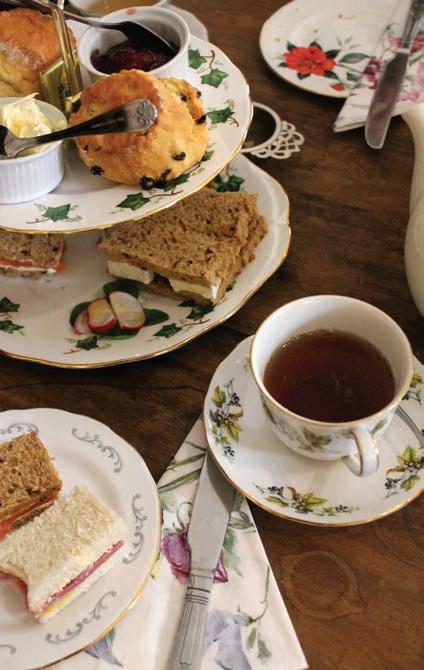
- the selling point of which is having the tea leaves bound together with a flower, which you watch “bloom” as the tea brews. The chai was fruity indeed, maybe even a bit too much, as it tasted more like a fruit infusion than a proper brew. However the flower tea had a lovely delicate taste, which later on complimented the food nicely.
The teas arrived quite promptly, maybe too promptly even, as they were already a bit cold by the time we were confronted with two impressive cake stands, one for the cream tea (scones and brownies) and one for the afternoon tea (scones, sandwiches and all sorts of cake). We went straight for the sandwiches, which I would describe as 1) generous and 2) satisfying. After scoffing them up our priorities were clear: it was time for the scones, the crowning glory, the pièce de résistance of every afternoon tea. Little did we know we were in for a disappointment. The scones were fairly heavy and undercooked, a blunder no amount of champagne & strawberry jam could undo.
After that mishap we set our sights on the rest of the cakes – the selection was solid and there were some interesting choices, such as the chocolate and chilli cake and my personal favourite – the champagne and strawberry brownie. Dylan wasn’t as impressed as I was, however, so your mileage may vary.
How much for all those pleasures you ask? The cream tea is £6.95, while the afternoon tea for one is £19.50, which is a bit steep, however it is reflected in the generous portions. I can’t say we left Barkers Tea House fully satisfied, but considering they’re only in their second month of operation I would be quite keen to attribute that to teething problems and give them a second chance.





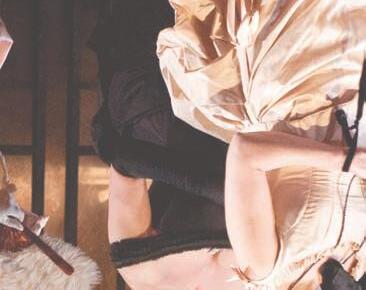


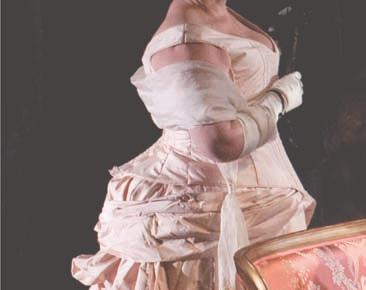
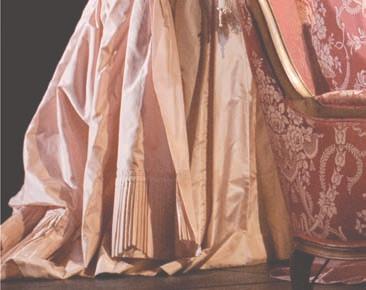


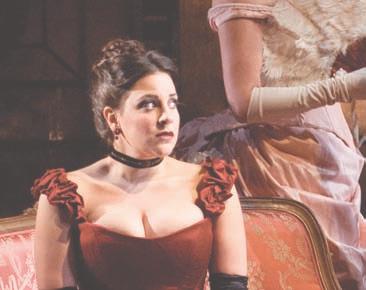




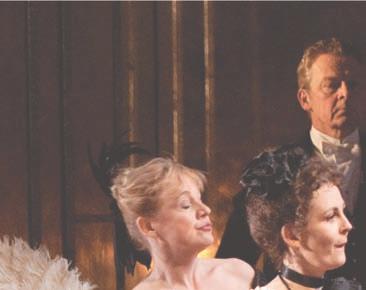

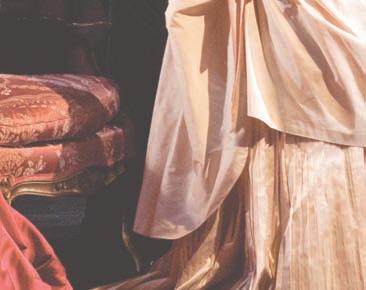




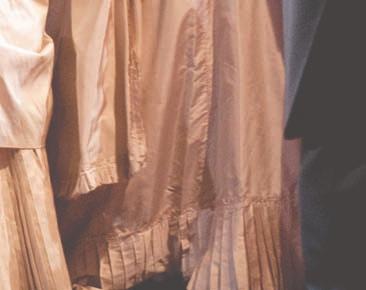
 Photo: Roger Donovan
Photo: Roger Donovan
With the beginning of the Welsh National Opera’s new season; ‘Fallen Women’, in Wales Millennium Centre next week, the subject of opera’s place in the young adult’s life is questioned. Jordan Nicholls takes us through some of the myths that have popped up around opera, and why they’re false.
Many young adults are culturally curious, and enjoy activities such as trips to the museum and art galleries. Yet as soon as opera is mentioned they are quick to disregard it. But why is this? Is it ignorance, or perhaps the stigma attached to the genre? Despite opera companies’ best efforts to draw more young people into its audiences, youngsters are still hesitant to venture into the opera house.
This can be understood to some extent; for example, perhaps it’s because of the fact that operatic music is given less press coverage and radio airtime. Young people are unfamiliar with opera, and therefore the prospect of sitting through a three hour production full of music in this style is daunting.
However, is opera really that unfamiliar? Many would be surprised by the amount of well-known tunes which are in fact taken from operas themselves or arias from these operas, including: ‘Habanera’ from Carmen, Wagner’s ‘The Ride of the Valkyries’ from Die Walküre, or ‘Nessun Dorma’ from Puccini’s Turandot. ITV’s hit reality television show, ‘Popstar to Operastar’, opened the operatic vocal style and music to the mainstream audience, and with classical artists such as Katherine Jenkins and Il Divo achieving enormous mainstream chart success clearly shows opera has a well-established place in today’s culture. Here are the common myths we’re about to debunk:
1
Operas are uninteresting or boring. Perhaps a vision of a large woman attempting to break a glass with her voice springs to mind. To say this is false is a bit of an understatement! Opera is full to the brim of action-packed drama; abduction, threat of imprisonment and deportation, and a sudden death (Puccini’s Manon Lescaut) is a tad more interesting than your average episode of Eastenders. You’d also be surprised as to how strikingly relevant opera can be to today’s society. For example, the 2011 opera Anna Nicole by MarkAnthony Turnage told the true story of the titular playboy model’s death of a drug overdose. Some of the most popular musicals today actually stem from operatic works. A prime example of this is ClaudeMichel Schonberg and Alain Boubill’s hit, Miss Saigon, which is based on Puccini’s masterpiece, Madame Butterfly. Similarly, the 1996 rock musical Rent by Jonathan Larson is in fact based on Puccini’s La Bohème
2
I won’t understand what’s going on! Fear not - the majority of opera houses now provide audiences with surtitles above the stage with direct translations throughout the opera and although you may think this would be difficult to follow or distracting, it really isn’t. Admittedly it can also be an intimidating prospect for newcomers to the opera that the entire work is sung through. However, it is important to note that the complete sung-through approach is fast becoming the norm for musical theatre also, for example works such as The Phantom of the Opera, Les Misérables and Cats are all sung through musicals. Therefore the fact opera contains very little (if any) spoken dialogue is neither unusual nor difficult to follow.
La traviata comes to the Wales Millenium Centre this month, from February 4 to March 11.
Verdi’s La traviata is part of the WNO’s ‘Fallen Women’ series and is possibly one of the best operas for the newcomer. For £5, you’d be mad to let this opportunity pass you by!
La traviata follows the story of the courtesan Violetta, who falls in love with the young nobleman Alfredo. However, Alfredo’s father does not accept Violetta into the family, and she is forced to break off her relationship with Alfredo. Too late, Alfredo’s father realises how much he has hurt the young couple and tries to repent, but unbeknownst to them all, Violetta suffers from a fatal consumption...
3
I don’t like that shaky-voice thing operatic singers do.
Vibrato’s put people off but it is primarily a way of emphasising libretto and creating dramatic tension, and isn’t something to be intimidated by. Artists found that dialogue alone couldn’t sufficiently express the drama of the stories they wanted to tell; and so, the operatic style was born. The use of vibrato merely reflects this drive for drama.
4
Opera tickets are way too expensive, and not worth the money.
This myth is simply nonsense when the price of tickets for the opera are lowering all the time. Some of the top opera houses in the world, such as the Royal Opera House and the Metropolitan Opera in New York have begun to transmit live broadcasts of operas to cinemas throughout the UK in an attempt to make opera more accessible to all generations. The Welsh National Opera currently offers everyone under thirty to attend any performance in its ‘Fallen Women’ series for just £5!!! What else can you get, at that quality, for £5 these days?
5
I wouldn’t know how to behave in the opera house.
As with all other art forms, there is a level of etiquette expected from the audience, but this is no different to any other theatrical event, music concert, or even film screening. The idea of audiences being full of old, high-brow, upper class couples peering down a pair of binoculars in full dinner jackets and floor length evening dresses is simply untrue. You can wear whatever makes you comfortable, and whatever’s respectful of the people around you.
 Photo: Roger Donovan
Photo: Roger Donovan
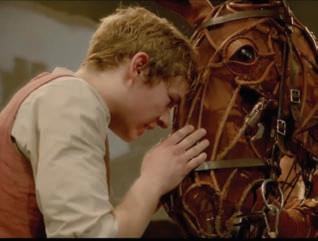



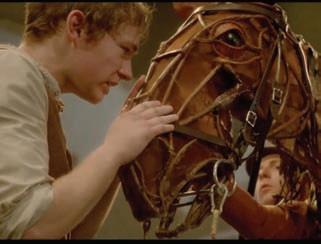


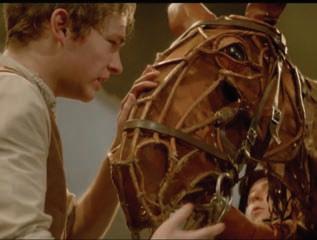










There’s been a recent trend in broadcasting theatre, either live or recorded, on the internet or in cinemas. But people have been debating about whether this encourages people and shows, or discourages them and just allows them to stay at home. Jasmine Freeman tells us both sides of the story.
The latest trend of streaming live theatre is breaking down the barriers between the masses and the theatre. Popular shows like Coriolanus and War Horse have made their way into Cardiff cinemas allowing theatre addicts to watch incredible performances in an ideal atmosphere, while sparing them the expense of theatre tickets and sometimes even travel.
The Welsh National Theatre took this groundbreaking idea one step further by streaming their award-winning production The Radicalisation of Bradley Manning for free, on the internet during its run. This meant that anyone could access a piece of incredibly important, politically motivated, and emotionally charged theatre in the comfort of their own home at no expense. Justifiably, some theatre lovers are unhappy about this recent trend. Executive director of Scarborough’s Stephen Joseph theatre Stephen Wood recently accused National Theatre Live, the National Theatre’s response to the livestreaming phenomenon, of substituting actual theatre-going for broadcasts. Live-streaming theatre will arguably interfere with a tradition of theatre that has spanned centuries. However, there are numerous arguments
against these concerns. It’s obvious that not everyone has access to live theatre, either for financial or locational reasons. Live theatre offers the opportunity for everyone to access theatre which in the modern age surely should be a right. Companies can put on productions that smaller, regional theatre companies could never attempt, for example the National
Theatre’s second live show All’s Well That End’s Well, Shakespeare’s notorious problem play. In addition, it may be time to forget outdated arguments that live-streaming will somehow damage real life theatre attendance. There is still something innately attractive about attending a live production to those who are genuinely
interested in the theatre. The experience of the theatre will never be matched by a livestreamed show. In fact, early Nesta research about National Theatre Live found that it was more likely, not less, to make people go to the theatre.
When approaching this new trend, it’s important that we do not for a second think that theatres are abandoning the way in which theatre has been delivered throughout history. Instead, we should focus on seeing the new artistic and creative possibilities these new digital platforms offer, as well as the chance this offers new audiences to access theatre as they never could before. Finally, theatre is now open to everyone. If you want to jump into the stream and experience incredible theatre without the sometimes student-deterring ticket prices, you can still watch War Horse in Cardiff Cineworld and in Chapter Arts Centre over February, March and April this year. There are also screenings of King Lear and The Curious Incident of the Dog in the Night-Time to look forward to. Check out their website for details: www.ntlive.nationaltheatre.org.uk



Amy Davies www.amydavies.co.uk
As one of Cardiff’s biggest hubs for freelance artists closes, Culture editor Amy Pay documents Morgan Arcade Studios’ short history and questions the future for creatives in Cardiff.
Next time you walk through town, let your eyes drift. Take in the structure of the buildings, look up to see what occupies the floors above shops and observe our city fully. Until the beginning of this month, you could have seen Morgan Arcade Studios, nestled away upstairs in, you guessed it, Morgan Arcade.
Morgan Arcade Studios opened in 2011, first housing office space. It expanded upwards after illustrator Daniel Hamilton braved a risky financial move to rent the whole second floor. Hamilton split the floor into sections and rented out each of the spaces to Cardiff-based creatives at reasonable rates, uniting artists, including himself, with likeminded people in a shared location.
The friendly atmosphere, bright from big windows and given character from original fittings and exposed floorboards, housed a creative collective of freelance individuals. These included fine artists, large-scale painters, computer-based designers, journalists and illustrators. With room for just over twenty people, it is no wonder the waiting list for a six-month residency in such a hub surpassed 100 names.
If you look up while walking through Morgan Arcade now, though, you won’t see Morgan
Arcade Studios. You may see signs for the ‘Creative Quarter’ in its shadow, a refurbished workspace that is perhaps swankier than its former incarnation yet, as is always the case, costs a lot more to rent space in.
The landlord of the Creative Quarter, formerly MAS, has increased rent to survive the financial climate in Cardiff. Hopefully, there will still be creative people using the space, boosting art despite the lack of culture funding in Wales.
Unfortunately, the four-fold increase in rent forced Morgan Arcade Studios’ established artists out in the cold with nowhere to prop their easels, sketching desks and laptops. Hopefully, sometime in the near future, another creative haven with affordable rents, suitable workspace and an understanding of the artist’s way of life will open up in Cardiff once more.
In the meantime, the twenty-something MAS workers are back to the drawing board, trying to make do in makeshift spaces, bedrooms, studies, garages, anywhere they can make their ideas come to life. People like Hamilton’s colleagues are crucial in keeping Cardiff alive as a vibrant, growing, fun and productive city. Let’s hope our creatives find new homes within the city soon.
Turn over to see the work of four former Morgan Arcade Studios illustrators. Even if the buildings can’t house them, Quench can!




Julien Decaudin is originally from the south of France near Marseille. After living in London for six years, Decaudin relocated to Penarth near Cardiff in 2012. Decaudin is self-taught, and started off developing her skills as an artist by posting drawings on her blog. Her lack of an art education doesn’t seem to have hindered her. Instead, it has given her the freedom and drive to experiment in order to create her own unique style. Decaudin’s work shows her love of surrealism and nature, and
she cites both Miro and McBess, artists she first encountered after moving to London in 2006, as key influences. Decaudin’s work feels like a dream; all pastel shades and unusual details. Like the best dreams, Decaudin’s pieces continue to develop and gain depth right under your eye. The use of calming pastel shades of pink, blue, and yellow only adds to the soothing effect of the images.
www.juliendecaudin.com
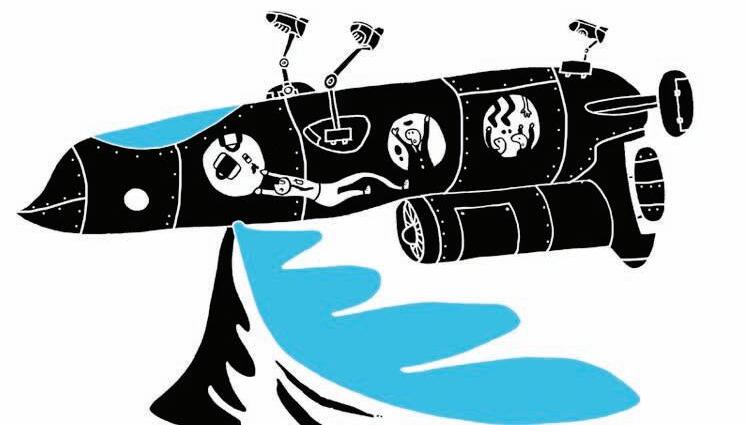
Daniel Hamilton, founder of Morgan Arcade Studios, is originally from Carlisle but now lives and works in Cardiff. He set up the Studio after graduating from Cardiff School of Art and Design, where he studied Illustration. Hamilton’s work combines a sense of imaginative freedom with a focus on technology and infrastructure. Listing aviation and science as two key influences in his work, Hamilton creates images that are both technical and surreal. His work is beautifully

detailed and often strays into unexpected areas. To Hamilton, an aeroplane isn’t just a piece of technology; it’s a living organism with a brain, a complex network of veins, arteries and feelings. Equally, the floor plan of an office needn’t be a simple map; internal walls become organs of a three-legged man, with the toilets placed in a rather imaginative place on his anatomy.
www.iamdanham.com
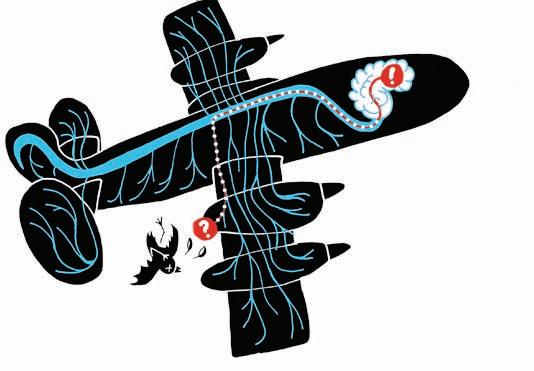

Cathryn Weatherhead’s work shows the value of the hands-on approach as she designs, screen prints, assembles, packages and hand-makes all her products. These range from prints and cards to mugs and tea towels. Weatherhead often uses collage in her work, creating deceptively simple and heart-warming scenes out of a variety of fabrics. While Weatherhead’s pieces may seem simple, they are far from simplistic, and her work includes some truly charming and engrossing images. A stand-out figure

in Weatherhead’s art is a young boy named Hubert. One of the few humans to grace her images, Hubert continually runs into danger and is afraid of almost everything. The bobble-hatted character lives in a continual state of terror, and there is something both comical and strangely endearing to this as he runs full-speed across the pages of Weatherhead’s unpublished book, Hubert Butt’s Book of Fear
www.cathrynweatherhead.co.uk
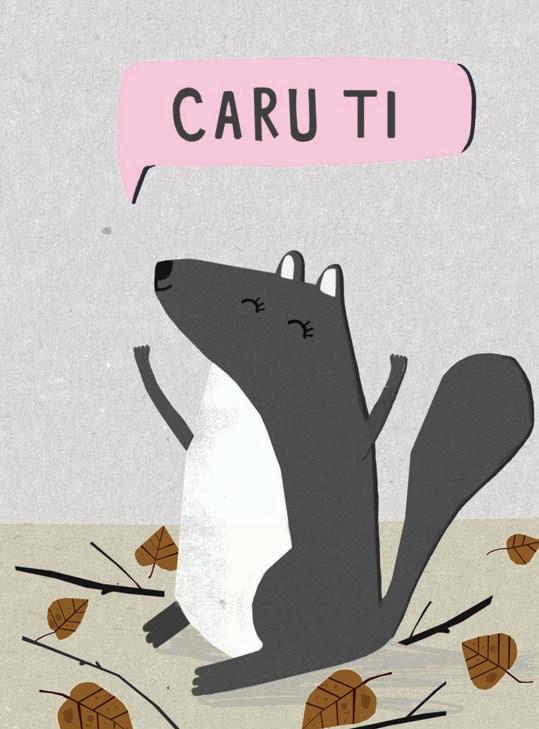
However, just because the artists are lacking a place to create their art doesn’t Morgan Arcade illustrators who continue to work in Cardiff. Be inspired by their creativity!
While members of the studio come from all over, Emma Levey is a South Wales girl to her core. After studying Illustration at the University of the West of England, she returned to home turf to pursue illustration. Levey writes and illustrtates children’s picture books, creating textured paintings and hand-drawn images. Drawing inspiration from her own childhood, Levey’s characters are colourful and whimsical, including parachuting poultry and cats in santa hats. Her most impressive
work is reserved for her human characters, however, where Levey’s ability to convey emotion and movement shines off the page. The colour and energy isn’t limited to Levey’s art. Her first book Hattie Peck, which she wrote and illustrated, is out this February. Hattie Peck may be new to shops, but Levey has already finished her second book and is swiftly moving on to her third.
www.emmaleveyillustration.com


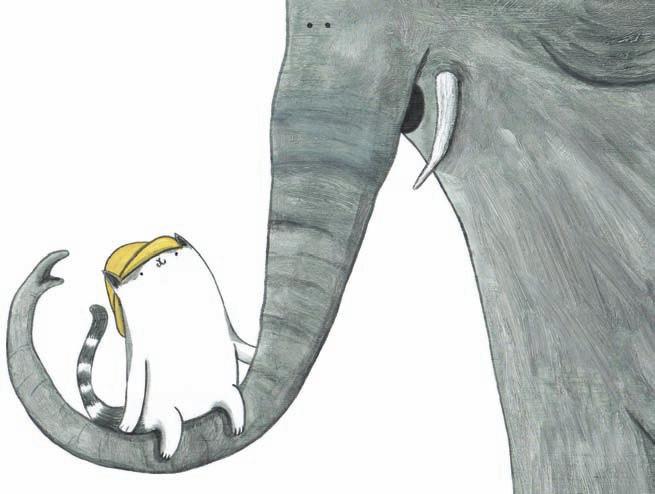

While fiction can spark emotion, debate and learning, it is inevitably unreal. Many non-fiction books can be equally affecting, but they are often overlooked for literary bestsellers. Culture editor Amy Pay gathers some of the most insightful non-fiction books that you should read now. Learn something new, expand your knowledge and find out shocking truths of reality.
Illustrations: Alice Havard

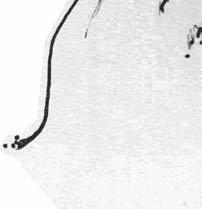



JULIAN ASSANGE: THE UNAUTHORISED AUTOBIOGRAPHY BY JULIAN ASSANGE
Julian Assange, hacker extraordinaire, spends his life sniffing out secrets, intercepting communications and exposing underground operations. Insights into his past unearth motivations behind investigations, from his beliefs in the freedom of information as a human right to his influential anti-establishment upbringing. As well as introducing you to the hero/villain figure, this book gathers the most substantial and shocking things revealed on Assange’s WikiLeaks site since establishment in 2006. As with all things Assange, the publication of this account was anything but controversial; Assange spent the advance payment for the autobiography then cancelled the deal, so a ghost writer stepped in to push the book to shelves without the WikiLeaker’s agreement.
Amy Pay
SUMMA THEOLOGICA BY ST. THOMAS
AQUINASThe biggest misconception about religion today is the idea that the reliance on faith requires the abandonment of reason. Many have therefore asserted they have “outgrown” a myth. St. Thomas Aquinas’ Summa Theologica will make you think again. Written towards the end of the 13th century, it has been widely recognized as a pioneering work in theology. Does God exist? Why was it fitting for the Son of God to take on a human nature? What awaits us upon death? These questions, and more, are answered by his synthesis of Aristotelian philosophy with Christian theology. One should not expect a “because the Bible says so”, but a profound answer that will make you recognize the harmony between faith and reason.
Babatunde OnabajoTHE NET DELUSION: HOW NOT TO LIBERATE THE WORLD BY
EVGENY MOROZOVShopping from home, checking accounts, organizing socials, googling answers… however you use it, the internet is now central to life. In our digi-utopia, we are made to believe it will solve our problems, liberate minorities, shape democracy and let us live freely and easily. Morozov smashes this illusory veneer, demonstrating how the internet and social media can segregate people, facilitate criminal communication, stir up hatred via false reportage and disconnect us from nondigital reality. Most unsettling is Morozov’s exposure of how we are constantly under surveillance online; every click, like and email can be intercepted and used against us. We’re trapped and tracked yet apathetic towards cyber-imprisonment.
Amy Pay






 HILL
HILL
As the title suggests, this book tackles weighty questions about life, existence and belief, particularly Christianity. Rather than wholly siding with the believer or nonbeliever, Hill explores modern theologians’ responses to bold issues that, for many, stand in the way of adopting a faith. The questions are reasonable, ones that many people may be reluctant to ask a religious leader or hardened atheist in case they offend them or receive a biased reply. For example, Hill ponders life after death, why a god would allow suffering and evil to occur and how Christianity can remain intact when science is used to argue against it. Though based mainly on Christianity, Hill’s probing inspires the reader to consider fundamental personal, moral and social values regardless of their religious persuasion.
Amy Pay
ALONE TOGETHER: WHY WE EXPECT MORE FROM TECHNOLOGY AND LESS FROM EACH OTHER BY SHERRY TURKLE
Digital communication is changing the world. Turkle is concerned it is also changing us. Despite living in an age of unprecedented connectivity, we feel isolated, ‘alone together’. The exciting benefits of technology are costly. We now avoid the immediacy of face-to-face conversation, finding it easier to edit quick messages. Tweets and notifications keep us updated, but distract us from each other. We’re all connected all the time, but rarely connecting meaningfully. Turkle is not against technology. Rather, she recognises that technological advance does not guarantee human progress. Instead of naïvely calling for a return to the past, she bravely stresses the importance of questioning our relationship with technology.
Justin Cordery





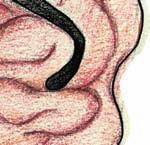

Some subjects are difficult to approach with anything resembling academic integrity. Subjects that are so fantastically caught up in what it means to be human that to attempt to truly abstract oneself to a point of disinterest is a doomed endeavour. Religion is one such subject. In speaking about its historical context the God Delusion is one of the most important works in recent western theological tradition. This is not because the arguments are fool-proof; there is always a better fool. This is because it brought big thinking to the centre of public discourse. The level of attention demanded by each detail and the flow and order of the arguments is a masterpiece of literature, even to those who appreciate it as nothing else.
Matthew Jenkins













Naming and shaming the various so-called ‘Ministries’ moulding our lives – food, fat, diet, fashion and beauty, sex and surgery among them - Woolf warns us of how our society is trying to shape us to be a certain way. Telling us how we shouldn’t accept what we are being told, I can’t help but empathise with her views. The book largely focuses upon the female body, but she does not fail to omit the pressures faced by men, although it would be interesting to see more of their viewpoints. Using her experience of recovery from an eating disorder, her views are taken from a patronising collection of tales on how to live our lives to a personal account.
Anne Porter







It is an indisputable fact that humans significantly influence global warming. Nevertheless, due to distorted politics, many remain sceptical. Fighting back, Gore delivers an impassioned, fact-based rallying call that we all should heed. His powerful book, filled with data, serves as a gripping first-step towards understanding this major problem of our time. Gore is cautiously optimistic that, once the facts reach enough people, a tippingpoint will be achieved. The race is on to reach that tipping-point on time. We each have a moral obligation to inform ourselves of the facts of global warming and the dire consequences of inaction. Meanwhile, gas molecules remain impervious to our politics, and the clock ticks ever faster.
Justin CorderySince the ‘80s, this book has changed thousands of lives. It identifies seven good habits shared by successful people. The definition of success is relative to you, but the tools taught are universal. While used in workplaces, it can create any type of change, from discovering faster ways to get ready in the morning to balancing studying and socialising. Covey explains the habits (Be Proactive; Begin with the End in Mind; Put First Things First; Think Win/Win; Seek First to Understand, Then to Be Understood; Synergize and Sharpen the Saw) so that, in theory, anybody can become somebody. At the least, honing these skills will make you feel positive, motivated and in control.
Amy Pay
We’re used to being told that the unhealthier foods we love are bad for us. It’s a dull and repetitive message, one we shrug off as we chomp on our two-tier burger in a secretly sugar-coated bun. Who cares, right? Well, this book, which simplifies facts on fast food, may make you reconsider how kingly the golden arches of the industry are. It’s a fascinating brief history of global fast food culture, with insights into meat sourcing, flavour creation, factory conditions and the dangers of working in the industry. It also illustrates how adverts for fatty, salty and sugary foods brainwash us from birth and why supersized meals are not so super. The truth is anything but delicious.
How the media present science to the public is a massive issue with far-reaching consequences. Sadly, as Ben Goldacre’s Bad Science highlights, a lot of science coverage in the media just isn’t up to scratch. It exposes three commonly used journalistic templates: the ‘wacky’ science story (‘Jessica Alba has the perfect wiggle, study says’), the ‘breakthrough’ story and the ‘scare’ story. All fail us though, as the book demonstrates; the former type of story is usually planted by a PR company, while the latter two paint an inaccurate picture, each in their own way. Bad Science should help every reader develop the mental toolkit needed to dissect the fluff pieces and misleading coverage – it is a much needed and refreshing corrective.
Adam BrelsfordTHE DEFINING DECADE: WHY YOUR TWENTIES MATTER BY MEG JAY
It’s normal to feel out of depth when you’re 18-30. Meg Jay lends you a shoulder to lean (or cry) on, lets you reflect then advises you through what can be a tricky time. Whether you know your life goals or are floating in cluelessness, this book will help. It’s like an older sibling that forces you to confront your situation, identify niggles then move forward happier and more productive. Examining work, love, dating, living with others, future-planning, multitasking and self-belief, each section works to up your confidence, teaches you to make something of yourself and helps you take advantage of what could be the best period of your life.
Amy Pay
Following intensive research into factory farming, this book unveils hypocrisy, detachment and cruelty through a narrative that questions our choices whilst remaining refreshingly void of the militancy that so often weakens arguments for vegetarianism. Rather than calling for conversion, it pleads a pause for thought.
Anecdotal storytelling and observations merge with science, philosophy and crime noir as Safran Foer plays detective, seeking answers from an industry thriving on public ignorance.
Like Foer, I lingered in dietary purgatory for years. Rejecting poorly concealed meat slyly served by a grandmother forever fearful of impending anaemia, I’d end nights out in McDonald’s and feign despair come morn. This book ceased the nagging doubts at midnight and shocked me into permanent change.
Aimee-Lee Abraham
THE GAIA HYPOTHESIS SERIES BY
JAMES LOVELOCKThe 20th century paved the way for great controversy and revolutionary theories amongst scientists. One such event was the Gaia Hypothesis proposed by James Lovelock in the 1960s. His many books, particularly The Revenge of Gaia: Why the Earth is Fighting Back and How We Can Still Save Humanity (2006), caused fierce dispute. If you have ever had the feeling that all living creatures are somehow connected with each other, this is the book for you. Lovelock suggests all living organisms and ecosystems create a global, self-regulating system. Although still surrounded by a number of ambiguities and controversies (like its unclear position to Darwinian theory), the book is definitely worth a read.
Daniel Krajnik





People across the world know the golden arches of McDonalds. But do people know what effect this fast food chain is having upon the world? Ritzer argues that a process of ‘McDonaldization’ is occurring across the world: the principles of the fast food restaurant are coming to influence society. These principles of efficiency, calculability, predictability and control are becoming worldwide phenomena. He goes on to assess whether ‘McDonaldization’ can be beneficial to us – but Ritzer presents a largely pessimistic view of it. We know fast food such as McDonalds is bad for us – but this book shows us views of how their production systems are also a cause for concern.
Anne Porter


The Xbox One was marketed by Microsoft as being more than simply a gaming console with more emphasis being placed on it being an entertainment device. Now while this might have swayed some people in direction of its competitor the PS4; it is fair to say that Microsoft has delivered the next-gen experience with the entertainment features that it focused so much on.
Despite Microsoft’s focus on entertainment, at its core, the Xbox One remains, a games console


The first thing that strikes you when you first remove the console from the box is that it did live up to the suggestions that it looked like a 90s VCR, but a nice one at that. Looks aside it’s a nervy hour or so of set up considering that this was a console at launch which was bound to have some problems. Issues surrounding the disk drive and power supply have affected a minority of people but there is still that possibility that it occurs until the console is running properly, although these are easily avoided.
If you have a PC that runs Windows 8, then the Xbox One’s menu system should not be too difficult to navigate as it heavily resembles Microsoft’s most recent operating system, but there are still times when you may find yourself struggling to find what you’re looking for. This is where the brand new Kinect comes in, even though the first iteration of the device on the 360 can be argued to have been nothing more than a mere tech demo for the new version.
It looks like a VCR, but a nice one at that



Despite heavy amounts of negative press surrounding its new system, can Microsoft fight back to win the console war? Alex Glazer takes a look at the brand new Xbox
through Dead Rising 3, you can watch Netflix or YouTube, or bring up a walkthrough via the Machinima app which automatically loads videos based on where you are in the game that you’re currently playing. This is a great feature but it still lacks the ability to control the volume of the individual screens which is not a great problem but can be annoying if you’re trying to listen to a walkthrough for instance.

Motion controls aside, the voice control functionality has been improved to be more responsive and include a bigger array of recognised vocabulary to the extent that voice control is the easiest and quickest way to navigate the Xbox One’s UI. This also extends to turning the console off and on and perhaps the coolest feature of the new box, the snap function. Now you can have picture in picture simply by saying “Xbox Snap” which means that when working


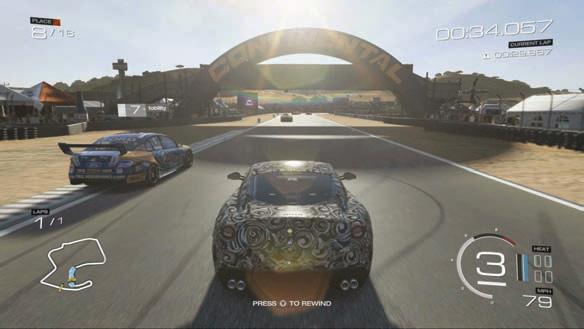
However, the Xbox One still remains at its core, a gaming console and to that end it is time to look at some of the games that were released at launch. Perhaps the most notable launch exclusive is Forza Motorsport 5. The fifth instalment of the series has made the jump to the next-gen with great success. The cars look scarily like their real life counterparts and the locations have also received the next-gen treatment while the further integration of BBC’s Top Gear helps add that bit of comedy to what is a mostly serious racing sim. The new “Drivatar” system now ensures that you will never race against the vanilla AI but against computers based on real people’s driving styles. Gone are the days of boring repetitive races where you can win far too easily because now the AI is aggressive and will make mistakes such as going off the track or spinning out at a corner. Forza 5 perfectly shows off the capabilities of this new console and therefore is an absolute must-buy if you do pick up an Xbox One.

Other recommended games for the new console include Dead Rising 3 which doesn’t necessarily have the greatest next-gen graphics but is a lot of fun; and NBA 2K14 which, if you enjoy sports simulators, delivers the most authentic experience in this genre yet, with perfect graphics and unbelievable reproduction of the real life NBA players.

Overall it is safe to say that the Xbox One has had a successful launch with over 3 million units being sold in launch countries. When looking at the launch titles for both of the new consoles, the Xbox One arguably has won this “battle”, but it will take more time to determine which of the two is ultimately better. The Xbox One is worth your time if you wish to spend the money on it but there is still plenty of life left in the very successful and affordable Xbox 360.





Oliver Payne weighs up Sony’s performance and their contender for this generation’s top console
Despite the issues new consoles have on day one, the Playstation 4 (PS4) set-up seemed to go quite comfortably - 45 minutes from unboxing it, the PS4 had completed or installed the required updates with no hassle and was ready to go. The interface is somewhat visually similar to the Playstation 3’s as both use a horizontal bar with an icon to represent a menu, although where the PS3 would display a vertical list of options when selecting an option, the PS4 has less icons and displays them in a new menu depending on the options.


access to two other free games, Resogun and Contrast. In addition to this, there are some Free-to-Play games already on the Playstation Store: Warframe, DC Universe Online and War Thunder, meaning you can already get several games at launch.

One of the major issues with the PS4 is the lack of big name launch titles to accompany it
The PS4 also features apps for things such as Amazon/Lovefilm, Netflix, BBC iPlayer, BBC Sports and BBC News (UK specific), which need to be downloaded from the Playstation Store. The actual store itself is the exact same as the PS3’s in terms of navigation, although does not list any previous-generation titles since the PS4 is not capable of playing them. Overall the menu system and navigation is relatively easy to get used to and shouldn’t cause too many problems.
The controller is unusual when compared to its predecessor, but it is no less awkward despite the huge touch sensitive pad in the centre. The shoulder buttons are more comfortable and the trigger like L2 and R2 are especially good for First Person Shooters. The Start and Select buttons have been replaced by a Share and Options button which can be confusing at the start, but is easy to get used to. The Options button is a combination of both Start and Select from previous generations, which does make it more convenient, and the Share button allows you to either record your current session or take a screen shot, which can then be posted onto your profile.

The controller also has a built in speaker, similar to a Wii Remote, which can allow for a more immersed experience when playing, such as receiving objectives through it or an audio based collectible will play through it. One feature that is really impressive is the ability to plug in your headset into your controller and have the audio output go through that instead of your TV, especially if you’re concerned about disrupting people. The headset for the PS4 (which is included with the console) also allows for party and cross game chat, which is definitely a welcome addition to the console.
The two main exclusive launch titles for the PS4 are Knack and Killzone: Shadow Fall, and as a member of PS Plus you also have

Killzone: Shadow Fall is a First Person Shooter and is the fourth main instalment in the Killzone series, and can be enjoyed even without knowing the full back story. The online multiplayer is fun and somewhat different compared to other mainstream FPSs, using a class based system, where each class has unique abilities and weapons to help them perform certain roles. However, what makes this different is how weapons and abilities are upgraded. Rather than a simple “Kill x with y weapon” to upgrade, Killzone sets certain challenges and these can change your play style if you wish to upgrade the weapon. The challenges for abilities are more generic, but these encourage more co-operative play or more sensible play rather than recklessness. I also play-tested the port of Battlefield 4 for PS4, but due to various connection issues with EA servers, were not able to access key areas of the game, which severely ruined the experience.


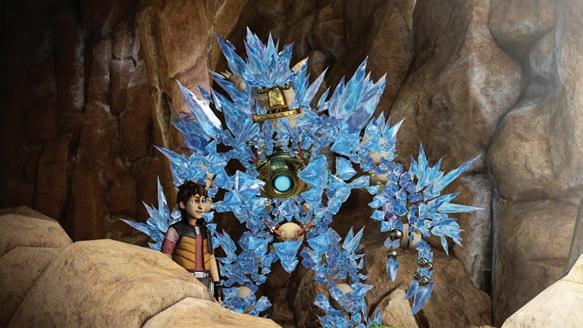
Despite the large amount of games available however, one of the major issues with the PS4 is the lack of big name launch titles to accompany it. Most of the bigger titles announced with it at E3 won’t be released until later this year, which is definitely going to put people off getting one so early in its life, especially if they own a previous generation console with a larger game catalogue. Despite this, the Playstation 4 has a lot of potential as a newer console and looks to have some exciting games coming out for it in the near future.





Does Square Enix’s latest RPG herald a return of the traditional Final Fantasy Game?
Michael O’Connell-Davidson reviews

Bravely Default is the best final fantasy game in a long while. It says a great degree about Square Enix’s flagship franchise that this is the line most game reviewers have opened with, but it’s true; Bravely Default captures the spirit of Final Fantasy V and brings it into the modern era. But how does it hold up?
A game that has much in common with Skies of Arcadia and other role-playing games now considered classics, Bravely Default feels both timely and antiquated; a strange mix of now-deprecated holdovers and some genuine prescience, the game immerses itself in SNESera RPG tropes like a pig in mud. In layman’s terms, that means that Bravely Default is another turn based game with a job system and reams of stats, and it’s not ashamed of that. Indeed, the game proudly announces that it can be played entirely one-handed (although, at the risk of leaning into juvenile humour, I’m not too sure who that feature really benefits).
Where it differs from its other turn based peers is in the ‘brave’ system, which allows you to effectively spend turns in advance, or save actions up and bide your time (this is called ‘default’, hence the name of the game).
For example, it’s possible (and sometimes advisable) to lead a blistering assault in the first turn and spend four turns worth of actions right off the bat - the tradeoff being that the party will be relegated to unguarded inaction for the next four turns. The same applies to enemies, and bosses will frequently save turns as a signal that they’re about to hit the party extraordinarily hard.

Bravely Default happily borrows from both old and new. The painterly aesthetic of the game’s towns and cities is phenomenal, and the music manages to be both fresh and nostalgic.
On top of a turn based battle system that does plenty different, Bravely Default will provide those with an RPG-itch that needs scratching incredible relief - for the first two thirds of the game, at least.
These initial two-thirds can be described as a masterpiece, but the last third brings the game down like an anchor. Its roots in gameplay that fell out of fashion over a decade ago become all too clear as the game requires you to complete swathes of content for no apparent reason. Its initially rote storyline - the protagonist’s town is

destroyed, so there are no risks taken in terms of exposition - goes so far off the deep end that it’s difficult to summarise without sounding as though you’re telling an overly elaborate joke.

What begins as a Final Fantasy X style pilgrimage becomes a tale of holy wars and parallel universes so at odds with the initial setting that it’s almost as though the developers knocked over a box of anime stereotypes and refused to clean them up. The way the game explores its themes is unwelcome and almost laughable; certainly, mindless killing is something that needs to be examined and discussed, but not in a game that encourages you to kill swathes of enemies for experience and gold.
Despite these flaws, it remains that the first two thirds of the game are excellent, and should be enough to encourage purists to see it through to the end. The game’s real shame is its wasted potential - during the middle chapter I really believed that Bravely Default might be the finest RPG released for this generation of handhelds. Unfortunately, what makes Bravely Default so appealing is what taints it: rose tinted glasses aside, ‘old’ Final Fantasy games had some real problems which have been unearthed to this game’s detriment. As a sign of things to come, it’s promising - but as a product, Bravely Default stops short of delivering a true homage to the golden-era of role playing games.
3/5

Now that the next gen is well and truly here, Rhys Thomas Elliott looks back at how gaming has changed, for better or worse.

















So the Xbox 360/PS3 generation is technically over. It was a generation that brought a lot to the gaming industry, both good and bad; here are a few of my picks for the best and worst things the 360/PS3 generation brought us.
GOOD: Wireless controllers
This is something that didn’t cross my mind until I played some N64 with a few friends over the summer. Traversing the living room felt like recreating a laser hallway scene in a cheesy action film. If we wanted to get past for any reason, we practically had to be become an acrobat; wires were left, right and centre. As much as I could do with the work out these days, I just love the neatness of wireless controllers.
BAD: Oh, it’s just a black and white, double-sided sheet... Thanks..
I miss detailed, coloured manuals. It’s so sad to see a few sheets black and white of paper with very bare bones information on them. When I was younger I’d love buying a game and then reading the manual on the journey home; I will always hold that feeling of excitement and wonder close. It’s a shame today’s kids will never get to experience this.
Fifteen years ago people would think of a stereotypical gamer as an outsider of society: a geek, a nerd, a loser. The segregated line between gamers and everybody else has blurred, and I frickin’ love it. Society has almost fully accepted gaming now. Obviously the older farts in the partisan sphere are still pretty against it, but they’ll be *ahem* gone soon. Gaming SMASHED the box office towards the end of the 360/PS3 era. GTA V broke seven world records, including the fastest entertainment property to gross $1 billion. It’s not just third party games that performed well though; over the summer here in the UK The Last of Us had allegedly grossed more than Man of Steel in its opening weeks. A first party Playstation game grossing more than THE FRICKIN’ NEW SUPERMAN MOVIE; if that’s not an exemplar of the popularity and acceptance of gaming today, what is?
BAD: I just bought a full game... right?
I’m sick of buying a game, only to have to wait for a 10 minute patch to download because they released it buggy and broken. Sure, DLC can be great when it adds to the experience, it’s just when publishers (and even developers) hold back ready content just to make a quick buck that can be infuriating. We are paying quite a bit of money for these video games. I want the full package on day one, with nice extras along the line if I want them. We are now even being charged for things that used to be FREE: extra skins, characters and even cheats. It is ridiculous. Not only that, the increasingly popular “free-to-play” model is being implemented into games we paid 40 quid for. Even Rockstar dabbled with this model in GTA V, with the ability to purchase online GTA dollars with real cash.
These days we hardly have to think about our save files. 500GB Hard drives and the Cloud more than do the job of holding every save file we could dream of (even including DLC, movies and entire game downloads). One story in particular comes to mind from my Gamecube days. It came down to the decision of deleting my 100 hour plus Animal Crossing file or my beloved Wind Waker file. Those days are forever gone now.
As you can see this generation has added many cogs to the machine, some progressive and some regressive. Only time can tell what the new PS4/Xbox One generation will bring to the table. The recent unveiling of Sony’s gaming streaming service Playstation Now has certainly caused a stir in the gaming industry though, boasting the ability to stream the entire Sony back-catalogue for a subscription fee (pricing TBA). Spotify and Netflix are having huge successes with streaming models in the music and television/film industries respectively, and it seems that the gaming industry is beginning to follow suit. If this model works, the gaming industry will be a vastly different space in ten years. We may not even need consoles.


You have worked with the BBC before on programmes such as Spooks, what was it like to work on a show as big as Sherlock?
I think as a director you probably just look at the content of the show and what you think you can bring to it rather than the ‘bigness’. If I felt I couldn’t bring something to it then I wouldn’t do it. And if you were overly aware of the eyes watching you at every step then I think you’d become a bit paranoid and never come out of your room. Also there are certain things you have to deal with no matter how big or small the show that are the same. So much of filming comes down to economics so no matter what scale the show is you still have to find the most effective way to tell the story within the time and money constraints you have.
Similarly when you read a script you see if it resonates, if it doesn’t then you shouldn’t go there. So for Sherlock being ‘big’, whilst I was mindful of it, it didn’t feel relevant. The only real impact though was the size and dedication of the existing fan-baseI was very mindful of that and felt a

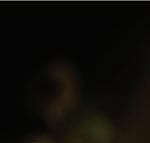


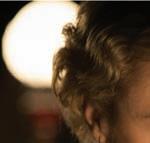

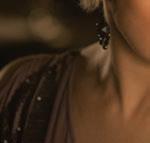





sense of responsibility and respect to them. Mind you, as I was a fan myself it kind of made sense that if I was making a Sherlock I wanted to watch then they would as well. Hopefully. Fingers crossed.
What do you think is the secret of the show’s popularity? Do you think it will continue after the forthcoming series?
The balance of emotion, thrills and humour. John as an everyman, Sherlock as a unique person becoming more humanized but capable of audacious utilitarian detachment and who is cleverer than most of us but doesn’t make us feel stupid. The exceptional qualities of Benedict and Martin. The fact we are moved, excited and laughing often in the same scene. So yes, I do think it will continue.
going to go from here? Is there anything in particular you would like to do next?
I’m looking at a lot of scripts at the moment off the back of how ‘In Fear’ went down, both here and in America. There’s a wide range - a graphic novel, a historical psychological drama, a messed-up post-war love story, a ghost story - which I guess reflects my eclectic interest, so at the moment it’s just a case of waiting to see.
IF I FELT I COULDN’T BRING SOMETHING TO IT THEN I WOULDN’T DO IT THEY ARE BOTH ACTORS AT THE TOP OF THEIR GAME SO THEY WANT TO KEEP PUSHING THEIR PERFORMANCE
How did you find handling the big personalities of Benedict Cumberbatch and Martin Freeman? What are they like outside of their characters?
they can and not sit back on their heels - which was massively exciting. There were moments where I’d watch the place we had arrived at and marvel how we had got there, they really are that good. And if you’re that good you can afford to be generous and thoughtful and inclusive and they both were.
What would you like to see happen to ‘Sherlock’ and Watson in the future?
I think the characters are evolving in a way that tests their humanity and their skills, and their brains, and their loyalties, and their fears and their weaknesses and their strengths so more of that is fine by me... Who is your favourite character in Sherlock and why?
I love both characters equally for their opposite values and character and for how on some psychological level they cross over and meet on some level.
Do you see yourself as Sherlock or Watson and why?
You directed ‘In Fear’ earlier this year and obviously Sherlock, do you know where you are
They are both actors at the top of their game so they seem to want to keep pushing their performance as much as
Hmmm - high-functioning sociopath or man numbing psychological scars by exposing himself to danger...? I’ll leave that one.


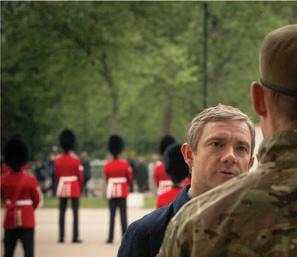





As I mentioned before you have worked on Doctor Who, what is it like to work with Mark Gatiss and Steven Moffat?
Mark and Steven are both very different. Steven is unique and original in his thinking, incredibly brilliant on story and is quite intense. Mark is incredibly erudite and witty. His knowledge of the source material and ability to turn a gag are phenomenal. He is also an extremely charming person.
The basic tool you have when directing is a script – everything starts from there. And since Mark and Steven are an incredible writing team, it is amazing working with them.
What did you think to the cliffhanger at the end of series 2? Do you think this has changed the nature of the show?
FrWatson. This enduring friendship is the heart of the show.
I can’t say for sure whether the show will continue, but everyone working on it seems to still love doing it. As a fan I can say I certainly hope so.
Who is your favourite character in Sherlock and why?
It’s very hard to choose, and I am sure that I should say one of the two leads, but I can’t watch Una Stubbs as Mrs Hudson without being filled with a joyful happiness.
You have worked with the BBC before on programmes such as Spooks and Doctor Who, what was it like to work on a show such as Sherlock?
Sherlock is amazing to work on. First of all the writing is tremendous, secondly the actors are these hugely exciting movie stars and thirdly there is a massive, dedicated following for the show, so you know you have an audience before you even start. The fun you get to have as a director, designing cool shots, telling these mad stories and playing with different tones from funny through to touchingly sad, is a constant buzz.
How did you get into this job?
I wanted to be a director as a child, though I forgot about it till my late twenties. I then went after it doggedly. I pursued getting a start as an assistant director, got some time on the floor, observed how other people did it and applied that to an understanding of all the movies and TV shows that I watched. After that I blagged gear and worked with mates to make short films until I made something good enough to get me an actual paying job. Since then I have just continued to try and learn and develop.
Obviously the cliffhanger at the end of series two was amazing telly. Circumstances dragging out its resolution for so long obviously raised appetites to a near hysterical state. Isn’t that fun? I guess the death of Moriarty changes lots, as in the books he was the only really consistent nemesis, but having seen what Moffat has achieved on Doctor Who, you can’t doubt his ability to develop villainy and monsters.
STEVEN IS UNIQUE AND ORIGINAL IN HIS THINKING AND MARK IS INCREDIBLY ERUDITE AND WITTY
What do you think is the secret of the show’s popularity? Do you think it will continue after the forthcoming series?
Thrilling stories where humour, plot and emotional highs and lows all have their place and make Sherlock the popular success it is. Sherlock has this weird thing of being removed from most of the human race due to his incredible genius. This isolation makes him a semi tragic figure, saved only by the warmth of his relationship with
SHERLOCK HAS THIS WEIRD THING OF BEING REMOVED FROM MOST OF THE HUMAN RACE
Are you a fan of the Sherlock Holmes novels? If so, are there any characters, villains or storylines you would like to see being implemented into the show?
I loved the Rathbone era Holmes films and as a young boy devoured all of the novels. What I love about Sherlock the TV show, however, is how it manages to change nearly everything in the original material and yet somehow stay incredibly true to Conan Doyle’s vision. Steven and Mark have such a love for the characters and take such joy in the deductions and convoluted plots, that they carry the spirit of the originals books in everything they do.
What would be your Dream project as a director?
If you had asked me when I was ten years old I probably would have said: Sherlock Holmes, Doctor Who and Star Wars, so I suppose I am only lacking one of the childhood fantasy projects now. Truth be told, I have been lucky to direct a wide variety of material from very dark to frivolous fun. Next up is ‘Peaky Blinders’, written by Steven Knight and starring Cillian Murphy, Sam Neil and Helen McCrory.
Charlie Andrews took a trip to 221B Baker Street to experience the highly-anticipated third series of Sherlock. Did it live up to expectations or did the show fall with Sherlock? Quench has the review
So I have just finished watching the third series finale of Sherlock and I have to admit there is a Moriarty-esque grin spread across my face. For me, the cliffhanger has saved the series and I am now looking forward to series four more so than I did three. Now, however, I am faced with the monumental task of reviewing such a highly anticipated series, trying to touch on everything, giving my personal opinion whilst trying not to offend my friends too much… fancy swapping places Sherlock?
This was the episode everybody had been waiting for; finally the world would know how Sherlock survived his suicide. Did he use a bungee cord? Did he dupe everyone by using Moriarty’s body? Did he emulate Mary Poppins by floating down with an umbrella?! We all wanted to know, but didn’t they make us wait! Many had expected the episode to open with the explanation that was so direly needed but the explanation was not forthcoming. Instead, the opening episode delighted in teasing its audience with a series of contrived explanations, each more ridiculous than the last. These were amusing asides, employed to lull a credulous audience in desperate need of an explanation, regardless of how fantastical.
A cameo by Derren Brown, a cover-up for secret lovers, these theories had me in stitches but every time one was shown we were tricked into believing they were the explanation we so craved. It was coquettish, playful stuff and worked well, cutting through the emotional debris the situation had also created. But the episode became detrimentally burdened by the weight of that cliffhanger. In one sense, it is easy to write a thrilling conclusion –simply engineer a scenario or event so shocking or impossible – but the test of a truly great cliffhanger comes later, when it is time to resolve those events. The more complex the situation, the more time must be spent unravelling it. If you skimp on the explanation the audience will understandably feel cheated, as if the cliffhanger carried no weight at all and they have been cheated. On the other hand, spend too long working through the aftermath and the show strays too far from the formula the people originally came to love. Although I think The Empty Hearse does fall foul of the latter problem, it does a fantastic job at working through the emotional repercussions of that fall. The pain exhibited by Watson was full of anguish and believably gut-wrenching, thanks to Martin Freeman once again being on excellent
form as Watson (his punches grew funnier with each throw). And Cumberbatch’s Sherlock was as compelling as ever, yet there were more nuances this time around. Ostensibly, Sherlock was unaffected by his experience, yet there was something new to be detected – a new-found appreciation of friendship and the cost of isolation – which surfaced in the barbed exchanges with Mycroft.
After all of the recriminations and tears, we finally learned how Sherlock did it. Or did we? Ever since the series two cliffhanger, writers Moffat and Gatiss insisted that the answer to the popular question was shown, although hidden, within the Reichenbach Fall. However, Holmes did eventually divulge his version of events, yet it was implied that the real solution still remains a complete mystery. Holmes knows better than most that explanations never satisfy. Behind the impossible, the unfathomable, always plods the mundane, unnoticed. Who knows if we’ll ever get a definitive resolution.
DID HE USE A BUNGEE CORD? DID HE EMULATE MARY POPPINS BY FLOATING DOWN WITH AN UMBRELLA?! WE ALL WANTED TO KNOW, BUT DIDN’T THEY MAKE US WAIT!
By this point we were two episodes in, the previous series’ cliffhanger had been resolved and it was now time to move on and turn attention towards the current story arc. Now I have to say I really didn’t like this episode, it dragged on a lot. It didn’t feel like Sherlock, and I had got the impression that this was a very different show; it was more interested in exploring the life of the world’s greatest detective – his personal relationships and his struggle to maintain them – than seeing him apply his trade.
The Sign of Three was a particularly extreme example of this, with Sherlock on Best Man duties at Watson’s wedding. Despite not being particularly to my taste or expectations for the show, it was done with a deft touch. Sherlock’s

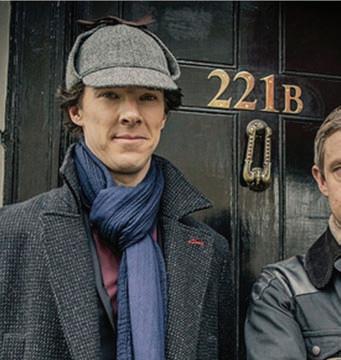

























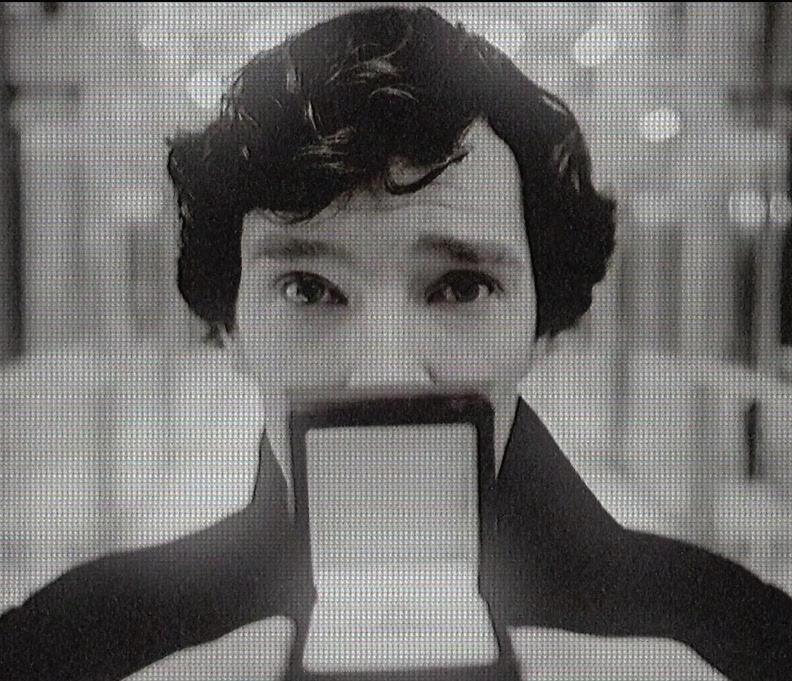

speech was, as always, an opportunity for Benedict Cumberbatch to showcase his immense talents and hold court for nearly a full ninety minutes. Watson, and indeed most of the other cast, played second fiddle to Holmes. Everybody expected Sherlock to balls it up, and in truth, he did for quite some time, before totally redeeming himself with a very touching, if verbose expression of love for his friend.
But again it was the pacing that was at fault and the plot was composed from offcuts. It’s a shame since the concept of using the Best Man’s speech as a framing device for a mystery with the denouement being at the reception is quite ingenious. Yet the episode never fully commits to it. What followed were scraps of cases, relayed by Sherlock as amusing asides or anecdotes to demonstrate what a great guy Watson is. Holmes even reveals what happened on the stag do, and while undeniably amusing, it seemed to go on for an age. The rhythm was just erratic, never allowing you to really ease into the plot, and the danger of there being a murder at the wedding was revealed far too late for there to be any real suspense. Furthermore, after the events of the previous episode, it felt like it took place in a vacuum. There was no mention of John’s kidnapping and after the tantalising conclusion of The Empty Hearse, which gave us a glimpse of this season’s big bad Charles Augustus Magnussen, there was oddly no mention of him in The Sign of Three. With one episode left, time was running out to establish him as a worthy successor to the brilliantly unhinged Moriarty.
His Last Vow
In the last episode, at the wedding of John and Mary Watson, Sherlock took a vow of his own. He pledged to always keep John safe, far out of harm’s reach. But faced with a worthy adversary, seriously high stakes, and a multitude of moral dilemmas, Sherlock was in danger of breaking that promise having no sooner made it. Fortunately, it also produced the outstanding episode of the third series. Once again the excellent performances were present, but they benefitted from a structured and well-paced plot. Something that has been sorely missing of late. After the erratic storytelling
of The Sign of Three, it was a brilliant return to form for a show that I had feared was losing its way. This renewed focus can partly be attributed to the introduction of a real villain in the shape of Charles Augustus Magnussen. Played by Lars Mikkelsen, Magnussen provided a sharp, cold contrast to the unhinged pageantry of Moriarty. He was a different type of antagonist; his cultured demeanour masking some pretty vile traits – the intrusion of personal space, touching the food of others, licking faces, and the need to ‘relieve’ himself in Sherlock’s fireplace. But there was something even more unsettling about Magnussen. He stood as a terrifying reflection of what Sherlock could’ve become. He shares so many of the detective’s mental gifts – what is Appledore if not a nightmarish take on Holmes’s benign memory palace – but whereas Sherlock has embraced the company of others, learned the value of friendship, and has used those skills to help others, Magnussen withdrew from society into the recesses of his intellect and used those abilities to manipulate others. Magnussen was also interesting because unlike
He stood as a reflection of what Sherlock could’ve become
Moriarty he wasn’t a flamboyant psychopath; he was a bully. Nowhere was this more evident than the scene in which he repeatedly flicked a helpless Watson in the face. That feeling of impotent rage was there for all the audience to share in. A wonderful villain provided a continual threat but also injected the episode with a sense of urgency and rhythm that has been lacking this series. Arguably the biggest reveal was the truth about Mary Watson. She was once an assassin with a bloody past, which Magnussen harnesses as a way to get to Sherlock. Whilst interesting in itself, it’s real dramatic worth was the way it provided a new insight into the character of Watson. Early on in the episode, a sleeping Watson is woken by the flashbacks of war – the same dreams that troubled his sleep in the very first episode, A Study in Pink. But we come to realise that these aren’t nightmares – they’re dreams of desire. Watson longs for danger and is drawn to those who attract it, like a moth to the flame. It’s not so much a man learning about his wife’s secret past but a person uncovering a deeper and more harrowing truth about himself. Watson is not a victim of Holmes’s mania but an eager participant. He is another addict. And if the mesmerizing events of the episode were not enough, how about that ending? The crown prince of crime is back. Right now it’s unclear if he is really alive or ingeniously tormenting Sherlock from beyond the grave. One thing that needs no clarification, however, is that there are dragons to be slain and that England, more than ever before, needs Sherlock Holmes. It is a great and vital set-up for a fourth series. Just please don’t let it be two years away.
20 14 20 14
Imran Bukhari analyses the 86th Academy Award nominations and predicts who he thinks will win come March 2nd
Awards season is among us once again, culminating with the illustrious ceremony that is the Academy Awards or the Oscars as they are more commonly known. The golden statuette of a bald man is so revered in the world of film that just being nominated is regarded as an achievement and can change an actor or director’s career radically. The variety of films featured this year are particularly diverse, and highlight the exciting year in cinema that 2013 has been.

The number of nominations for Best Picture recently increased from five to a maximum of ten; nevertheless the most prestigious award of the ceremony has still been very much a two horse race. The competition has always followed the same template of a technological marvel vs. an emotional drama, Life of Pi vs. Argo, Avatar vs. The Hurt Locker and Inception vs. The King’s Speech. This year is proving to be no different, as it seems to be a battle between Gravity and 12 Years a Slave. The only film that could potentially upset this duel is American Hustle, as The Wolf of Wall Street may prove to be too controversial for voters. Also on the peripheral are Her, Captain Phillips and Dallas Buyers Club, all are very worthy of their nominations but alas won’t be challenging for the main prize. It is fair to say that recent winners of this award (Argo) have not actually been the best film in their respective year and cannot be regarded in the same breath as classic winners like The Godfather or Casablanca. However 12 Years a Slave is without doubt the best film of the year and unlike its counterparts it will soon be considered as a masterpiece. If the Academy fails to honour the film now, it will be looked upon as a grave mistake in the near future.
WILL WIN: 12 Years a Slave
COULD WIN: American Hustle/Gravity SHOULD WIN: 12 Years a Slave
Out of all the categories this year, this seems to be the most predictable. Cate Blanchett has swept all the preliminary awards and it would be a massive surprise if she doesn’t add a second Oscar to her collection. If anyone has a chance to rival her then Amy Adams will take it on the night; having been nominated five times the Academy may feel now is the moment to finally reward her. Special mention must also go to Meryl Streep who received an unprecedented eighteenth Oscar nomination this year for August: Orange County.
WILL WIN: Cate Blanchett – Blue Jasmine
COULD WIN: Amy Adams – American Hustle
SHOULD WIN: Cate Blanchett – Blue
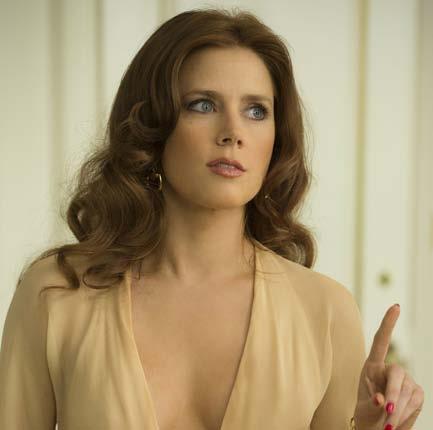
Most years the Best Director Oscar goes to the director of the Best Picture winner. Therefore if 12 Years a Slave does take the award, then surely its director Steve McQueen will also win. That would potentially be a historic Oscar moment as, if McQueen does win, he will become the first black man to ever win Best Director. However Alfonso Cuaron is the favourite to take this award; demonstrating his directing prowess by bringing Gravity to the big screen with such skill. Waiting in the wings is American Hustle director David O. Russell, who having picked up his third Oscar nomination has been consistently producing films of a high level. Martin Scorsese is also in the running; at the age of 73 he would be forgiven for slowing down. Instead he directed the odyssey of sex and drugs that is The Wolf of Wall Street with consummate ease. Ultimately they will both be outmuscled by Cuaron’s pioneering work.
WILL WIN: Alfonso Cuaron – Gravity COULD WIN: Steve McQueen – 12 Years a Slave
SHOULD WIN: Steve McQueen – 12 Years a Slave
BEST PICTURE Jasmine
This is by far one of the most competitive Best Actor races in recent times. The standard is so high this year that even Tom Hanks powerful performance in Captain Phillips didn’t make the cut. Historically this category has been relatively easy to call, for example Daniel DayLewis was a certified guarantee last year for Lincoln. This year however a case can easily be made for any of the five men. Christian Bale is nominated for the first time in the Best Actor category, which is hard to believe considering his commitment to his craft. His role as an overweight con man with a dodgy toupee in American Hustle is strong, but doesn’t stand a chance of winning against the other contenders. Chiwetel Ejiofor’s lead role as Solomon Northup a free man turned slave, would walk home with the Oscar any other year. His ability to communicate moments of despair and acts of bravery with just the use of his eyes gives the audience a shining beacon of hope in a horrific circumstance. Unfortunately the subtlety of his portrayal may count against him. The actual frontrunner to win is Matthew McConaughey, who has turned his career around dramatically. He has gone from starring in mediocre romantic comedies to working for some of the best directors in Hollywood. His physical body transformation as an AIDS sufferer made him almost unrecognisable and should be enough to give him the win. The dark horse here is definitely Leonardo DiCaprio The actor is long overdue an Oscar, this being his fourth nomination in a twenty year period. Most telling is that in a career that is littered with sublime performances; his role as Jordan Belfort is still a career best. Mixing physical humour with rampaging speeches, he remains both parts despicable and captivating. Could this finally be his time? It is going to be close...
WILL WIN: Matthew McConaughey – Dallas Buyers Club
COULD WIN: Leonardo DiCaprio – The Wolf of Wall Street
SHOULD WIN: Chiwetel Ejiofor – 12 Years a Slave
Last year’s Best Supporting category featured five veteran actors who had all won an Oscar before; which was an Academy first. So it is great to see such an eclectic list this year of rising stars and newcomers, including Barkhad Abdi in Captain Phillips. Like his co-star McConaughey, Jared Leto underwent a full body makeover in order to play a transvestite. After taking a hiatus from acting for six years to focus on making music, this could be an Oscar winning comeback. The signs do indeed look promising for the multi-talented Leto. On the other hand Michael Fassbender was snubbed two years ago for his haunting performance as a sex addict in Shame. Thankfully he has been acknowledged for his turn as a psychotic and vindictive slave master this time. As the embodiment of evil in 12 Years a Slave he never falls into caricature, managing to find real depth. The Academy could atone for their sin by giving Fassbender the award, but his role may prove to be just too dark for their tastes. What is for certain is that Fassbender is not afraid to take on difficult characters and as a result he will be a regular competitor for future Oscars. Such is the unpredictably of this award that even American Hustle’s Bradley Cooper could cause a shock.
WILL WIN: Jared Leto – Dallas Buyers Club COULD WIN: Michael Fassbender – 12 Years a Slave
SHOULD WIN: Michael Fassbender – 12 Years a Slave

It seems Jennifer Lawrence can currently do no wrong; she is very much a girl on fire. Setting the box office alight with The Hunger Games franchise and blazing her way to a Best Actress Oscar for Silver Linings Playbook. It is extremely likely that she will cap the year off by adding a Best Supporting Actress to her mantelpiece. Standing in her way is Lupita Nyong’o in her first ever film role. If Ejiofor is the soul of 12 Years a Slave than Nyong’o’s Patsy is the heart of the film. She goes toe to toe with the other acting heavyweights in the film and would be equally deserving of winning the Oscar. This could go either way.
WILL WIN: Lupita Nyong’o – 12 Years a Slave COULD WIN: Jennifer Lawrence – American Hustle
SHOULD WIN: Lupita Nyong’o – 12 Years a Slave

BEST ANIMATED FILM: Frozen
BEST FOREIGN FILM: The Great Beauty
BEST DOCUMENTARY: The Act of Killing
BEST ADAPTED SCREENPLAY: 12 Years a Slave
BEST ORIGINAL SCREENPLAY: Her

FEBRUARY
ROBOCOP
Starring Joel Kinnaman, Gary Oldman, Michael Keaton
Directed by Jose Padilha
APRIL
CAPTAIN AMERICA: THE WINTER SOLDIER
Starring Chris Evans, Scarlett Johansson, Robert Redford
Directed by Anthony Russo, Joe Russo
MAY
GODZILLA
Starring Aaron Taylor-Johnson, Elizabeth Olsen, Bryan Cranston
Directed by Gareth Edwards
JUNE
HOW TO TRAIN YOUR DRAGON 2
Starring Jay Baruchel, Kristen Wiig, America Ferrera
Directed by Dean DeBloi
JULY
HERCULES
Starring Dwayne ‘The Rock’ Johnson, John Hurt, Ian Mcshane
Directed by Brett Ratner
AUGUST
SIN CITY: A DAME TO DIE FOR
Starring Jessica Alba, Mickey Rourke, Joseph GordonLevitt, Bruce Willis
Directed by Frank Miller, Robert Rodriguez
SEPTEMBER
WISH I WAS HERE
Starring Josh Gad, Jim Parsons, Ashley Greene
Directed by Zach Braff
DECEMBER
THE HOBBIT: THERE AND BACK AGAIN
Starring Mar tin Freeman, Benedict Cumberbatch, Evangeline Lilly
Directed by Peter Jackson
Kieran Brettle-Aldridge recommends this years remakes as the ones to watch in 2014
The upcoming film releases of the year are always something to get excited about after the New Year. Whether it’s a brand new action blockbuster, a drama that pulls at your heartstrings or maybe just a comedy that doesn’t even take itself seriously; 2014 certainly has plenty to offer. Despite 2014 being a year that appears saturated with remakes and sequels, the transformations of some of our old favorites look set to match if not better the originals. Godzilla is one of the most well known mega monsters in the film genre as well as stories all over the world. After being forgotten in the fad focuses of vampires and zombies in the past few years, it only seems logical to remake a film with a compltely different threat to the human race. Giving us an apocalyptic view of wha essentially is a dinosaur destroying our modern world, leaving it with almost no hope, the remake offers a refreshing sense of morbidity. The trailer of the remake creates a very different and certainly much darker tone than the 1998 version.
overall quality and mood of the films. New cast member and Oscar nominee, Mark Wahlberg, takes to the lead in the fourth film. Wahlberg plays a mechanic who makes a discovery that brings the Autobots, Decepticons and even the government to his front door. The film sees the return of familiar robotic faces such as Bumble Bee and of course Optimus Prime. Expect to see this on the silver screen June 2014
With a strong cast including Kick Ass’ Aaron Taylor-Johnson and Breaking Bad star Bryan Cranston, this new take could be the forefront of film in 2014. Additionally with technology having come so far in the past decade, these remakes take the special effects to the next level. The horrid monster that is Godzilla will take a new lease of life in May.
Godzilla isn’t the only CGI epic of this year, with the fourth installment of the Transformers franchise arrives in the form of Transformers 4: Age of Extinction. Despite the previous films in the franchise receiving mixed reviews, the new cast dynamic looks to improve the
Another one to watch is Hercules due for release this summer. Starring Dwayne ‘The Rock’ Johnson as the warrior release this summer. Starring Dwayne ‘The Rock’ Johnson as the warrior himself, alongside Golden Globe winner Ian McShane the films cast looks promising. With this new Hercules film being set after the legend of the twelve labours, the legendary character wanders the lands as a mercenary with his faithful companions to gain gold. Based on the famed comic that debuted in 2008, Hercules is truly tested when the King of Thrace and his daughter ask for his help in defeating a tyrannical warlord. If it’s traditional fist on fist action you want, this is the film that you should be looking forward to. Hercules: The Thracian Wars will be here July 2014.
But there are so many films to get excited about this year it would be hard to name them all. There is yet plenty more to look forward to in the form of; The Hobbit: There and Back Again, The Hunger Games: Mockingjay Part 1, and the multiple Marvel films which are sporadically peppered in release date throughout the year. If you’re planning a trip to the cinema this year, its safe to say you won’t be stuck for what to see.
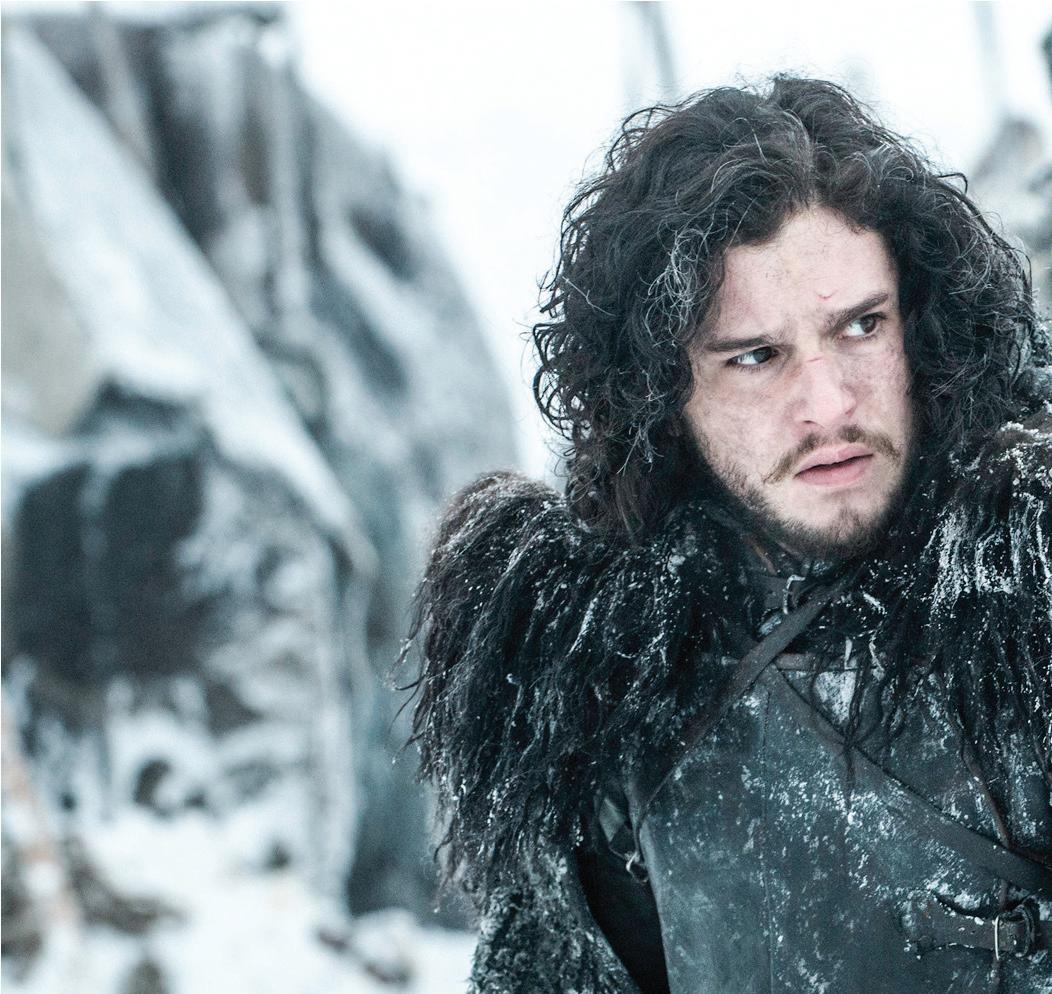
As a nation we have had so many great TV shows hit our small screens over the past decade. The high quality of which we have been lucky enough to experience however, has made TV mourning a natural cultural feeling. With so many of the shows we hold most dear coming to an end of late, you have to question whether this is this the end of the major TV series era?
With viewing figures rolling into the millions, crazes over series with on-going storylines and enigmatic characters easily took hold. But their endings have left viewers with TV voids; voids that are increasingly hard to fill. One such show is Smallville, which ran from for ten series from 20012011. Its impressive run ended with three Primetime Emmy’s under its belt. Even though the show was continually successful, the finale left viewers sad and empty, unable to fulfil their Superman needs.
Another show worthy of mention is the much loved crime series, Dexter. Running from 2006-2013, the show spanned 8 years with a corresponding 8 seasons. Starring Michael C. Hall, many fans became obsessed with the main man. The unusual plot of a serial killing cop who investigated homicide was really enough to keep its fans on the edge of the edge our seats, and left us with enough intrigue for it to continually grip our interest. Thinking of Dexter in terms of years of your life devoted, fans were obviously left scarred without it…I mean think about being in a relationship for 8 years, it’s no different.
The legendary Breaking Bad is a further example of a major series, which pulled in the viewers from all over the world. Running for 5 seasons, the American mega show was continually praised, even gaining two Golden Globes. The touching storyline of man, whose death is certain, providing for his family once he’s gone, was perhaps one of the most notable and drawing things about the structure of the series. Despite fans being satisfied with what was thought by many to be a very fitting finale, a hollow feeling ensued throughout its international audience.With these TV cavities

already taking hold of their devoted audiences are faced with yet more TV mourning from imminent rumoured endings. One such morbid possibility comes from the makers of Boardwalk Empire. The HBO period show, is due for departure after the fifth season; which will most likely air the end of 2014. To name yet another US export; AMC’s The Walking Dead, soon looks to becoming completely flat lined. Based on comics and rumours of the infection of its main protagonists from fans we can only suspect a sad but inevitable ending. However all is not lost as 2014 promises to bring plenty to the table. Brand new big budget shows such as The Tomorrow People and Mob City are just beginning to gain momentum, looking to fill our TV abysses. The Tomorrow People focuses on super powers in a Sci Fi thriller context, possibly a solution to tide us over the loss of Smallville. Mob City on the other hand, based on the book L.A. Noir (not to be confused with Rockstar’s game of a similar name L.A. NoirE), brings us some classic cops and robbers drama, following a very stylised theme. Here we see parallels with some of the crime endings of late and intensity of narrative such as that seen in Breaking Bad. Although it would appear to be the end of an era with so many highly rated TV shows ending and audiences becoming more and more fragmented, there is also the exciting prospect of the start of something much bigger. With TV shows becoming more prominent than they ever were before mostly down to accessibility of international shows being made easier, series are becoming internationally prominent rather than just nationally. Rather than being the end of an era or maybe it’s the start of another. With plenty of new programmes to look forward to in the coming year we may find maybe some new favourites, building on those we have already taken to our hearts. Despite the shows that have ceased giving us some of our most memorable moments in TV history, the future of TV looks to build on that history refilling the vacant TV spaces in our lives.
Is the TV Series as we know it dead? Kieran Brettle-Aldridge investigates
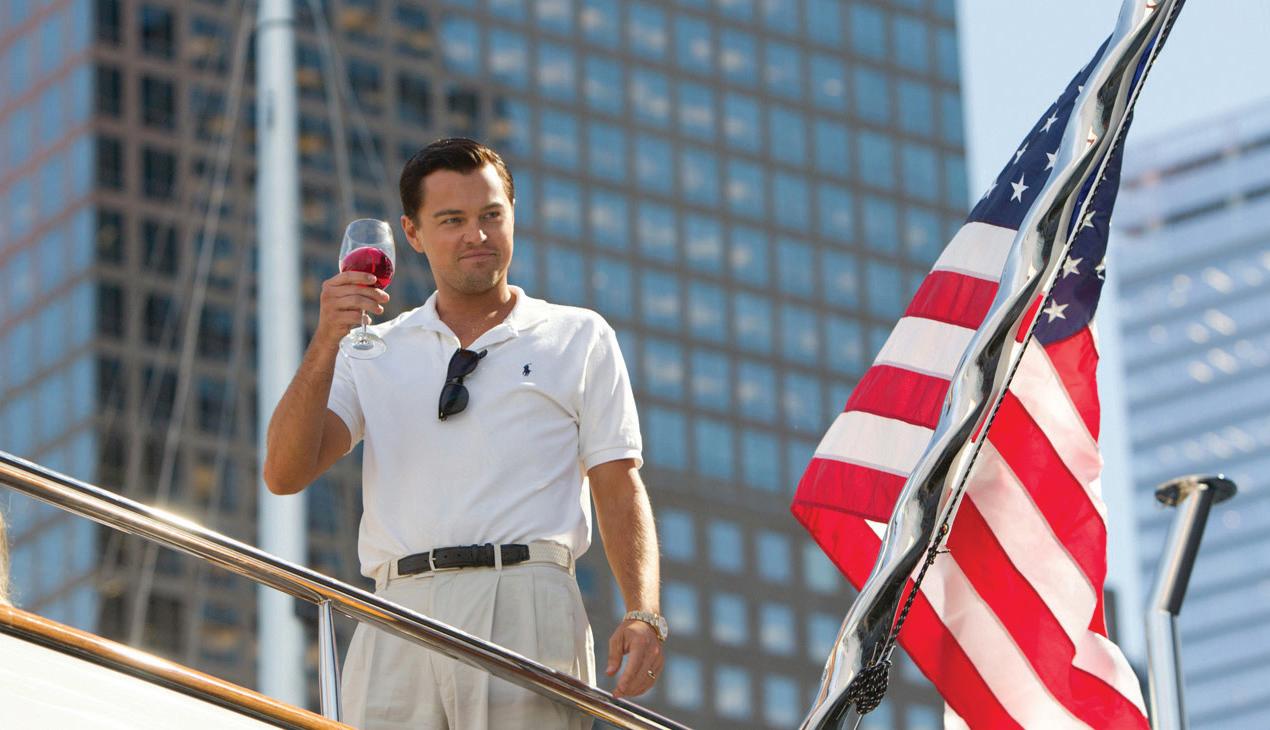
MORE ONLINE:
DIRECTOR: Martin Scorsese
SCREENPLAY: Terence Winter

STARRING: Leonardo DiCaprio
Jonah Hill
STUDIO: Red Granite Pictures
BUDGET: $100m
In a few decades time, when film historians come to look at the filmography of the great Martin Scorsese, The Wolf of Wall Street will be held in the same regard as Taxi Driver, Raging Bull and Goodfellas. A bold statement maybe, but like Raging Bull and Goodfellas it is the microcosmic story of one man’s rise to power and ultimate fall from grace in his own private world and is done in a way only Scorsese knows how. The true story of Wall Street giant Jordan Belfort, The Wolf of Wall Street offers the audience an insight into the temptations and dangers of having more money than sense. It is Scorsese’s most focused and funny film in years and DiCaprio’s best chance at finally winning that Oscar.
DiCaprio’s portrayal of Belfort is pure genius. Perfectly bridging the gap between tragedy and comedy, the audience cannot take their eyes away from him for the film’s three hour running time. Matthew McConaughey’s brilliant cameo as Belfort’s mentor shows that there’s no stopping the ‘McConaissance’ in a hilarious dinner scene featuring that chest-beating motivational chant. In fact, the only time DiCaprio isn’t the star of the show is
5/5
the ten minutes when McConaughey’s deranged Mark Hanna is on screen. The film’s only weak spot is its lack of strong female characters. Cristin Milioti (How I Met Your Mother) gives a powerful turn as Belfort’s longsuffering first wife and Joanna Lumley oozes British class as his Auntin-Law. However, these characters, specifically Margot Robbie’s Naomi, seem to be subordinate to the dominating male characters of the film. However, having said this when it comes to looking at performance and narrative, The Wolf of Wall Street stands head and shoulders over most films in recent memory. It’s hilarious and tragic in equal measures and is a witty and savage depiction of one man’s fall from the top.
There have been reports of Academy Award voters walking out of screenings of this latest pairing of Martin Scorsese and Leonardo DiCaprio, disgusted by its portrayal of drug use and immorality. Anyone who thinks that this film glorifies its protagonist and his behaviour is totally missing the point. Behind the comedy and the excess is an unflinching satire on the darkest side of the American Dream.
That Awkward Moment is the first of its kind - a date movie that appeals to both sexes as a “dick-flick”. It’s full of awkward moments and toilet humour that make sure that it’s not just film for girls. My audience had an unexpected 60/40 split of female to male. For me and most of the other female viewers the main appeal was Zac Efron, so it was a serious surprise when it was the writing that stole the show. It is full of hilarious banter and ballsy humour created by the three male leads: Zac Efron, Miles Teller and Michael B. Jordan. Respectively they play Jason, Daniel and Mikey who are successful twentysomethings, living in New York. The trio make a pact to stay single after one of them suffers heartbreak which is simple enough for Jason and Daniel who already actively avoid a relationship longer than a couple of weeks.
This film is unique in presenting relationships from a male perspective, giving a fresh take on the typical romantic comedy. Yet That Awkward Moment has received a lot of criticism for being uncomplimentary to both sexes. As previously outlined, the men come across with no respect for women and are very arrogant about
2/5
their ability to avoid relationships. The women are ditched as soon as they want to start something serious, yet as the relationship develops, they lose their identity completely.
The characters aren’t quite as two dimensional as you might imagine, they may start the film as egoistical womanisers but they learn something along the way.
Zac Efron and co. handle the script’s dirty humour with flair but unfortunately we don’t see enough of the girls to know if their talents could have provided the film with extra comic moments. Poking fun at traditional rom coms, the guys are seen turning to the ultimate comfort foods; Ben and Jerry’s and (standing in for cocktails) whiskey.
This film is very light hearted and it should, I feel be treated as such. There are many predictable moments so it is still a typical romantic comedy in that respect. While the “boy meets girl” story may have been done a thousand times, That Awkward Moment manages to give a fresh male perspective on a date movie which I found entertaining and will perhaps lead to many more male rom coms in the future.
Jenny Morgan
“American Hustle’s 10 oscar nominations are well deserved”

David O Russell once again joins forces with Christian Bale, Amy Adams, (The Fighter) Bradley Cooper and Jennifer Lawrence (Silver Lining’s Playbook) for his latest film venture, American Hustle.
This is a film of deception and redemption. The world O Russell stylishly paints is surmised by its protagonist, Irving Rosenfeld (Bale) who suggests that there is ‘no black and white, only grey’. Although given its glamorous 70s setting perhaps no glitter and gold, only beige is more apt.
O Russell sets this these central tenets of the film in its opening sequence, as the dispassionate title page reads ‘Some of this actually happened’. To say anymore as to the reality of the events would spoil the illusory quality of the film, a great source of black humour, big hair and glitter.
The narrative centres itself on the set up of Mayor Carmine Polito (Jeremy Renner) by Irving Rosenthal and Sydney Prosser (Adams) in order to be let off for their previous criminal activities as fraudsters. They are coerced into working with FBI agent Richie DiMaso (Bradley Cooper) in order to pursue white-collar crime, with the promise of 4 busts getting Irvine off the hook. Groovy wardrobes, paisley velvet jackets and 70s pastiche clothing are set against the turbulent backdrop of Vietnam and Watergate in 1970s America. The glitz and glamour is catalysed by an excellent soundtrack that includes: Duke Ellington, Sinatra and Bowie (to name but a few).
Excellent although a slightly uncharacteristic role for Bale, he plays the troubled art dealer and street hustler, Irving Rosenfeld. For a supposed enigmatic conman,
he is often left bumbling and introspective, with his parodic and somewhat ridiculous hairpiece.
Amy Adams, scantily clad (throughout the film, actually) is excellent in the role of Rosenfeld’s erudite lover and fellow schemer, the pseudo-English aristocrat, Sydney Prosser, or Lady Edith, depending on whom you believe. Her opposite number (both vie for Rosenfeld’s affection) is beautiful Jennifer Lawrence who plays the clumsy (somewhat pyromaniac) wife of Irvine: Rosalyn Rosenfeld. She plays the tragic diva that eventually unravels the FBI sting, by blubbing to her lover, all done whilst dancing (marigold clad) to Live and Let Die around her living room as the film reaches its climax.
Highlights of the film include Bale’s corybantic comb over, seeing Bradley Cooper in rollers (he has an excellent perm) and a rousing rendition of Tom Jones’s Delilah by a smashed Bale and Renner. The reflective internal monologues of the characters show a clear nod of affection to Scorsese’s Goodfellas, whilst the film is punctuated throughout with vignettes of hilarious black comedy.
The plays tumultuous climax of double and triple crossing is augmented superbly by Bale’s wily character, as he sets up DiMaso in order to save his friendship with Carmine Polito. It is a tale of criminals with a heart of gold, comparable to Stephen Frear’s 1990’s film Grifters. The film’s massive style marks another hit for O Russell, with 10 Oscar nominations well and truly deserved.
The Coen brothers’ latest offering follows a heavily fictionalized recreation of the New York folk scene of the 1960s, shortly before the great folk revival. Effortlessly hilarious without sacrificing poignancy, Inside Llewyn Davis explores life in a pregentrified Greenwich Village through the eyes of a failing folk singer in crisis. The career of Oscar Isaac’s Davis is loosely modeled on the influential but commercially unsuccessful singer-songwriter Dave Van Ronk, who influenced and performed with widely celebrated musicians including Bob Dylan, Joni Mitchell and Leonard Cohen without ever penetrating popular culture. Prodigiously talented but unable to connect with his audience or industry, Llewyn wanders the streets of New York, sleeping on the sofas of whoever will take him in whilst waiting for a call from his increasingly inept agent.
The film follows Llewyn through a poverty-stricken and frustrated existence as he avoids the series of crises enveloping his life – the suicide of his former partner, the stasis of his career as his lesser-talented friends begin to show signs of success, his absolute failure to supervise anyone or anything in his care and his increasing selfimposed alienation from his social circle. Llewyn’s failure to address any of these issues in turn threatens to throw his life out of control, whilst the lines of cause and effect blur to the point where the audience is unsure whether to dislike him for his apathy, or to empathise with his helplessness. This is in part testament to Isaac’s assured performance, which must transverse from petulant tantrums at friend’s houses to atmospheric performances in intimate bars. The otherwise melancholy
tone of the film is effortlessly and gratefully lifted through interventions from a number of supporting cast members. Adam Driver (Girls) excels as the baritone contributor to God-awful space-race themed anthem Please Mr. Kennedy, whilst Stark Sands is excellent as Troy, a painfully socially awkward but likeable soldier and part-time performer. Carey Mulligan (Shame, The Great Gatsby) turns out a staggeringly funny performance as embittered and impregnated Jean, poetically berating Llewyn with an odd but effective mix of disgust, nausea and sympathy. Joining the cast are Justin Timberlake, Garrett Hedlund and Coen’s stalwart John Goodman, each of whom play both friend and foe to Llewyn whilst providing occasional comic relief. The film intentionally avoids any major plot revelations or jaw-dropping moments, opting instead for subtlety and gradual character development as it explores the space and time it seeks to portray.
Standing next to Scorcese’s three hour feast of debauchery The Wolf of Wall Street and McQueen’s epic tale of human suffering Twelve Years A Slave, this film is in danger of unjustifiably slipping under the radar. While the film never really gathers a great deal of momentum or thrills, this is more than compensated for by its aesthetic slickness, excellent soundtrack and frequent laugh out loud moments, making Inside Llewyn Davis one of the better – and more underappreciated – films of this year’s award season.
Aimee-Lee Abraham

LIAM MCNEILLY OFFERS A CRITIQUE OF THE RISE IN MOBILE PHONE USE AT GIGS AND CLUB NIGHTS. ARE THEY ANYTHING MORE THAN JUST A DISTRACTION?

The way that we enjoy music has forever been subject to new media technology. From the compact disc to Spotify, and back again via music television, the music industry has altered in line with the new possibilities that technology has provided. Likewise, technology has provided new ways for fans to get hold of their favourite music with home taping and then illegal downloads making music more accessible for less. Now it is the nature of live music that is altering at the hands of technology, with the prominence of smartphones at gigs and DJ sets becoming a polarising issue amongst fans and artists alike. These, and other recording devices, have become part of the furniture at music events of all styles, genres and sizes, with numerous implications for the artists and the fans.
The ease with which a smartphone user can capture a moment in time is something that was always likely to appeal to music fans. Many great memories have been made at shows so there is little wonder that the opportunity to relive such memories is an exciting prospect. I recently came across a nostalgia-inducing clip on YouTube from when the Red Hot Chili Peppers played at Pride Park Stadium in Derby when I was 13. Both the audio and picture quality were awful, but having a clip from your first ever gig stored in the realms of the Internet is not something that previous generations are able to have the luxury of.



Whilst the quality of this particular clip was atrocious, the same can’t be said for many of today’s videos. The ever-increasing capability of devices means that some videos are now in high definition, something that is sure to be a prerequisite for smartphones in the not too distant future. Meanwhile software such as that provided by 45sound / Fan Footage allows users to sync their video clips with high quality live sound from the gig itself, with impressive results.
You need only observe the sea of camera phones or the number of hits on YouTube to prove the popularity of this practice. People want to share their experiences or indulge in ones that they have missed and this is understandable, but it has numerous detrimental effects. From the simplest of perspectives, it’s incredibly selfish. If your arms are aloft with a camera in hand, the chances are you’re restricting the view of a good few people. That could be okay if you’re taking a quick picture as a band arrive on stage, but when it amounts to recording a whole song it becomes downright discourteous.
It isn’t just the view of others that people are restricting with their smartphones either. For every moment that you watch an artist through the screen of your phone, you lose the ability to connect with the moment that you’re in. Not only is that disrespectful to the artist that you’ve paid to go and see, but it detracts from atmosphere for those trying to fully interact with the performance in that moment.

really do hate it when people film with their phones in the club, or Shazam the music. I really don’t understand it. For me the whole of going out is to disconnect from the real world and enjoy that very moment. Be there instead of trying to record it”. Talk of living in the moment and disconnecting from the real world might be seen as somewhat clichéd in certain circles, but if that’s the case then it’s because there’s a big element of truth in it.
Another factor in this argument is the prominence of social media, which has changed the nature of social interaction and fostered a need for people to record and share much of their life online. Experiences alone no longer seem enough for many people; almost as if the approval or interest of others through social media serves to legitimise people’s personal experiences. In reality this firstly serves to detract from your own experience and that of other people. Facebook & Twitter can be great platforms and I’m not suggesting that everyone should stop interacting via them, but perhaps people could moderate their activity a little better when it concerns live music. As it stands, this obsession is diluting the essence of live music.

Introducing his Essential Mix for BBC Radio 1 last year Dixon, Resident Advisor’s DJ of 2013, said, “I

I don’t think that this is an exaggeration either. I have seen people upload numerous poor quality videos of the same gig, whilst still at the show. The bands hadn’t even finished their set, yet some see the need to record and upload instantly in order to fuel their online persona. People like this should just simply stay at home and watch their favourite bands on YouTube rather than sapping the atmosphere from live performances. Foals front man Yannis Philippakis puts it, “It’s part of a wider temptation to want to go to an aquarium, and instead of looking at the fish you take photos of the fish so that you can show your friends and pretend that you understand what a barramundi is.” It’s an interesting

analogy, but it’s one that seems to summarise this point quite well.
The actions of smartphone-happy fans aren’t just causing a nuisance at one show either, with longer-term implications attached to the clips that are uploaded to the Internet. I’ve been at numerous shows where bands have tried out new material or played songs that had been absent from setlists for numerous years previous. But with moments like this being captured and strewn across the Internet, going viral amongst fan communities, fans are being robbed of the wonder that witnessing such an event without prior warning could bring. Setlists might be made public with relative ease nowadays, but knowing that a band are debuting unheard material or playing an old track once more is very different to having a video of that track in full on the Internet.
Likewise, where does this leave the artist that wants to debut new work, but knows that there’s a good chance that it will readily available all over the world at the click of a button within hours of playing it live? These are all things that I don’t think many people are really considering when filming at shows and uploading their videos to the Internet.
Can anything really be done about this though, especially when there is no clear consensus amongst fans or amongst artists? Whilst artists such as Jack White, Johnny Marr and most recently Prince, who enforced a no phones or cameras policy at one of the

much talked about London shows with 3RDEYEGIRL, are direct and concise in demonstrating their distaste for fans filming at their shows, many remain on the fence and others see absolutely no problem with it. However what can be noted from attempts to stop recording at shows, is that the musicians themselves hold a lot of the power to stop it.
Bands including Yeah Yeah Yeahs and Savages have put up signs at their shows asking fans not to film and explaining the reasons why. Nowhere did I read that fans ignored these requests to resist filming, with the audience remaining a mass of illuminated screens. Those making up an audience are big enough fans of these artists to have paid good money for a ticket,
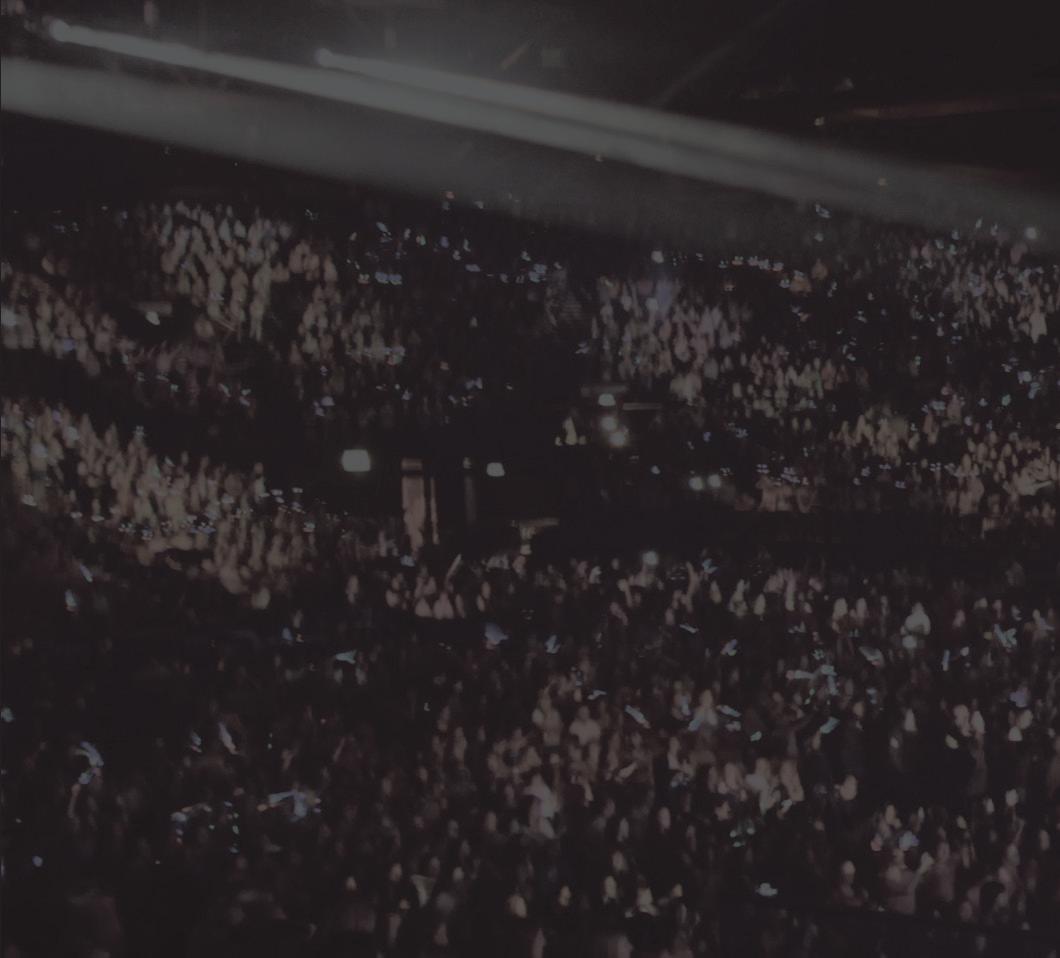

many even idolise the performers. If they decide that they don’t want camera phones at their gigs, I’d wager that audiences would consent.
New applications could also play a role in changing peoples attitudes towards recording at gigs. Having been premiered at an Alt-J gig in 2013, the Soundhalo app seemed a really interesting and effective initiative, producing professional live audio and video at gigs and making it available for purchase after the show. The app has failed to take off, which is no surprise given the scale with which they would need to operate combined with the fact that paying for music is an alien concept to many listeners. It does however provide a potential framework, alongside a refined business model, that could satisfy fans desire to capture and relive live shows, whilst affording artists the freedom to select the segments of their live performance they wish to make available to the public.
Filming at live shows is indicative of a wider cultural change and it wouldn’t be right to moan exclusively about fans that engage in it. Fans haven’t suddenly become shittier, but technology has triggered a culture change that is affecting live music more so than it affects other spheres. A number of artists and fans are beginning to take it upon themselves to bring this in to the consciousness of others, and for the sake of live music I hope that it pays dividends soon.

A year since deciding to form a band together, it seems all parts of the music industry are taking an interest in Royal Blood. Being nominated for both the MTV Brand New For 2014 and BBC Sound of 2014 awards, this is sudden recognition for a band that has only put out two songs, debut single ʻOut of the Blackʼ and ʻCome on Overʼ. Both take advantage of exciting guitar riffs, crashing drums and an ability to change pace at just the right moment. ʻOut of the Blackʼ in particular starts with a stomping introduction, before a quieter, lyrically-strong verse that sets the tone for the guitar to dominate the chorus and rampantly end the song.
The duo modestly admits the year has started well, but maintains this is only the beginning. “We still feel like weʼre just warming up.” And what a summer they have to warm up for, opening for Arctic Monkeysʼ massive Finsbury Park gigs before slots at festivals including Reading & Leeds. Before that, of course, is the small matter of a 10-date headline tour in February, with a set at The Globe in Cardiff on the 14th.
“We have so many gigs before we get to Finsbury Park that weʼre not thinking about those huge shows. We canʼt wait for this tour; weʼre just excited to be on the road again.”
To their credit they always seem to prioritise the next show, where ever it is. “[We] donʼt think we can really compare the range of shows this year, every one will be crazy.”
The tour will be supported by fellow Brightonbased rockers Tigercub, with the city having developed a real talent conveyor-belt recently.
“Brighton is quite a creative hub.”
But can Cardiff push its music scene to greater levels of quality? The guys see little reason why not, offering sound advice. “Use what you have where ever you are and enjoy it.”
The huge sound that Royal Blood may catch some new listeners out, there really are just two of them playing, but that isnʼt the biggest revelation people get. “A lot of people think we use electric guitars in the recordings or other members”. This band is just one guy on a drum kit, and one guy singing while playing a bass guitar. Itʼs a formula that is hard to perfect, and Royal Blood have done exceptionally well to create such great tunes in a short space of time. No doubt 2014 will be the year that it currently promises to be for them.
In the light of Independent Venue Week, Hannah Embleton-Smith finds out from industry insiders how Cardiff fares with small-time success
The past few years have seen drastic changes for the dynamic of Cardiff’s independent music scene. With small venues becoming increasingly concentrated around Clwb’s stomping ground, is the city seeing the revival of its independent culture or increasing marginalisation?
As the oldest record shop in the world, it’s safe to say that Spillers is Cardiff’s most established business in the music industry. Its close connection to local venues around the city means that the success of the store moves with the times. Co-owner Ashli Todd comments on current circumstances: “The past few years have been extremely difficult for everyone owing to the economic climate but at the end of the day, as a well-recognized music institution we are constantly reminded of why we do what we do.”
Todd’s view is reflected by companies across the city; they value the sense of community between local businesses just as much as the support of the public: “The live music scene in Cardiff is extremely important to the health of our shop but both feed symbiotically off each other and have an impact on the overall vibrancy of Cardiff. I think that the majority of venues and promoters appreciate we are all in it together and there is a lot of cross-promotion between these parties.” These strong connections explain why the closures of independent venues have such an impact: over the years, Spillers has felt the effects of unsuccessful live ventures, from The Coal Exchange closing its doors in May of last year to Cardiff Arts Institute’s crude transformation into a venue for private parties and executive events.
Closures and a lack of funding with the current economic climate have made recent activity to draw attention to smaller gigs and communities in Cardiff all the more crucial: it’s that activity that boosts trade across the city, and for all the right reasons. “There's a festival coming up in Chapter Arts Centre called From Now On and we're selling tickets for it (and are extremely excited about it), so have flagged up a few of the artists’ albums on a display in store,” Todd continues. “The things we promote are things we the staff feel passionate about, so it's done with the intention of informing and sharing, not to cynically squeeze an extra sale or two.”
Womanby Street plays no small part in these forward motions. Venues dotted along the alternative stretch have been instrumental in raising awareness of the talent Cardiff has to offer, with no little mention going to the ever-thriving Clwb Ifor Bach. Newcomer Urban Tap House is another perfect example with its solid ties to Jealous Lovers Club, the promoter responsible for some of the best music springing up locally, from Kutosis to Cardiff Uni’s own Radstewart.
The street as a whole, along with neighbouring venues, now hosts two of Cardiff’s most eminent festivals. Huw Stephens and John Rostron’s success with Swn Festival paved the way for the first ever HUB festival in August 2013. Similarly a celebration of local talent and the stages that literally give those bands a platform, the three-day event proved a massive hit; long may its success continue. The festival, with Cardiff Fashion Quarter’s walls of graffiti tattoos at its core, surpassed its aim of becoming
recognised as a dynamic music quarter in the city: it brings forth a youthful vibrancy to Cardiff which until then had been waning steadily.

Far from hemming the independent music scene in to one area, the energy generated by HUB lasted into Swn a couple of months later and has given a new lease of life to the city as far as music fans are concerned. For that reason, new UK-wide event Independent Music Week couldn’t have been better timed.
The venues and promoters appreciate that we're all in it together
Co-founder of IVW, Sybil Bell, knew of Clwb through working with the business during Swn festival. It was this collaboration that led to her invitation for the venue to become Cardiff’s representative. Bell has high praise for Clwb’s heritage and support of diverse music projects: “It’s pretty reflective of some of the best venues around the country – they don’t just stick to one format and have a predictable diary of events around the year, it’s about shaking it up and trying to bring people in from around the country.”
Bell is nevertheless realistic about the state of affairs not only in Cardiff, but worldwide: “It’s across the board. The problems that all the venues are facing is that bricks and mortar in cities are valuable but, with music venues, they’re only able to generate income in the evenings. The strain on the business in a commercial sense is huge and that’s something that needs to be addressed.”
Along with co-founder Joe Edwards, Bell has high hopes for expanding Independent Venue Week to include more venues, all in the aim of generating crowds and, fundamentally, the sort of passion for music that has defined each and every decade of Britain over the past century. “We’ve aimed to get people who have become complacent – staying in watching telly or just listening to music online instead of seeing it live – to actually ring up their friends and go along to gigs. Even if they haven’t heard of the band or looked them up before, it’s about getting people interested in live music and new bands.”
Sociological studies show that mankind is becoming increasingly centred on creating online networks and that this interdependency is causing us to evolve, even though logic tells us that self-sustainability should be the key to success. Funnily enough, that interdependency directly parallels the culture of independent businesses in the music industry. While the outcome is by no means clear, it may well be that we start to see technology giving a voice to tight-knit communities with true values where it previously touted mass culture. High quality urban festivals and Independent Venue Week are only the beginning.

Tom Connick speaks to Welsh Music Prize nominated Kutosis about latest projects and the Cardiff scene.
Your new album is coming out soon. The last one was WMP nominated - how does it feel going into the studio with that accolade behind you?
It’s a nice little boost for us, I think, because there were quite a lot of people on the judging panel for Welsh Music Prize. It was nice to know that, with minimum PR and almost non-existent plugging, our first album managed to filter through to a lot of people, so that was pretty good.
That’s what’s nice about the Cardiff music scene and Welsh music in general: it’s a lot of wordof-mouth and really supportive. How do you feel being involved in that scene?
It’s a good network of people, I think. You know, when you start a band you don’t know how to get into that kind of world, but once you’re involved and you get to know people it’s really supportive.
It’s a small community but everybody’s so passionate about music and it’s nice to be a part of that. You meet people and they end up being your friends as well.
‘Fear of Flying’ was almost poppier than a lot of the stuff on ‘Fanatical Love’. Was that a deliberate change?
Yeah I think that when we started writing for the new album, we went down two directions – a poppier, surf-y sound and a more riff-y sound. We thought they’re not

both gonna go together properly on that album, so we had to choose which direction to go.
We stopped with the jagged guitars, the probing, that kind of shouting and now we feel like we’ve written eleven or twelve songs. ‘Fear of Flying’ is quite different compared to our old stuff, but I feel a lot more confident with it and I’m hoping it just gives a platform to becoming bigger.
With the prize nomination, it must be a nice full stop on that era of Kutosis.
It was quite a busy end to last year with the Welsh Music Prize, a couple of Swn shows and then Future of the Left support by the end of the year, so it was a good end to the ‘Fanatical Love’ stuff. After that we were going into the studio to do the new album, so it was good timing really.
Finally, your live shows have got a reputation for volume - how do your ears hold out?
They haven’t! Jim’s seen a graph of his hearing and, yeah, the people at Neath hospital weren’t too happy with it. I don’t think we intentionally set out to be really loud, but it’s a different kind of loud.
With live shows It’s hard to fit in the new stuff with the old because it’s quite different. The set gets a little bit distorted if we’re playing small cities with some of the new things they just really don’t go. We need a balance.
There are three kinds of basement: that of creepy horror films, the pop-punk band and venues equipped for reams of mega-fun parties. Undertone is the latter, perhaps with a sprinkling of the second.
It’s that door next to 10 Feet Tall that’s always blasting your favourite song as you pass by and has recently undergone a compete re-vamp. It is, to put in a word fitting of its vibe, rad. The venue is quickly becoming Cardiff’s coolest, most happening venue boasting an abundance of the best nights, most intimate shows and cheapest drinks around. The re-vamp bases itself around four nights:
Bump & Grind: Arguably the biggest night Undertone has to its name, every two weeks on a Monday the basement packs out for Cardiffs only 90’s/00’s hip-hop and RnB party boasting everything from Destiny’s Child to Kanye West. Since its launch in 2012 Bump & Grind has spread around the country with spots in Bath and Bristol, both spanning from that initial celebration of all things fly in Undertone’s basement. So grab yourself a gin and juice, lean back and head on down for the C.R.E.A.M. of the crop.
Fly: If hip-hop and RnB is your thing but you were too busy riding around on your skateboard, playing Pokémon or whatever it is we did in the 90s to notice the scene at the time, or if two
parties a month simply aren’t enough, then Fly is your saviour. Fly presents the ultimate in new school vibes every other Monday so grab your 2 Chainz, roll down and jam to Drake.
Millionaires: This is possibly the most exciting prospect to come out of the Undertone re-boot. Putting a fresh twist on traditional club promotion, Millionaires promises intimate, exclusive gigs in The Basement followed by fist-pumping, knee-sliding pop/alt club nights to keep the party going. Millionaires’ first 80 cap show presents dirty pop-punkers Gnarwolves. It sold out in four minutes and looks set to be one of the most outrageous shows of the coming months, so watch this space for more big bands in the small venue and get your tickets quick!
Youth: Twinned with Cardiff Student Media, Youth gives our very own Xpress Radio DJs a chance to spin your favourite pop, disco, RnB, indie, hip-hop, ANYTHING tracks giving just about anyone the chance to dance the night away. With an everchanging array of guest DJs and possibly some spectacular bands in the future, Youth is guaranteed to remain fresh and unique with every visit.
Alongside endless other gigs and events, Undertone nights combine to make one of the most exciting and refreshingly unique venues in the Cardiff underground scene.

Singer-songwriter Frank Turner waxed lyrical to Dillon Eastoe about religious picketing, massive tattoos,and One Direction.
Tonight is the first show of the tour, how are you going to translate the live show from the smaller venues you’re used to, to playing in an arena setting?
Frank: The reason we’re doing these venues is because I want everybody to be able to buy a ticket if they want to. It’s like we could do a smaller place, sell it out, and then lots of people are excluded, loads of people start touting tickets, which I hate. So, yeah, bigger place but to be blunt it’s easier to put on a good show in a smaller venue, because you’re right there. It’s not impossible to do in a bigger place, we’ve had a bit of practice here and there - doing the Wembley show - and we’ve done support at venues like this a number of times. It takes a bit of thought and effort, I mean I should not take any credit for most of this, my band and crew have been incredible and we’ve put a show together and hopefully it’s going to retain a sense of intimacy, personality, connection and all the rest of it. I mean, I haven’t done the show yet so we’ll have to see how it goes tonight! But yeah we’ve been in preproduction rehearsals for a few days, and I’m excited about it, I think it’s going to be good.
No pyro then?
on stage playing music for a few hours and you know, I find that quite inspirational. You don’t need to muck about, you just play good songs.
Last year when you were on tour in America you received your first ever religious picket. Where does that rank in the most surreal moments of your career?

No pyro, no. To be honest with you, mainly because it’s too expensive. I don’t want to harp on about this too much but I’m proud of the ticket price on this tour; it’s roughly a third of what other gigs at this sort of venue would cost, I researched this kind of shit. And for me, that’s the thing, I don’t want to suddenly become an artist who charges £60 quid to go and see a show, because it’s rubbish. But the flipside of that is that we can’t generally afford pyro and wireless and stuff like that because there’s less money in the pot. But still...
You don’t really need it?
Yeah, that’s the thing, I totally agree. You know, I remember going to see - I should preface this by saying I am a Coldplay fan and I don’t care who knows it - but you see a Coldplay show and there’s lots of bells and whistles and tricks and sort of lights and costume changes and all of that. That’s fair enough, but then you go and see Springsteen and the E Street Band and there’s nothing, it’s just a bunch of people

Ah, that was such a great day. It was two guys and apparently they do it for quite a lot of the bands who play there. But it was a special moment. You know Iron Maiden got picketed in the States, and Marilyn Manson, stuff like that...
“
” I am a Coldplay fan, and I don’t care who knows it
If you were asked to go on X-factor and play a song, would you do that?
No, I don’t think I would. I’m not one of these people who spends their every waking hour getting angry about Simon Cowell’s existence, because I think it’s a waste of energy; it’s not going to affect Simon Cowell in any way. And in many ways what I’d like to do is draw a firm line between his world and my world, because what’s frustrating is people use the same terminology: ‘music’, ‘records’, ‘artists’, that kind of thing, to describe both, and I view them as being pretty fundamentally different. And as long as you can make sure that line exists, good luck to you, do you know what I mean? One Direction? Carry on, I don’t care, you know, have fun. But for that reason, I wouldn’t want to cross that line. As long as that divide exists then I’m perfectly happy for everybody to live and let live.

It’s a sort of validation?
Yeah! It’s a rite of passage. And it was so lovely, ‘cause we were all in the venue, just hanging out and Nigel who plays the drums came in and went “Umm, there is a religious picket” and the first time I was like “Oh bollocks is there?!” And so we went running outside and I got my photo taken with the guy which was lovely, he had no idea who I was which I thought was even funnier. But it was fucking hilarious.
When you made the switch from your heavier early work with Million Dead to your more acoustic songs, did you get much support from the friends you’d made in the hardcore scene, or was it starting again in a sense?
Umm, yes and no. I don’t want to overplay it too much in either direction, and nostalgia is a funny thing; I try quite hard not to be rosetinted looking back at things. In some ways I wanna go “No one cared!” you know? Certainly there was a moment when the last Million Dead show in London had 800 people at it and the first solo show I did in London had 3 people at it, and that was a bit of a kick in the teeth. But I got an awful lot of gigs in the early days from promoters who knew who I was ‘cause I’d been in Million Dead and I got the support on that level. Also Xtra Mile Recordings have been involved with Million Dead and they were supportive. But there definitely was a lot of people that said to me “you’re mental.” And I don’t want to kind of claim to be a trailblazer but it’s a bit more of a thing now to go from playing heavy music to playing acoustic stuff, a lot more people have done it. A lot of people thought I’d had some kind of psychotic episode at the time, do you know what I mean? But it’s weird ‘cause at the time I definitely thought I knew what I was doing, and everyone else thought I was





mental. And now everybody looks back at it and thinks I must have known what I was doing. I think I was mental. In hindsight it seems quite a strange series of decisions that I made, but you know, it’s worked out.
Yeah, you’re doing alright.
[laughs] Yeah, exactly, I’m not complaining about it.
So with your side project Mongol Horde, you went back to a heavier style of music. Was it easy to slide back into that?
Yeah, from a musical point of view because I still listen to quite a lot of heavy music. I was quite pleased in the very first rehearsal we ever had that I’ve still got my yell, know what I mean? I hadn’t done it for years and it was like “Can I still do this?” and I kind of went [Frank does a low volume imitation of his scream] and thought “oh yeah, I can”. Mongol Horde’s loads of fun, we’ve almost finished an album. It’s gonna come out soon and we’re gonna tour this summer hopefully, but I’m not gonna swear to that just yet. The reason I was never that into like Emperor, and Bathory and stuff like that, is because it takes itself too seriously, whereas Pantera, who are for me one of the fucking greatest bands of all time, could always laugh at themselves. Obviously there’s moments of extreme intensity in there, but you know there was a kind of sense of humour about it. And Mongol Horde, I’m not trying to say we’re a comedy band but there’s definitely a lot of tongue in cheek stuff there, and I love it. Incidentally I think that’s one of the things that for me set Million Dead apart from quite a lot of our contemporaries, there was quite a lot of humour in it, and it’s funny to me how a lot of people don’t get that.
When you first picked up a guitar, what was the first song you learnt to play? Or was there a particular album that moved you to pick up a guitar?
[laughing] Ahh well, yeah - that’s two separate questions really. The first band I fell in love with, and who remain one of my favourite bands, is Iron Maiden. They were the band that got me into music, and I love them. I’ve actually just got a massive Iron Maiden tattoo done on my leg! [Frank eagerly pulls up his trouser leg to show me. He’s right, it is massive.] But from them I sort of got into Metallica, and then Pantera and then..... I shudder to say this out loud but Guns ‘N’ Roses, a band who I now despise. But at the time the first song I ever played on guitar was ‘Knocking On Heavens Door’, which is obviously a Bob Dylan song, but I thought it was by Guns ‘N’ Roses. In my defence I was 11 years old, so, you know...
But it was Bob Dylan so it’s fine.

I should have just lied at this point, tell people “yeah, I learnt a Bob Dylan song”. But the truth is I thought it was Guns ’N’ Roses.




You can forgive people for thinking that pop punk is for kids. The steadily growing queue of fans that snakes its way around the streets surrounding Cardiff’s Students’ Union consists predominantly of 14 year olds who have just discovered hair dye. That aside, the sheer amount of people suggests the show deserves at least some attention.
First to take the stage of the sweaty, beer-scented club venue are Divided By Friday. Storming through the pop-fuelled tracks of their recent release ‘Modern Memoirs,’ the trio warm the eager crowd nicely. Not quite enough, though. Decade, the South West’s newest addition to the scene completely steal their thunder. Latest release ‘Good Luck’ provides the band with more than enough ammo to keep the near to sold out venue hanging on their every word. Reeling off melodic choruses like it’s their day job (it isn’t, yet), they prove that British pop punk is contending with the best.
Man Overboard pick up where Decade left off, charging

through a set of crowd-pleasers with such fervour that it’s impossible not to reciprocate. ‘Love Your Friends, Die Laughing’ sees the 1000-strong audience leading the final refrain; the New Jersey quintet have this party in the palm of their hand. Playing as if it’s their own show, you almost forget that the headliners are yet to arrive.
However, when they do arrive, it’s clear exactly why everyone is here. Mayday Parade unveil hit after hit from ‘Jamie All Over’ to ‘Oh Well, Oh Well.’ The newer additions to the canon are received just as well, but nothing comes close to the singalong prompted by the addition of a keyboard to the stage.
‘Miserable At Best’ leaves lead vocalist Derek alone with the most absorbed crowd of teenagers you’ll see in a long time. The band may be forever remembered for the most stripped back song they’ve ever written, but that certainly doesn’t take away from their ability to put on a bloody good show.
Charlie Mock


It’s safe to say that merely 12 months ago, most people would not have heard of Daniel Avery. A resident of the infamous Fabric club in London, he has been quietly grinding away, producing a handful of EP releases and remixes for larger artists. However, at the end of 2013, following the release of ‘Drone Logic’, his debut album, he has truly become the man of the moment: commanding dancefloors and nightclubs internationally, finding himself in Cardiff the other week, joined by a legion of expectant fans lucky to catch such an exciting artist at a relatively early point in a inevitably successful career.
Joined by the local Bodhi duo (this time in their separate aliases, ‘Dubs’ and ‘Owls’) plus the criminally underrated talents of Jauge, both bringing a pleasing amount of house music and all things bass-orientated, the Groove Theory collective responsible for this night have never shone in a more exciting and impressive light. The show’s visuals, showcasing the talents of local artist
‘Snowskull’, perfectly complimented the acid-flexed electronica brought to the table by headlining act Mr. Avery himself; right from the off, his unique blend of dark, slowed tempo sounds simply cannot be emulated. Deserving of special mention were ‘Naïve Response’ and ‘Drone Logic’, both highlighting Avery’s dance-floor appeal and confident brand of Berlin techno via Britain. Ending with the kind of classic, hypnotic acid house responsible for heavily influencing his sound, it was clear that everyone, be it new fans or old, electronic music lovers or just tag-alongs, had enjoyed the night. Groove Theory’s tactic of booking such a talented and upcoming player in the scene diversified audiences’ music knowledge and expectations of such events, all the time strengthening the local scene. Once the lights went on and the speakers’ hum faded out, it was difficult to imagine we’d been in any thing other than a European festival, not the space above a cocktail restaurant. George Atkins
London Grammar’s UK tour has been eagerly anticipated. Solus is illuminated by a thousand smartphones; Cardiff waits to watch it through a thousand cameras. There’s a buzz of conversation, which unfortunately fails to subside even after Hannah Reid’s opening note.
Although a complete sellout, London Grammar’s live performance is not as gripping as expected. Hannah Reid is exceptional, and she sings beautifully. ‘If You Wait’ encapsulates everything the ‘90s loved with trip-hop, but lacks diversity. Each song is of a similar tempo and melancholic tone, somewhat more suited to a post-heartbreak and self-pitying night at home.
London Grammar are perhaps unsuited to Cardiff’s SU, known for its unsavoury Saturday nights and undignified sports socials.
Ironically, their strongest moment comes through their cover of Kavinsky’s ‘Nightcall’. The trio has thus far been carried by Reid; her vocal power and aura on stage are enough to justify a
solo tour. “This is the only song on the album we recorded live”, says guitarist Dan Rothman. Unsurprisingly, this is the first time tonight London Grammar look and sound like a band, rather than Hannah Reid with a backing track.
One cannot help but wonder where London Grammar will go from here. In no way is this a bad response from a Cardiff audience, but the support isn’t overwhelming, either. At times, ripples of unrelated conversation in the audience can be heard louder than the band. Maybe it’s fashionable to like London Grammar. This is a sold out gig, yet most people are oblivious to the live music they’ve paid to see. Some even seem confused with the concept; comments such as ‘is that a REAL piano?’ will pierce the ears of regular gig-goers for weeks on end. Credit must go to the set design and lighting teams - Grammar are aesthetically sublime, their encore visually stunning. This is at least one thing to feel happy about. Tom Reeder

Since the release of their debut album, Bombay Bicycle Club have been quietly working their way to the top of the British indie scene. With the release of ‘So Long, See You Tomorrow’, they don’t look set to stop any time soon. The commercial success of their last three albums has allowed Bombay Bicycle Club to release their latest venture entirely in their own way and out of their own studio, a fact which is immediately noticeable from the way the album plays, finally reaching the levels of musical innovation Bombay have always strived for but, before now, never quite achieved.
The distinctive sound of frontman Jack Stedman’s lead vocals supported by the summery, joyful melodies Bombay Bicycle Club have become renowned for has been warped and heightened by a wide range of cultural influences. Written across three continents

Four long years since their full length debut The Fool, Warpaint open their self-titled follow up with an apology. Seconds into Intro, drummer Stella Mogwaza makes a minor error, drawing attention to it with a scream and a “sorry”, then shrugs it off and begins an impressive percussive performance, setting the tones for band and album. ‘Intro’ has a rollicking drive and guitars that weigh ambience and unease, clearly intending to establish the theme to come; but this momentum is lost on ‘Keep It Healthy’, an exercise in Celtic harmonies that evokes Sinead O’Connor’s vocals but none of her ballsiness.
With single ‘Love is To Die’ though, a stride is established in tune to Mogwaza’s drum. The heavywashed, fragile voice and staccato guitar ally with her to remind one of Massive Attack. On ‘Hi’ and ‘Biggy’, as the electronics are ramped up Warpaint
on a worldwide search for inspiration, ‘So Long…’ draws from ideas of traditional Indian, Japanese and European culture.
While overall this album further improves on previous records, Bombay Bicycle Club are yet to surpass their only vice. A smattering of weaker filler tracks break up the album slightly and ultimately leave you skipping around rather than listening in its entirety. Don’t let this stop you though; ‘Carry Me’ will happily reside in your head for weeks, ‘Home By Now’ will put a lump in your throat and ‘Luna’ will have you dancing round the kitchen. With what’s shaping up to be a long, successful year of sold out shows and high profile festival appearances for Bombay Bicycle Club, ‘So, Long See You Tomorrow’ may be the perfect soundtrack and quite possibly their best work yet. Henry Boon
3/5
begin to bizarrely sound like darlings of the Bristol trip-hop scene, the former track crying out for a Tricky guest verse to add grit and sheer, surreal hilarity (remember his guest appearance with Beyoncé during her Glastonbury headline slot? Yes, it happened). As a final reference point for their cap, chief engineer Nigel Godrich gifts the same Eastern flavours to ‘Disco/Very’ as he did Radiohead’s ‘Paranoid Android’. As good as it feels to smugly recognise a producer’s trademark, it doesn’t match up with the echoing O’Connor bent singer Emily Kokal has put on her voice for this record. Similarly, Godrich’s typically ‘dense’ finish seems at moments, such as on ‘Feeling Alright’, as if he is over-treating a track that didn’t merit inclusion. Ultimately, this album has been too heavily washed, and seems to have shrunk in stature as a result. Jimmy Dunne
There’s something very special about the construction of East India Youth’s debut LP. Somehow, William Doyle has managed to make an album which is sporadic, indecisive and yet beautifully flowing all at the same time. With influences ranging from David Bowie and Sufjan Stevens to Factory Floor, any attempt to pigeonhole this album into one given genre would be an insult to the versatile and talented display of musical understanding. ‘Total Strife Forever’ is a nostalgic throwback to 80s synth and dream pop in tracks like ‘Heaven, How Long’ and ‘Dripping Down’,
whilst simultaneously sitting right on the cutting edge of contemporary techno and house in tracks like the apocalyptically climactic ‘Hinterland.’
Don’t let the punny title fool you, this is no way a parody or in any other way linked to Foals; it is a deadly serious, standalone piece of work.
The four-part title track is scattered throughout the album and comparable to a classical symphony. It builds and swells, before fading into static in the conclusion of what is clearly a carefully thought-out and painstakingly constructed debut LP.
Henry Boon
Tipped to be amongst metal’s ones to watch of 2014, California’s Of Mice & Men have seem set to make their biggest steps as a band yet five years on from their formation, following the introduction of bassist and clean vocalist Aaron Pauley.
On second track ‘Feels Like Forever’, the combination of Tool-influenced verses and the kind of big choruses that drew former Paramore producer David Bendeth to get involved in the album shows us that Of Mice & Men are onto a winner. Their previous metalcore sound is not abandoned, but throughout 'Restoring Force' they
seem to have their eye on rock’s mainstream more than ever before, thanks to the clear production of Bendeth and noticeable hints of fellow Californians Linkin Park; the chorus to ‘You Make Me Sick’ sounding more like the first two Linkin Park albums than Linkin Park themselves have done in over a decade.
Earlier offerings showed Of Mice & Men writing strong material, but 'Restoring Force' is the sound of them creating a more realised identity, with the crossover potential to promise one of heavy rock’s most exciting offerings this year. Alec Evans 4/5 4/5
